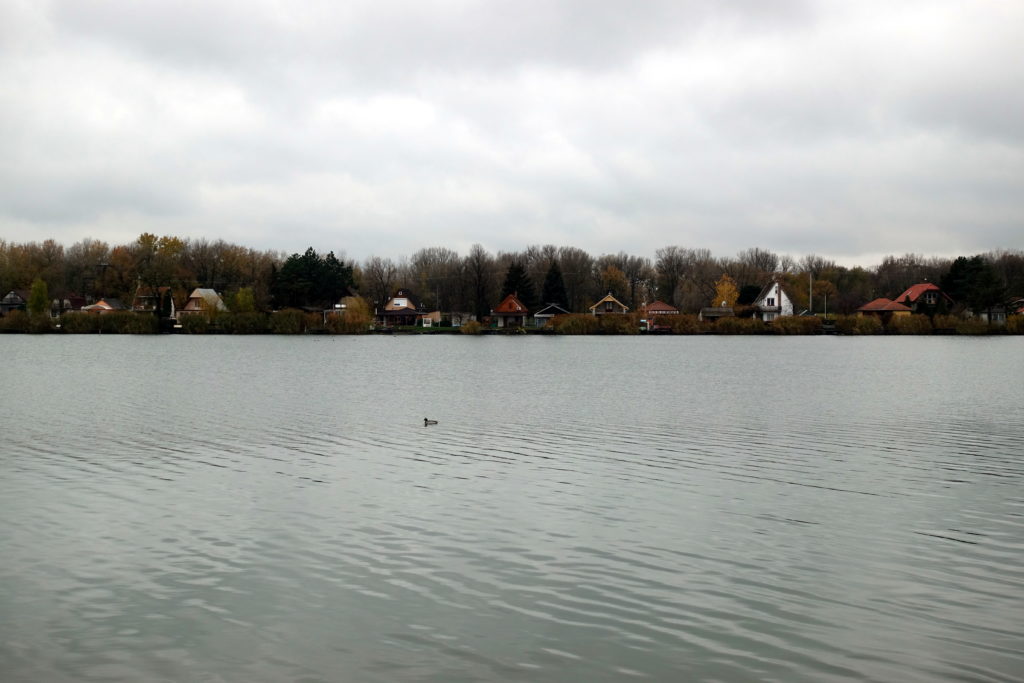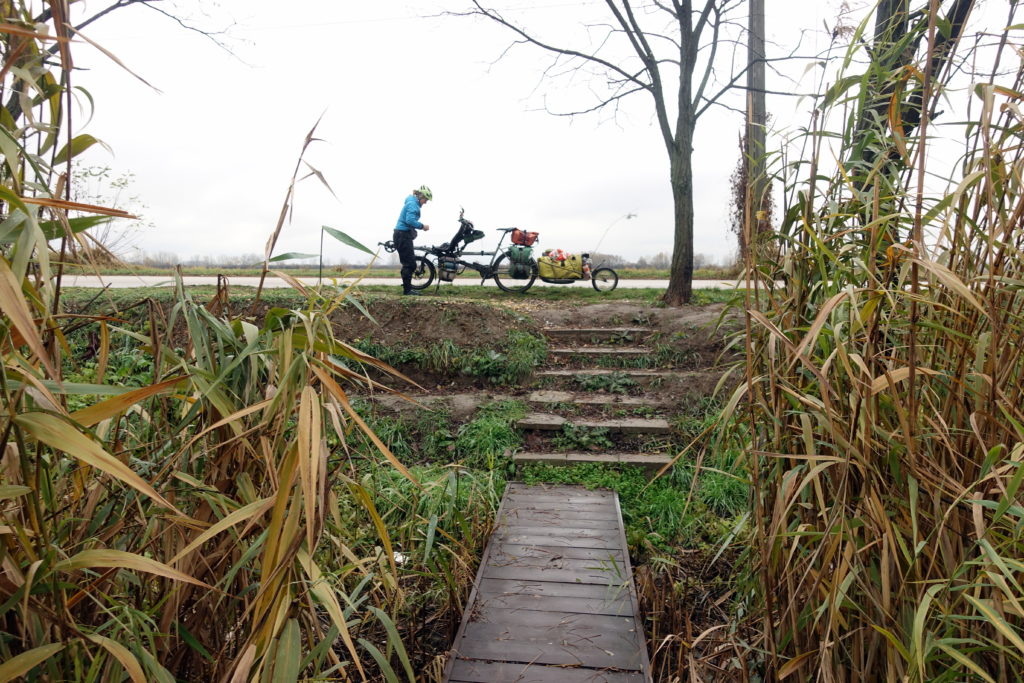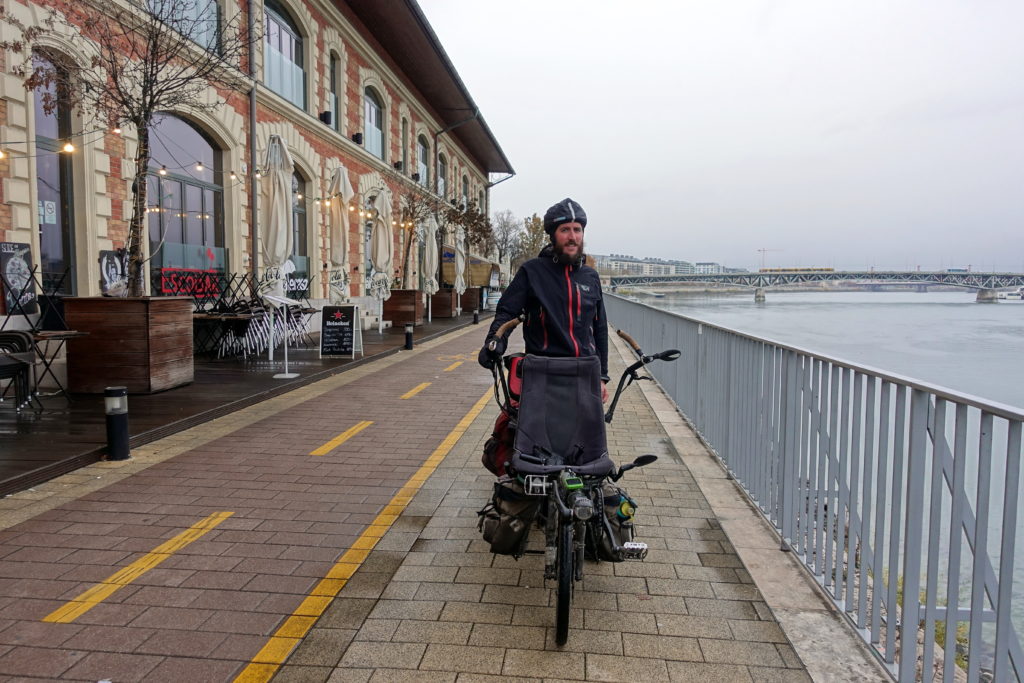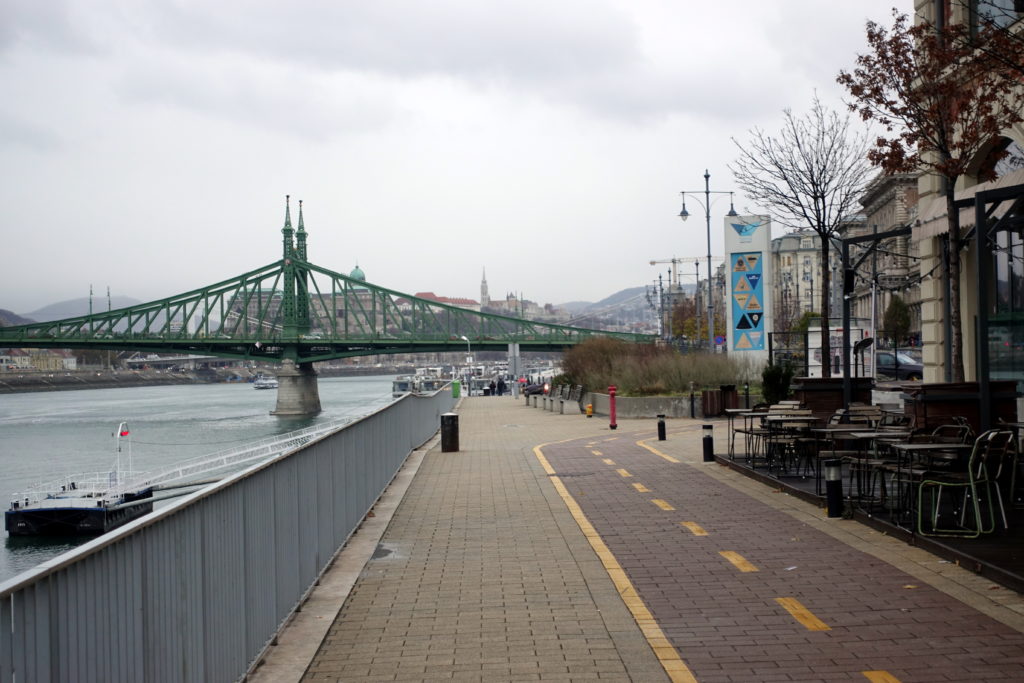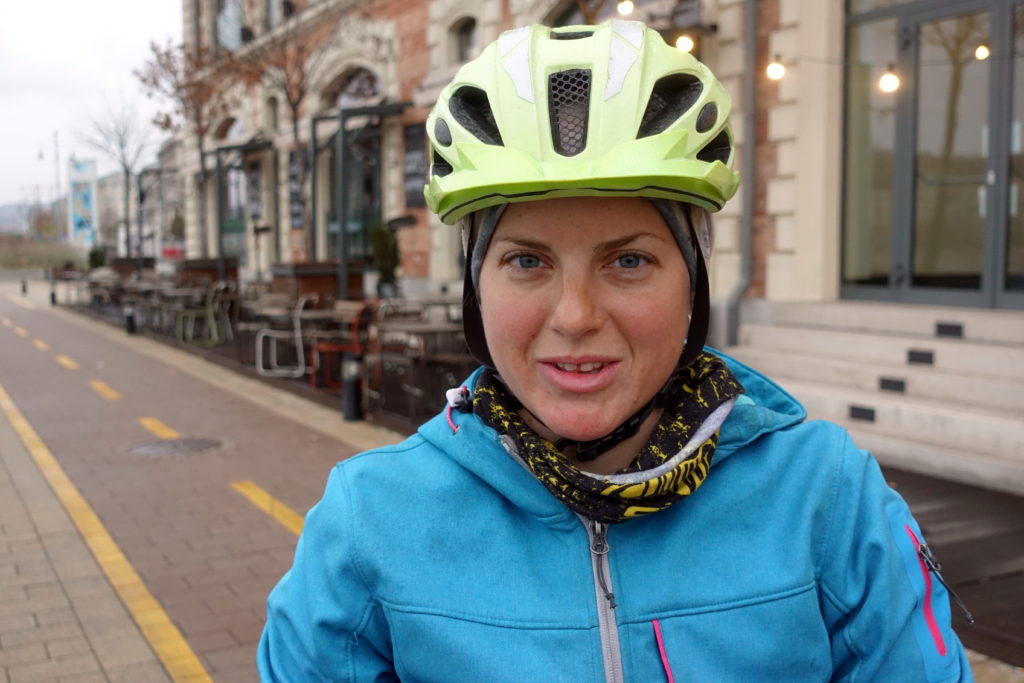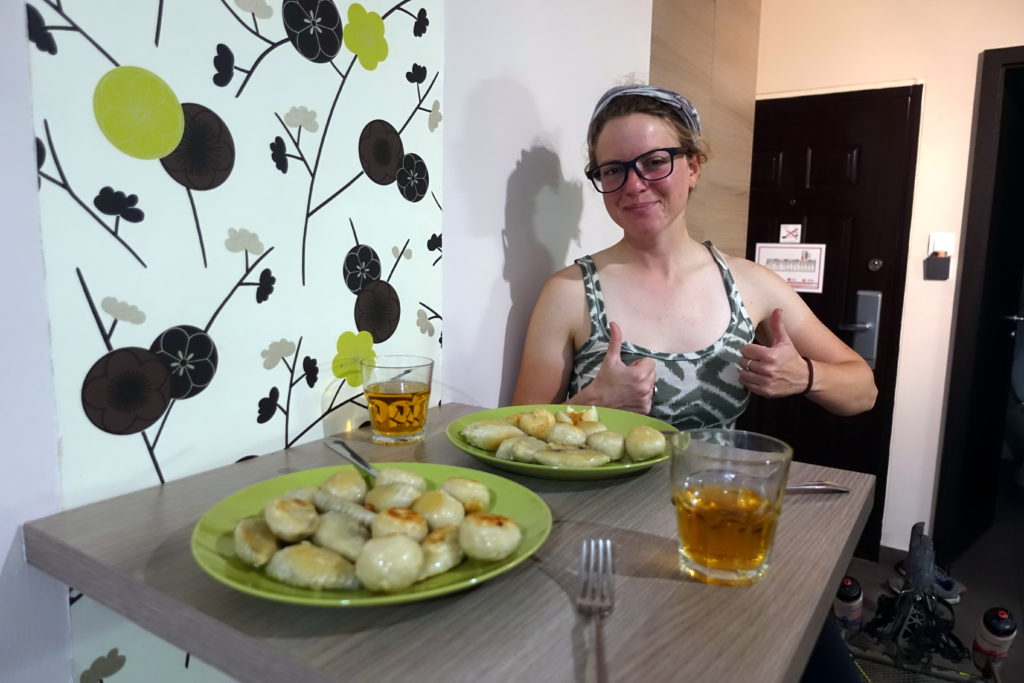From Istanbul, we had tried to figure a route back home by splitting to way into three parts: first Istanbul-Belgrade, then Belgrade-Budapest and finally Budapest-Augsburg (the three parts not being equidistant, but the road after Budapest is very obvious all the way to the end. So, getting closer to Augsburg, we could finally be able to estimate the number of days left on the saddle, and starting to count backwards with the constraint of being back in Augsburg the 18th of December (Cassie’s parents arriving the 19th in Germany), we figured that we could spend three days in Budapest.
After days of cycling in the rain, the weather turned to sunny but freezing cold in Budapest – we are still not sure what is a better weather for cycling versus sightseeing – and we started by visiting the most remarkable building of Budapest, the parliament building. Just as we imagined it, it is a very impressive construction, and very scenic on the shore of the Danube. We however felt that the visit was deceptive, overpriced and more of a tourist trap than anything else: you mostly see the corridors and stairs, a short glimpse at the parliament room, a long explanation at the very important symbols of the Hungarian monarchy (which is funny since Hungary is a republic and has not had a king for a quite a while now) – this very much felt like the story of “King Ottokar’s Scepter” or maybe an attempt to sell monarchy-crap-souvenirs?
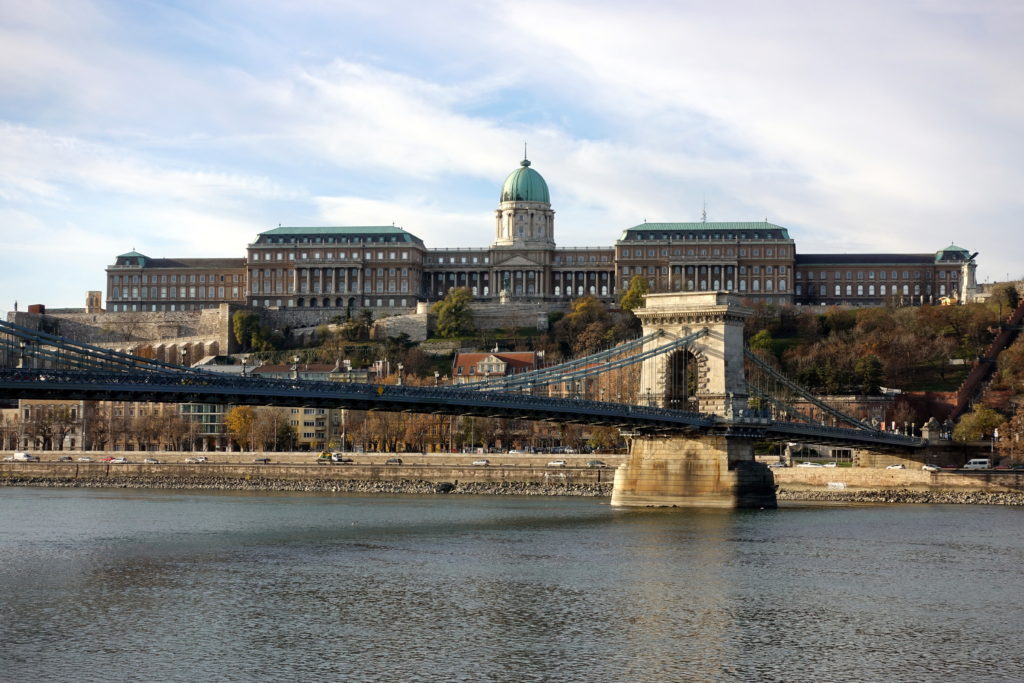
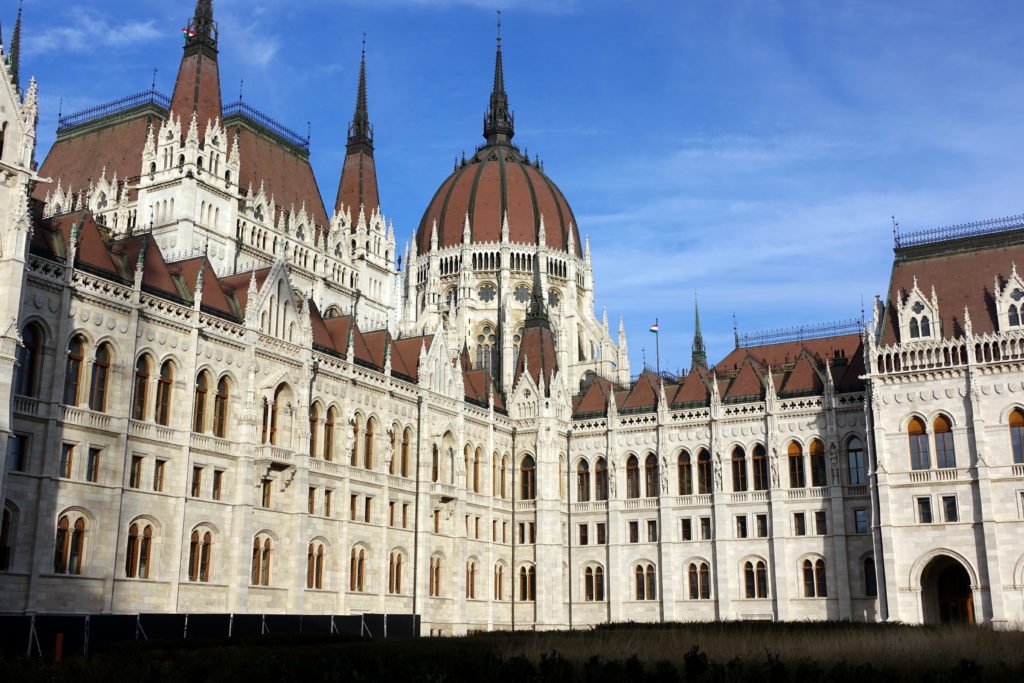
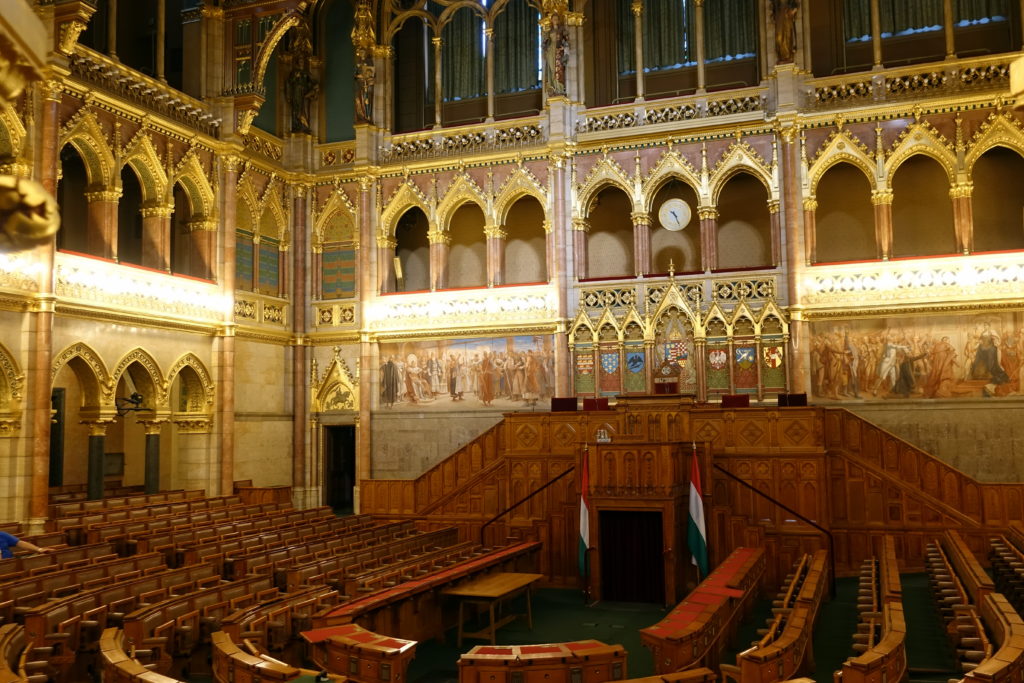
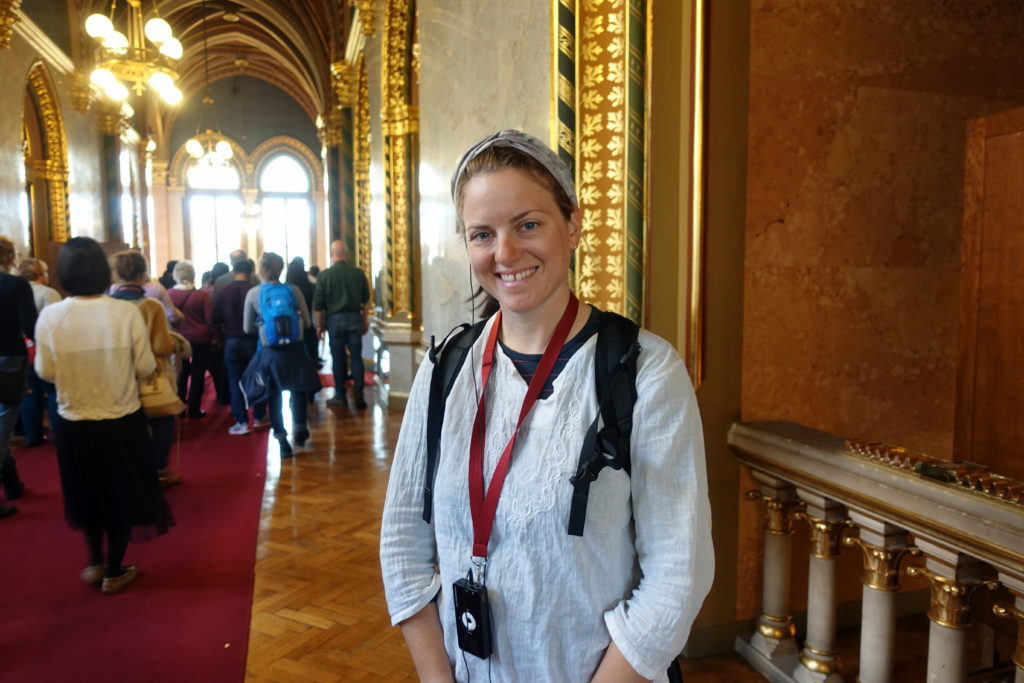
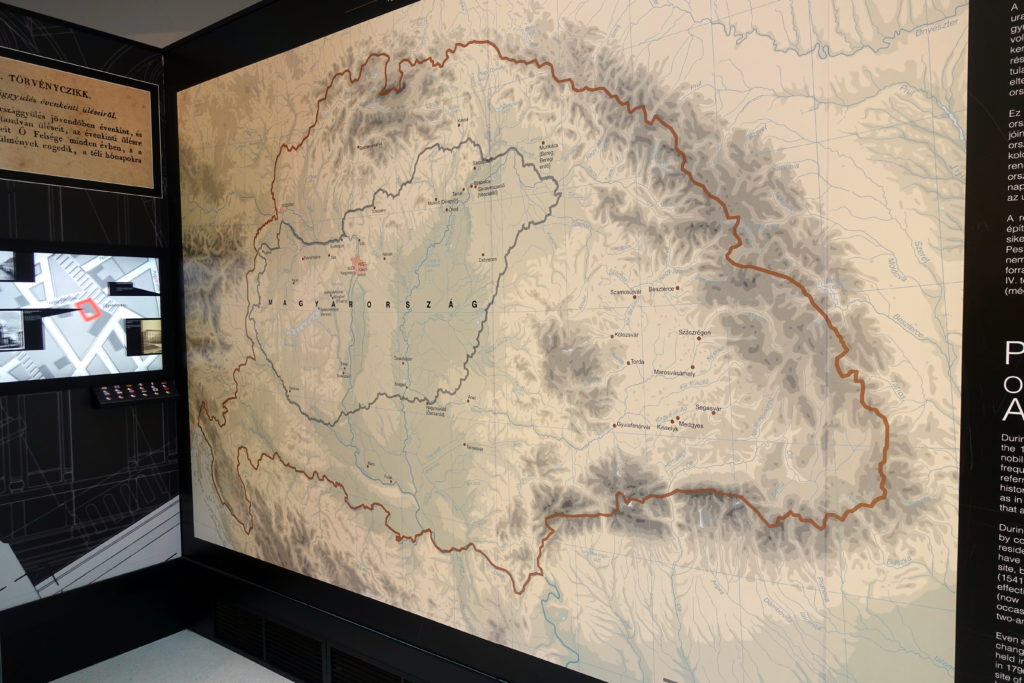
A bit incensed by the high price of entrance tickets everywhere, Cédric and I decided to wander around the city and enjoy the sights from the outside. From the parliament, we crossed to the Buda (west) side of the city and wandered through the Fisherman’s bastion and Citadel area. Despite the odd time of year, there were still plenty of other tourists hanging around and posing for their online social media narcissism pictures. We find normal posing and picture taking okay, but things get bizarre when people take off their coats, take some high-heel shoes out of the bag for a few minutes, in freezing temperatures, hop up on a ledge, and do a range of poses, imitating a few tens of thousands of other people that have already taken their shot the current year, while their friends snap away. The rest of the day, we wandered around more of the city and searched for a cheap mulled wine (which we finally found at a Lidl). The next few days in Budapest were spent walking around more corners of the city, taking us from City Park to the Gellert baths. We also visited the Hungarian National History Museum to gain a better understanding of the country and its origins (along with avoiding the cold outside). It was peculiar that we didn’t find any of our sartorial friends mulling around the museum.
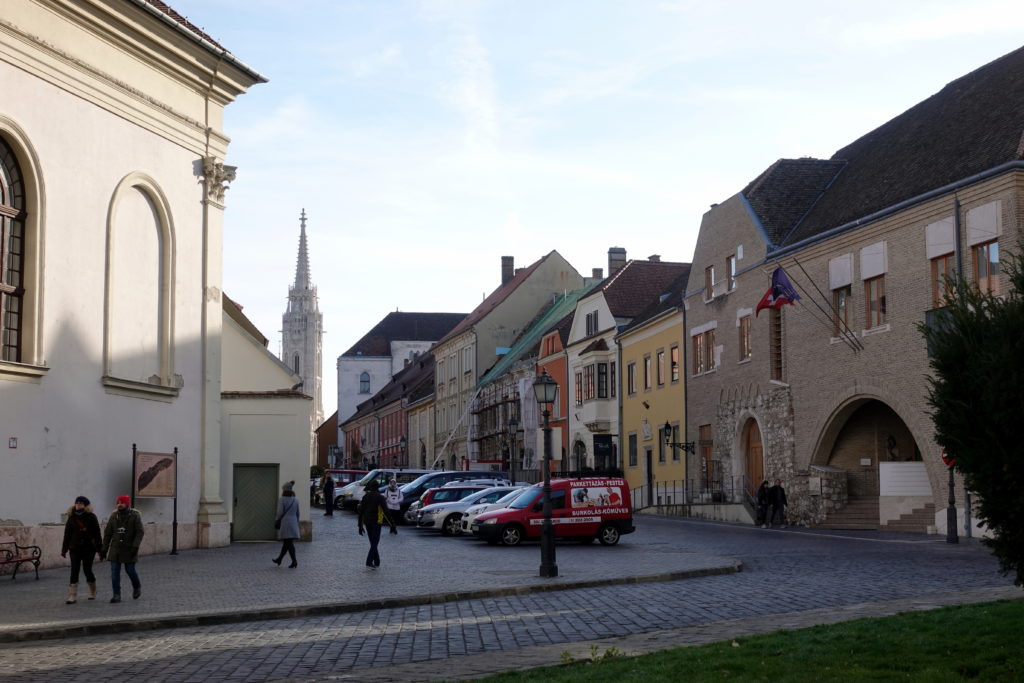
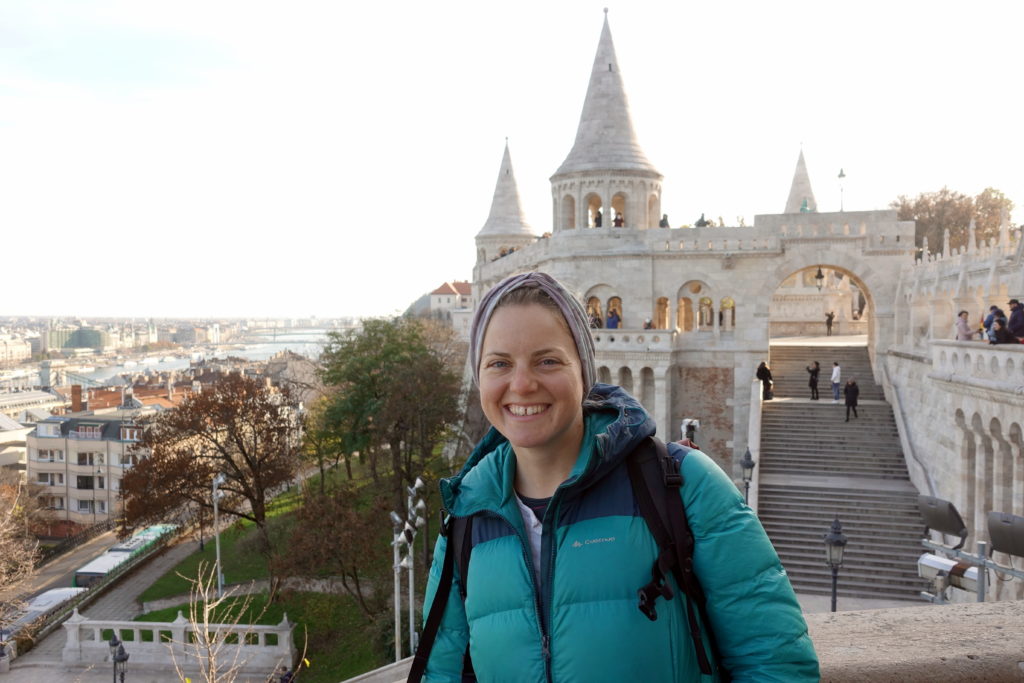
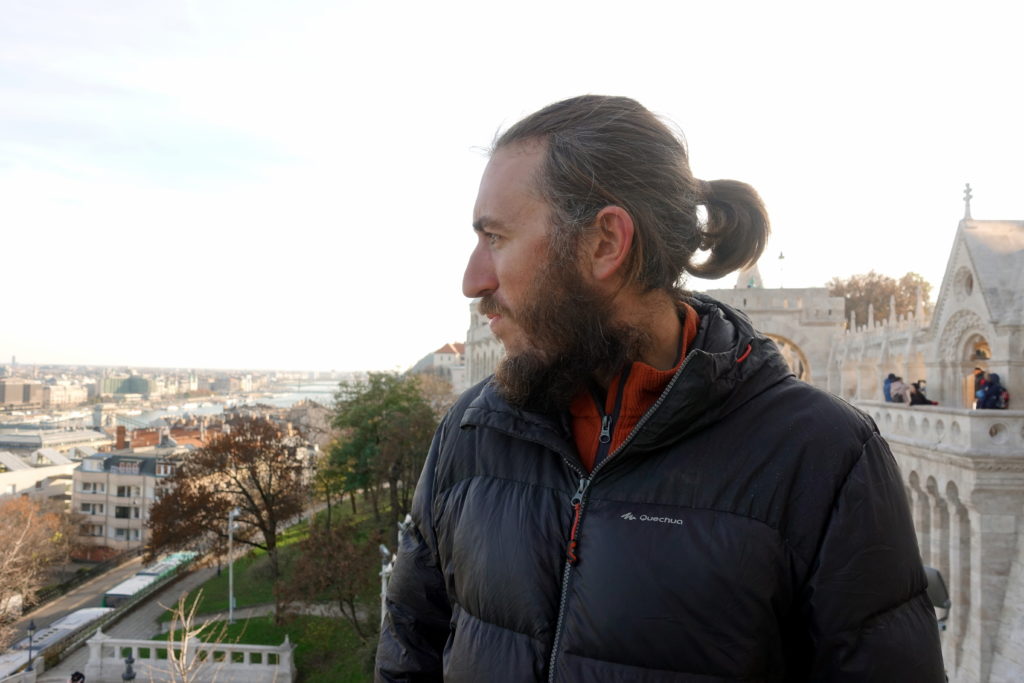
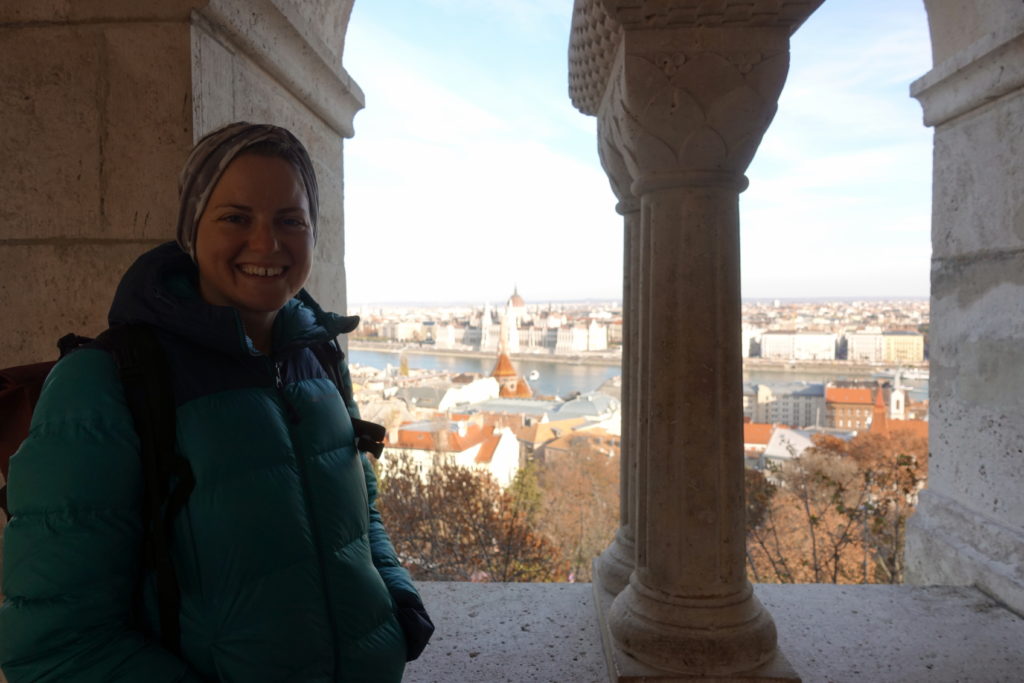
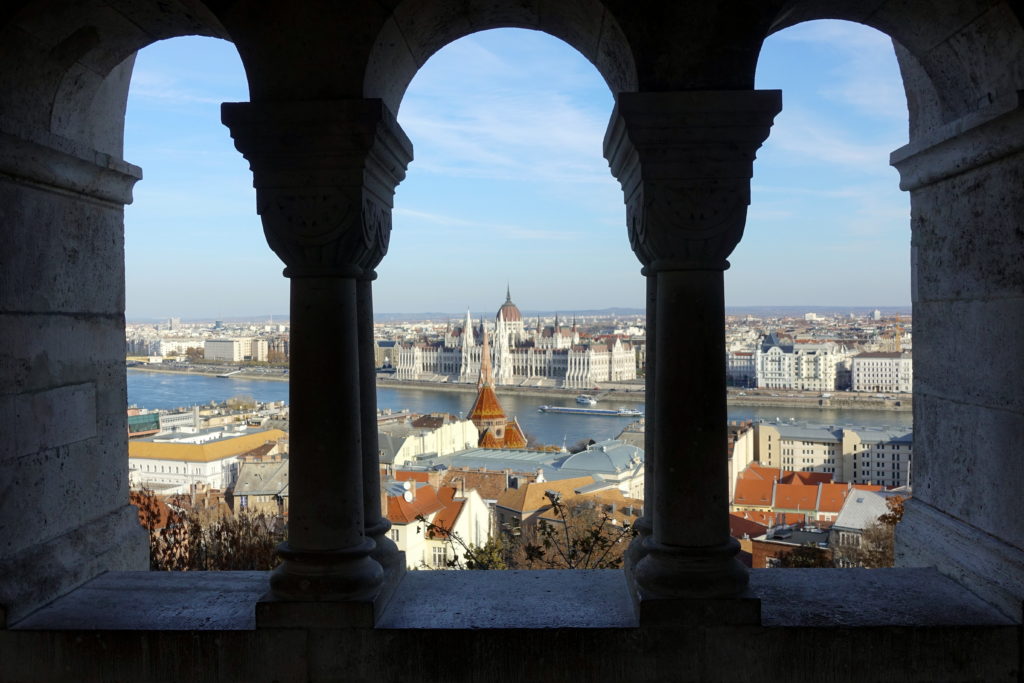
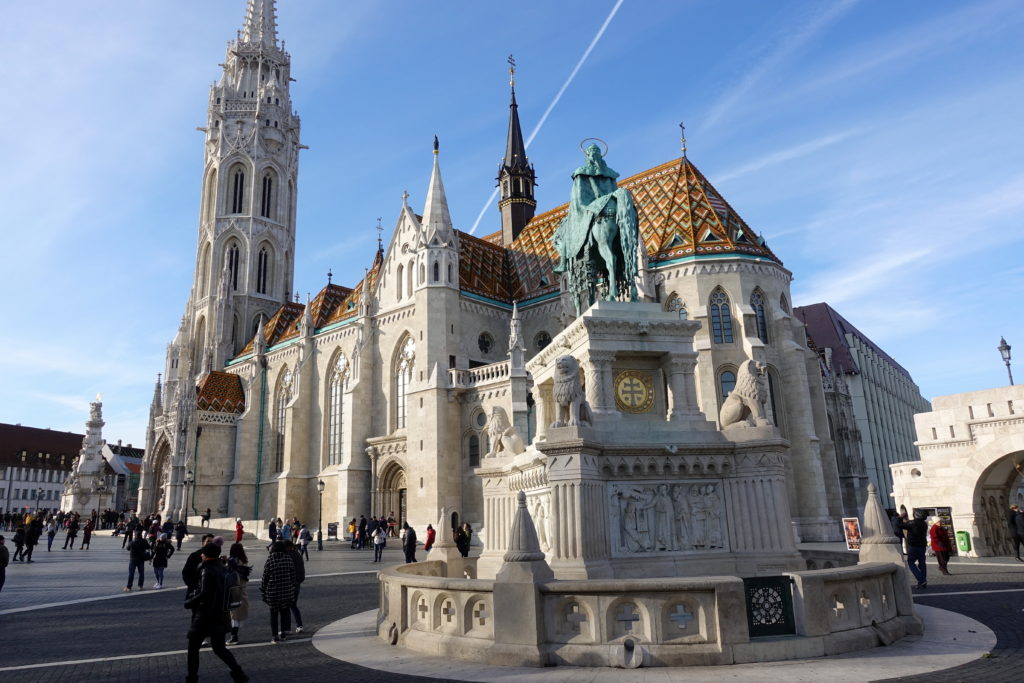
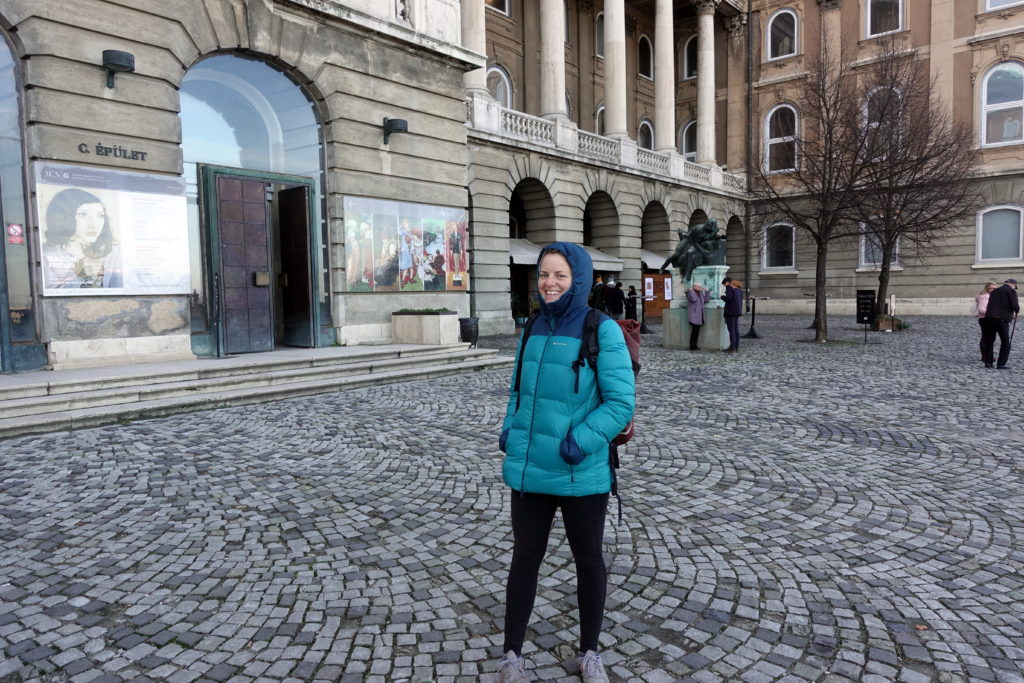
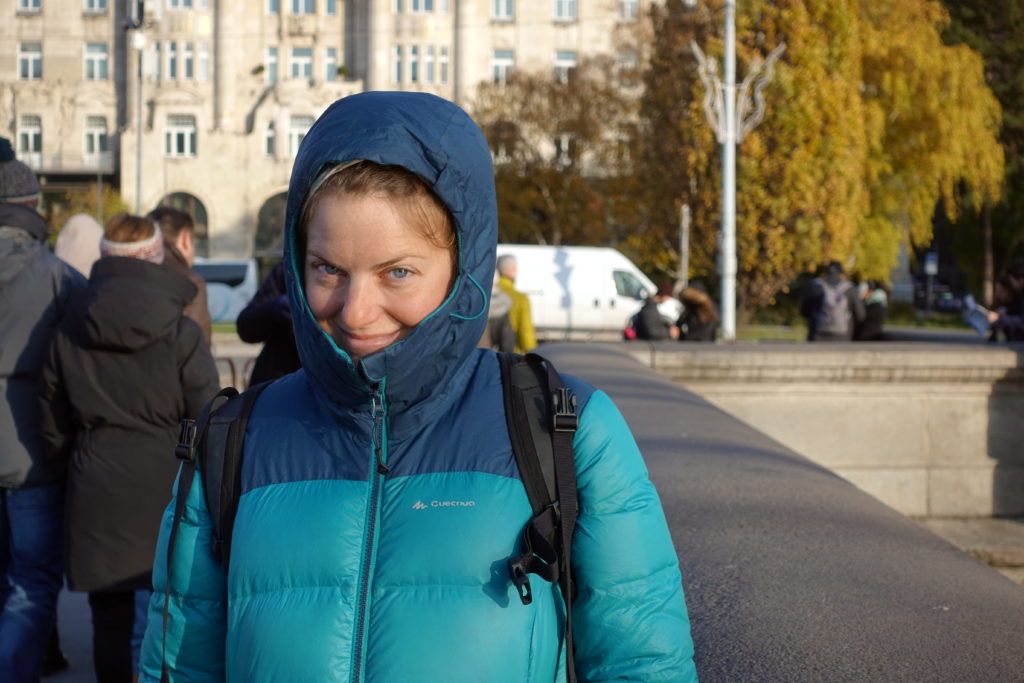
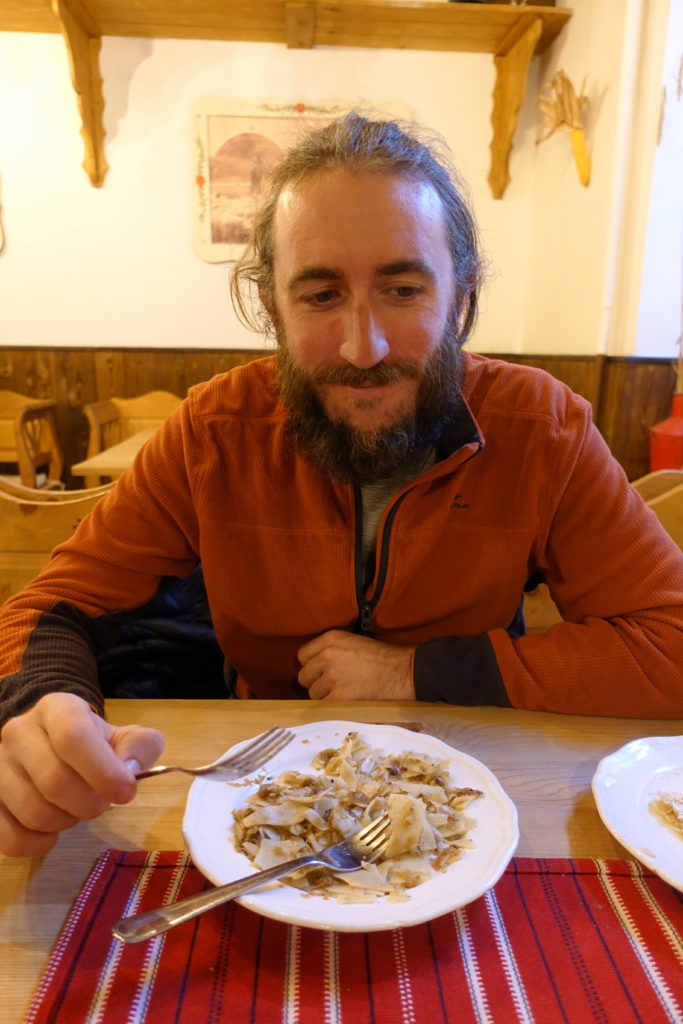
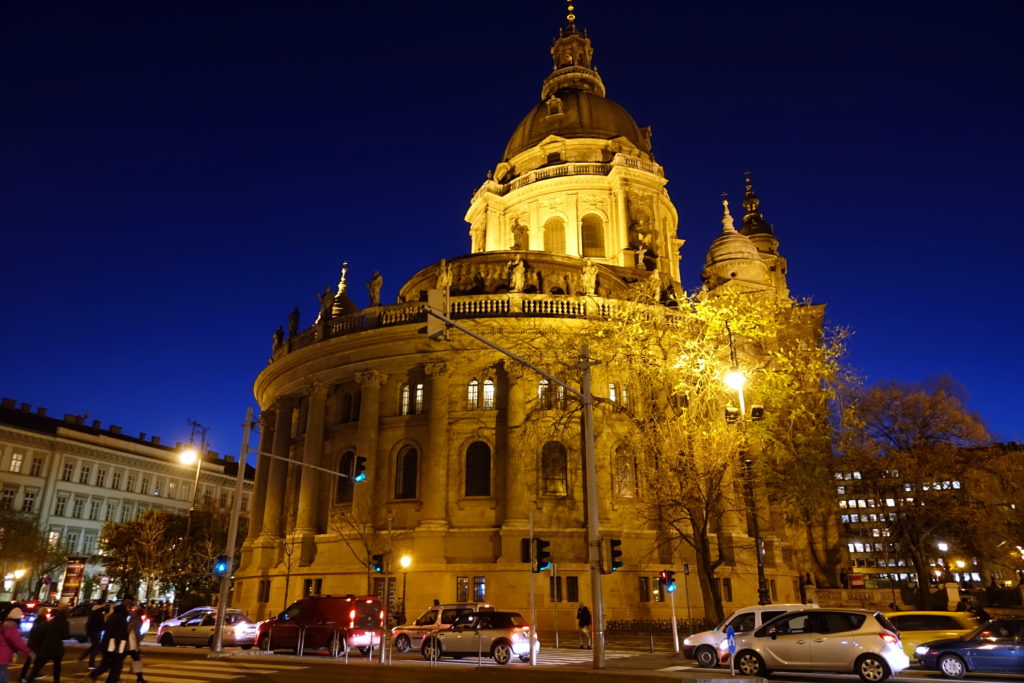
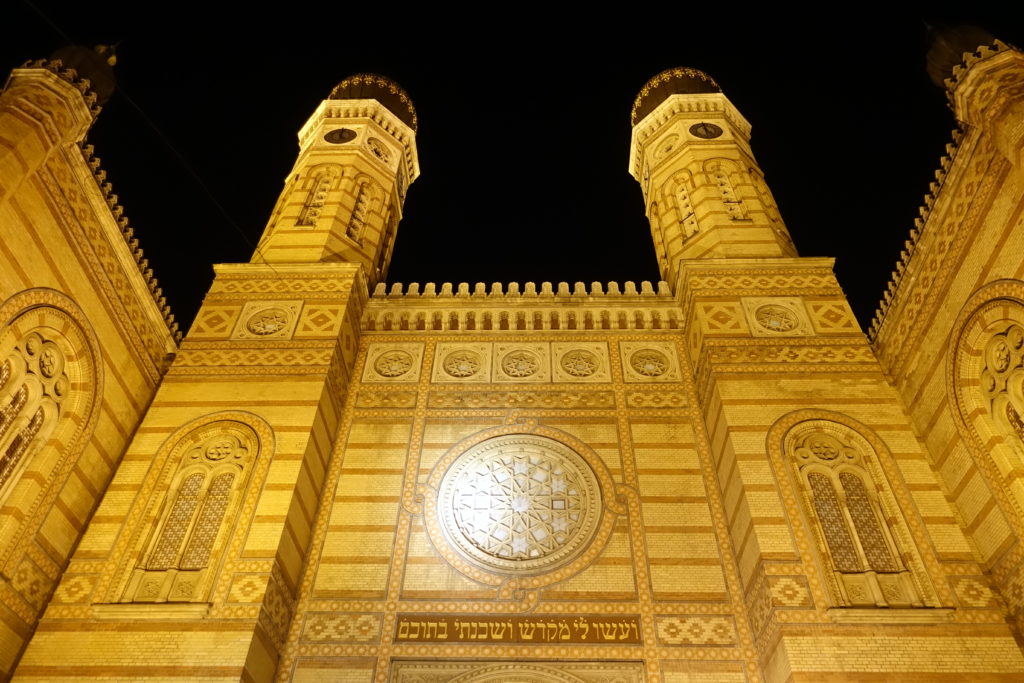
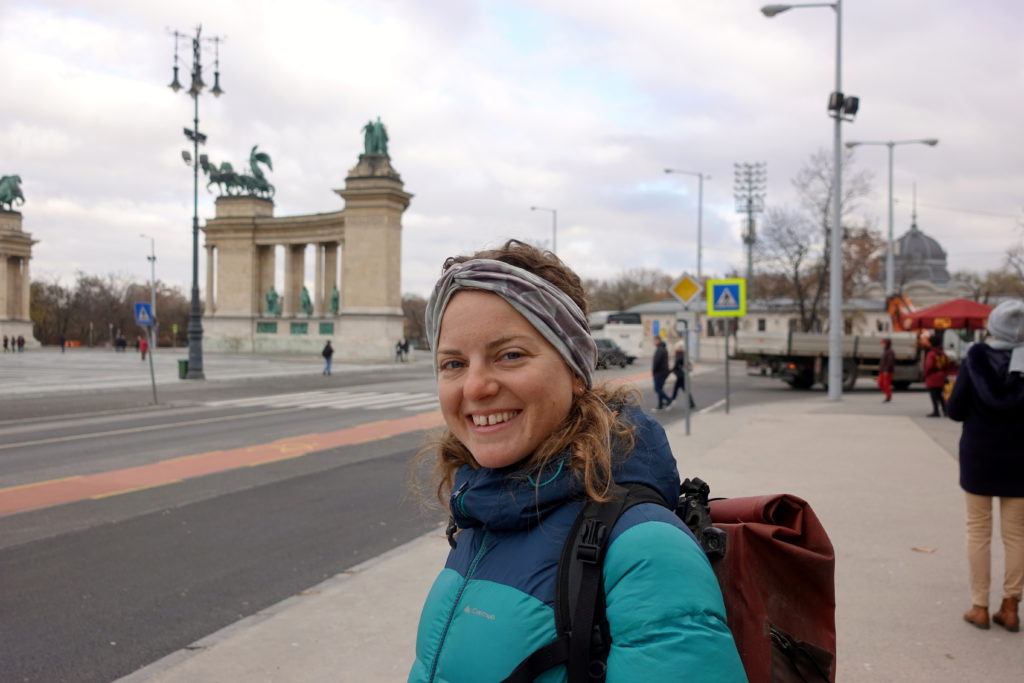
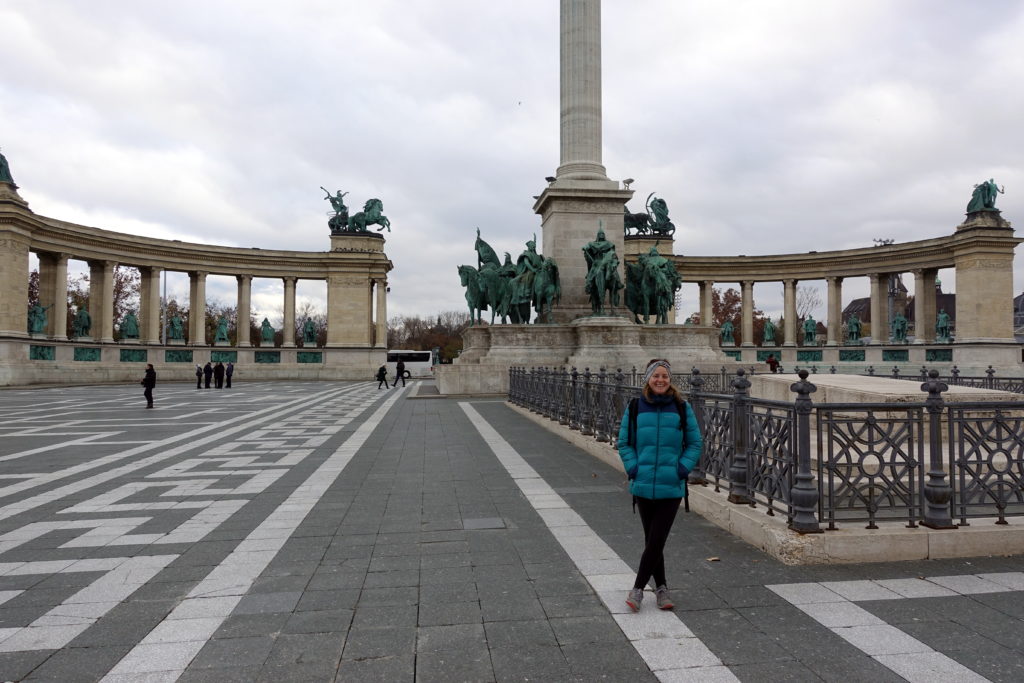
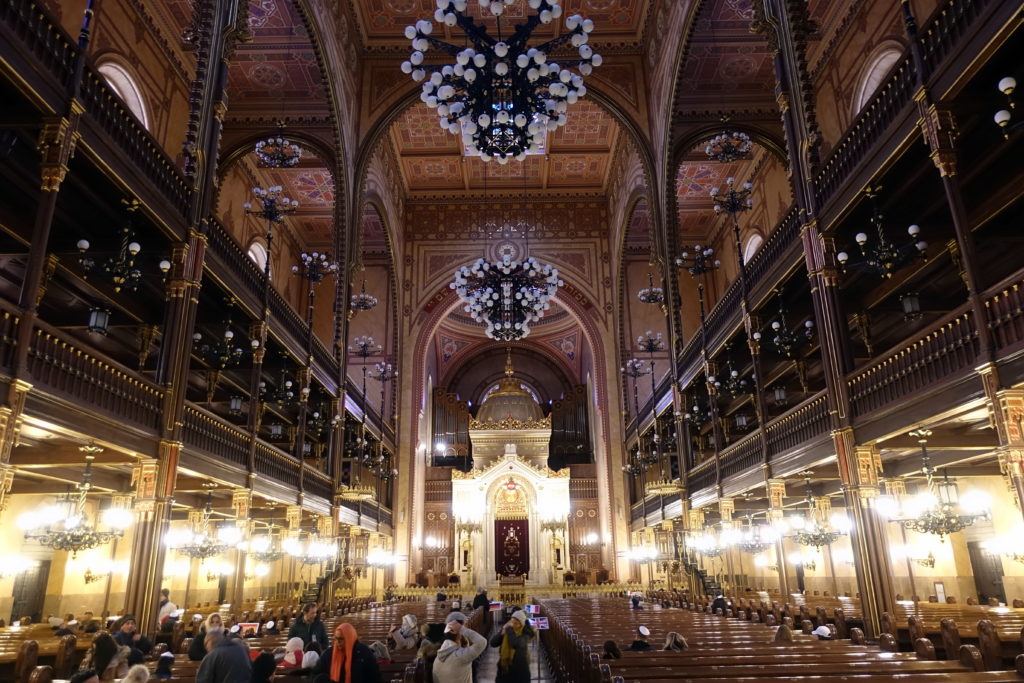
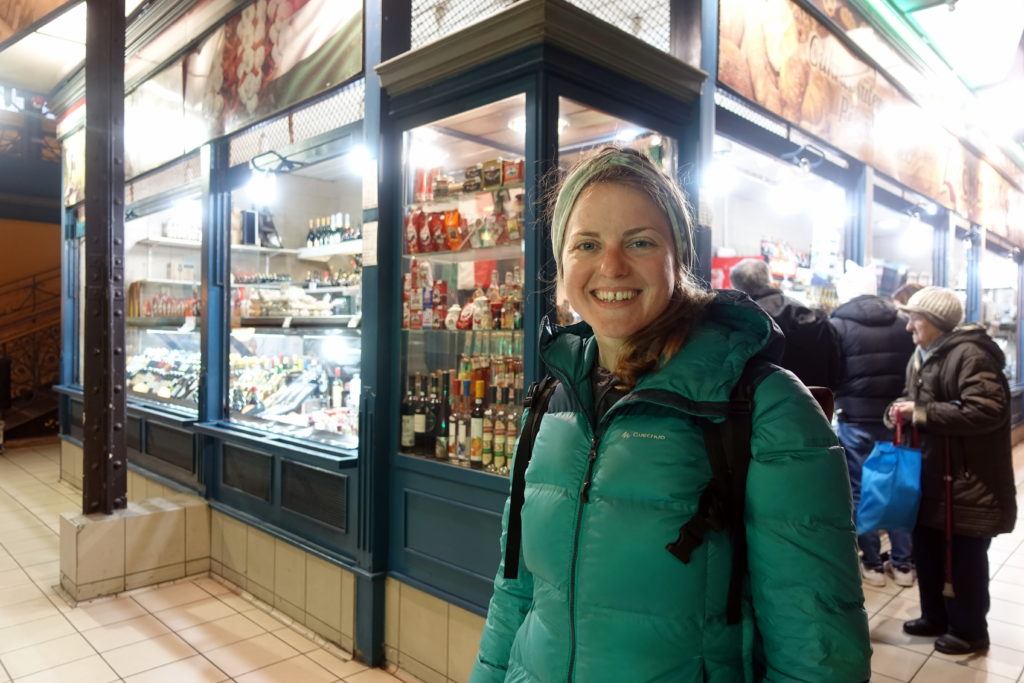
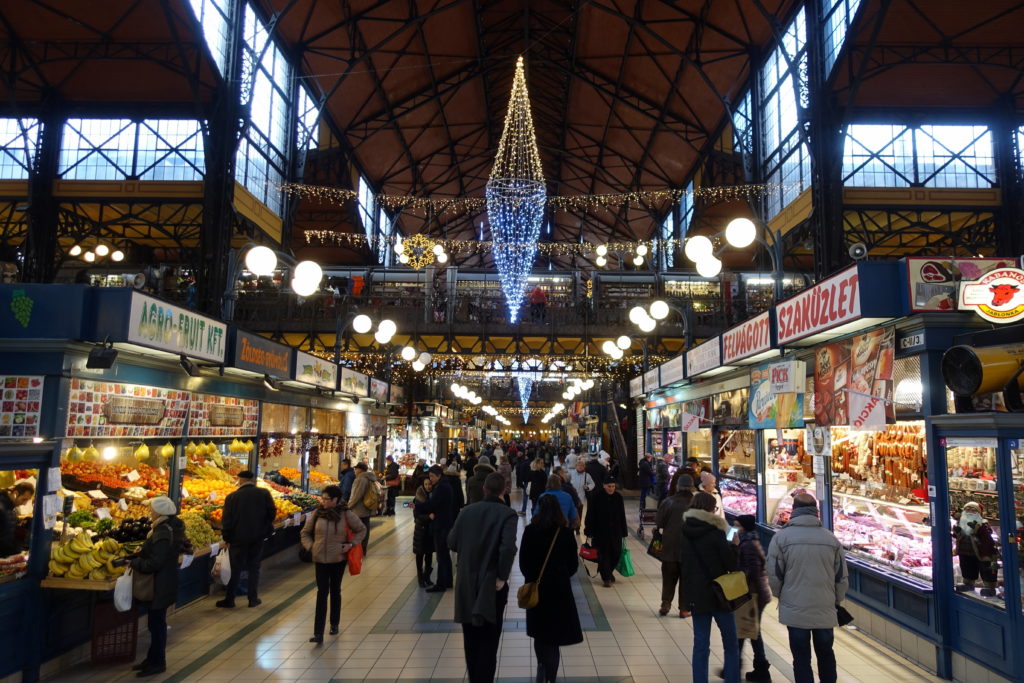
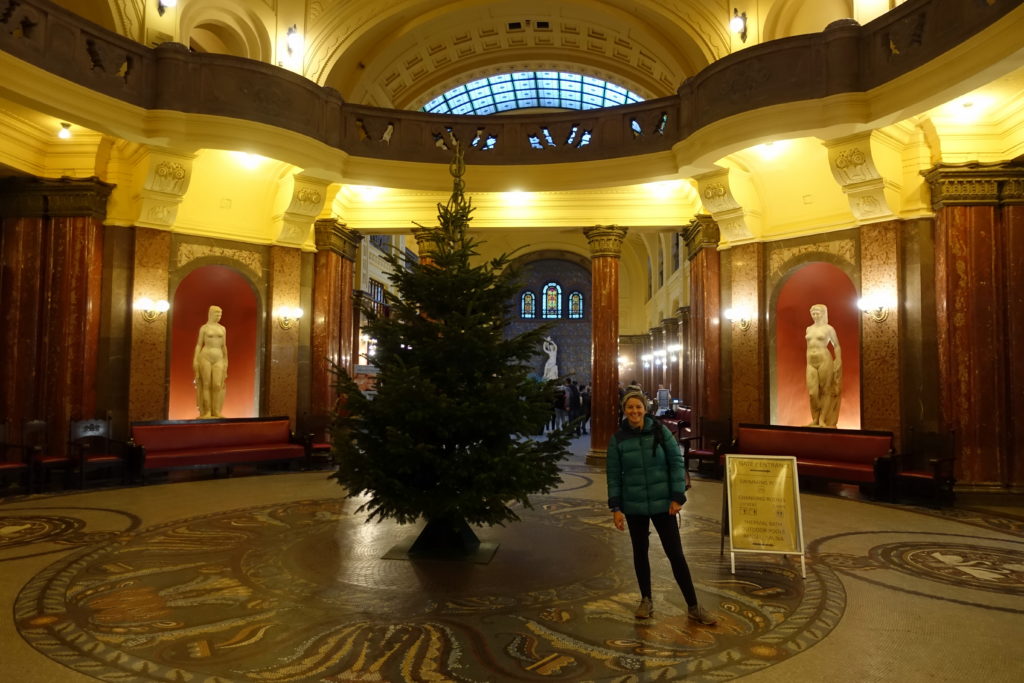
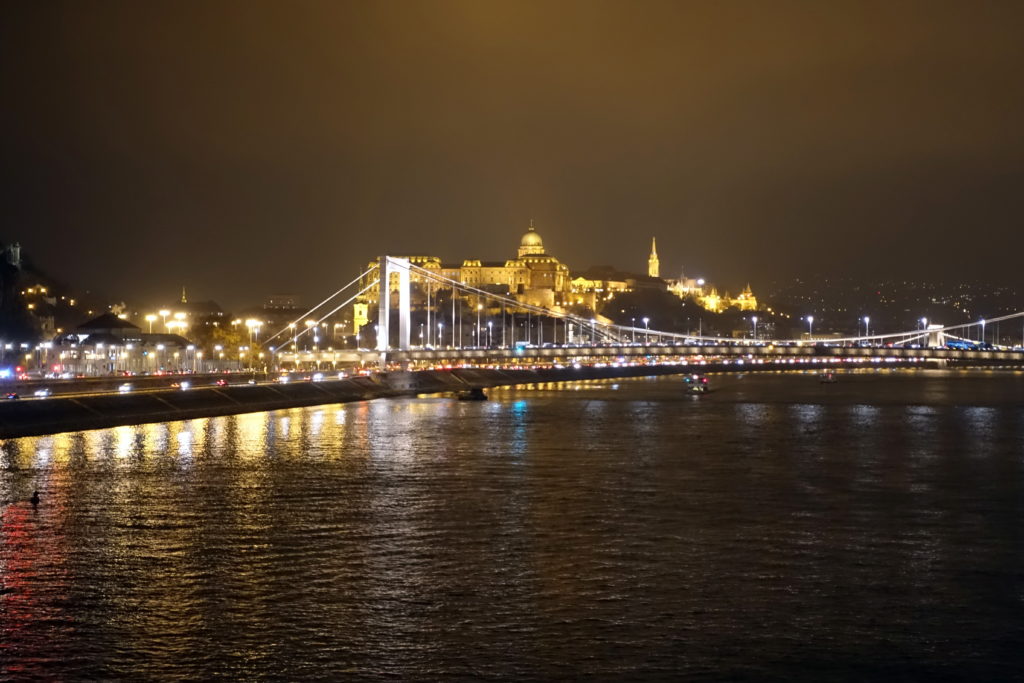
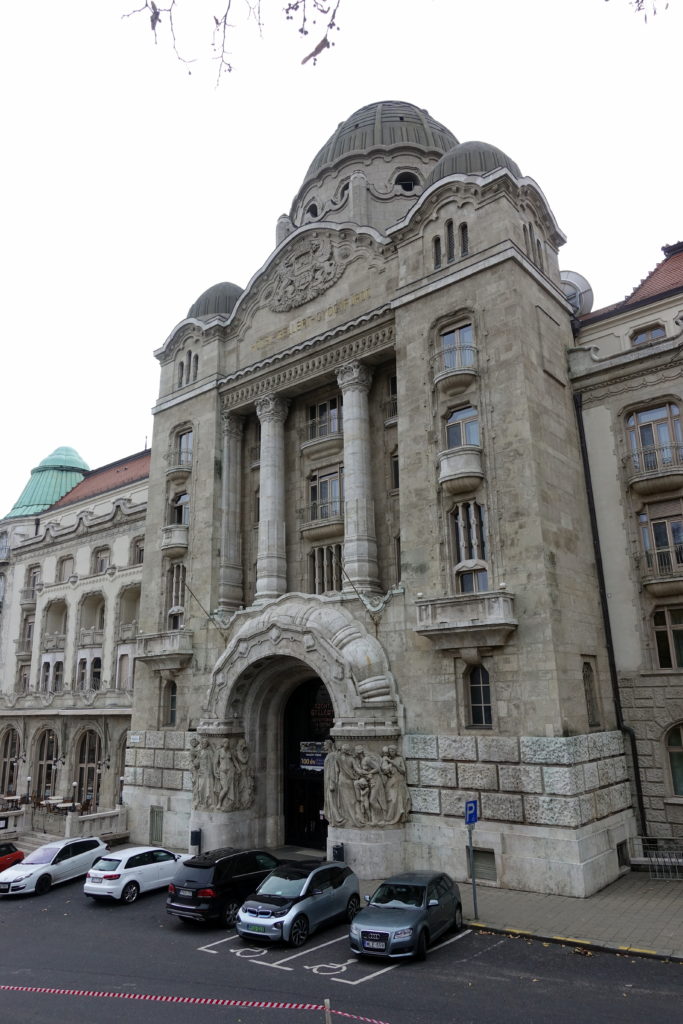
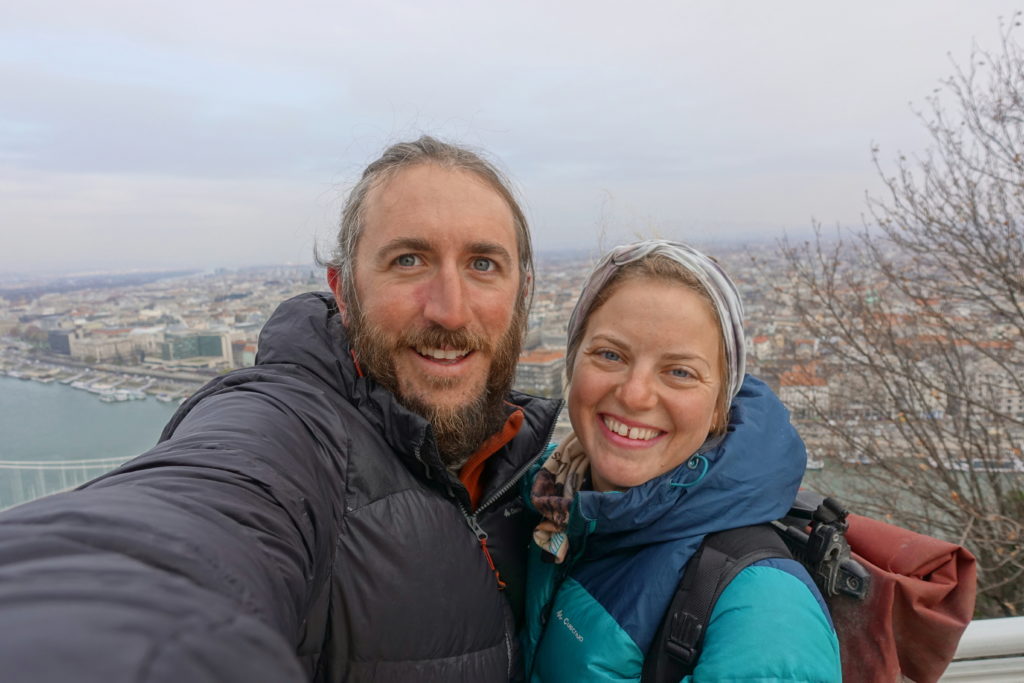
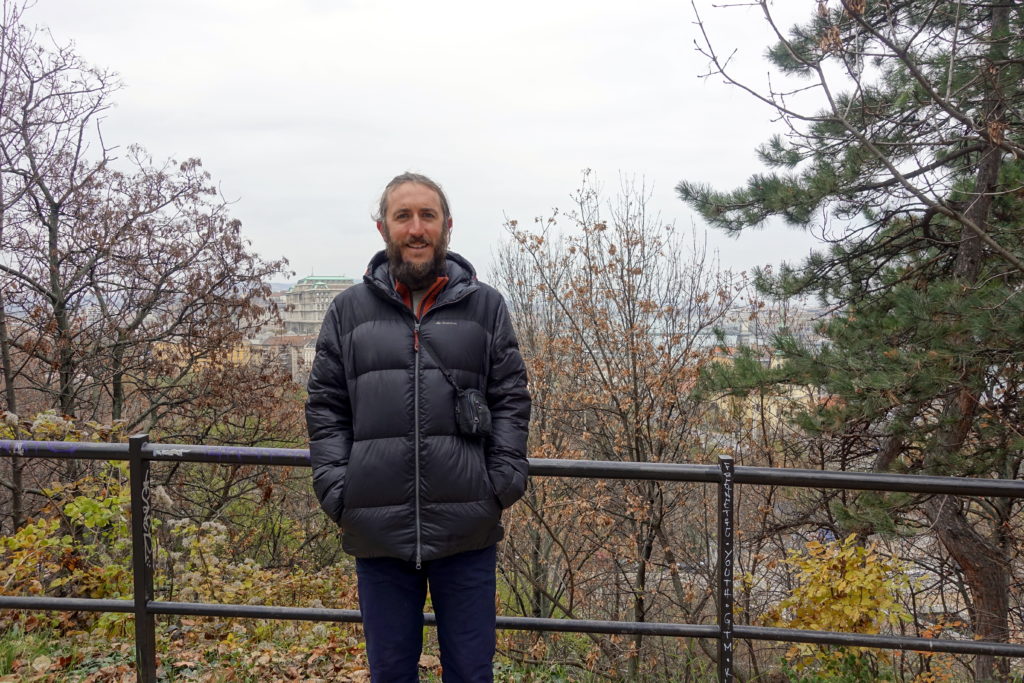
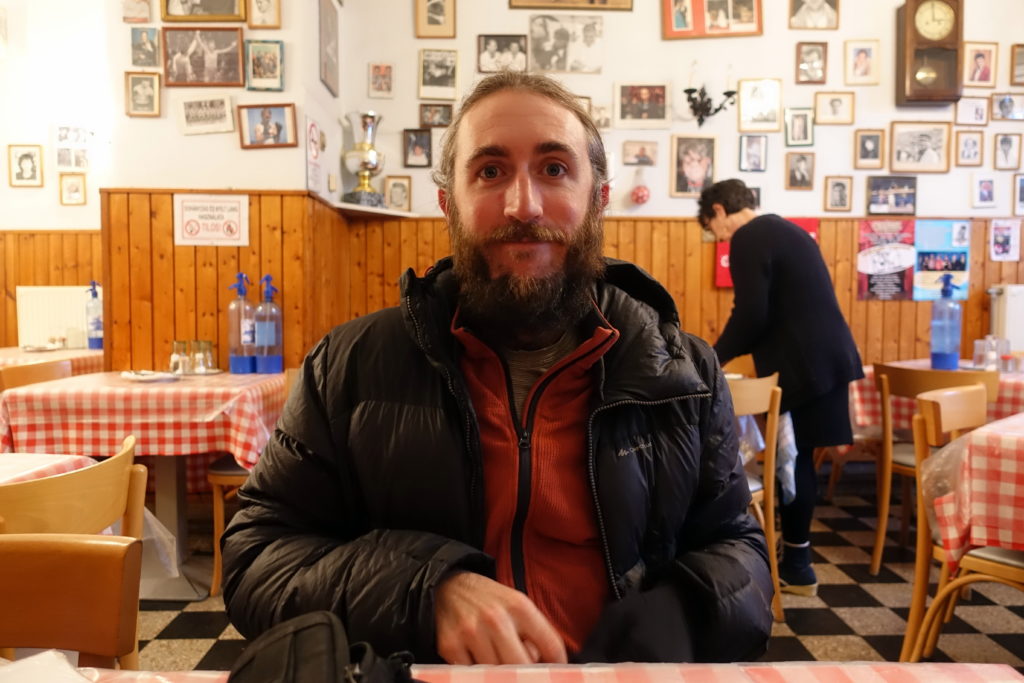
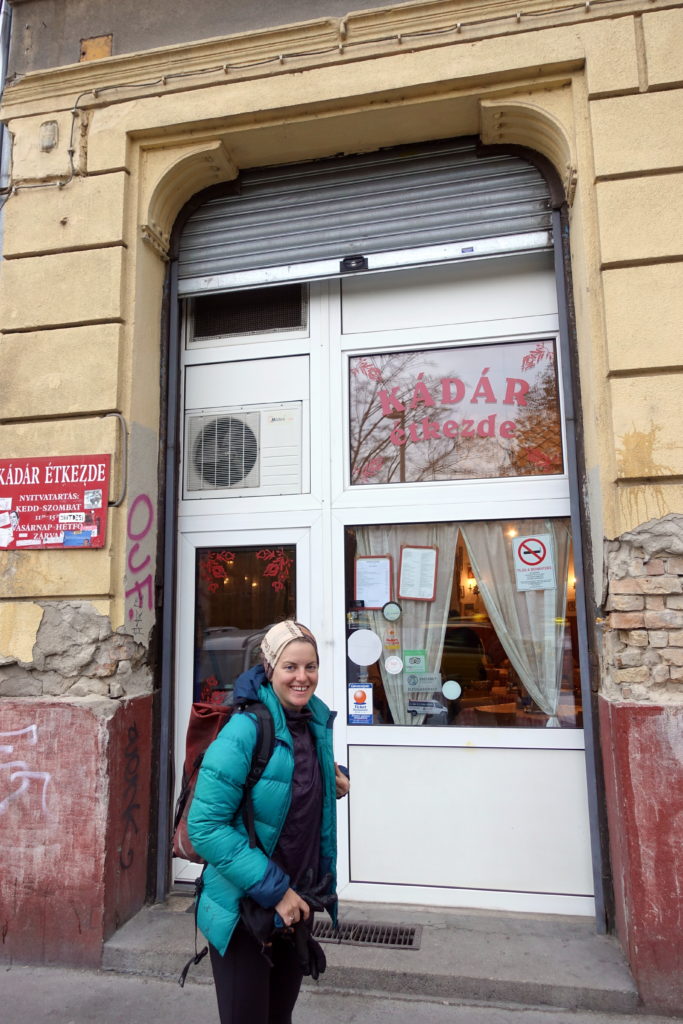
After we spent enough days off of the bike, Cédric and I packed our luggage and continued following the Danube northwards. The first hour or so was again through the chaotic industrial suburbs and shopping centers before getting back onto the EuroVelo 6 bike lane. The conditions had gotten colder and colder every day – although the plus side of bitter-cold temperatures in the winter is usually sun – and we were now leaving Budapest with -7c and our gloves were on the very limit of supportable.
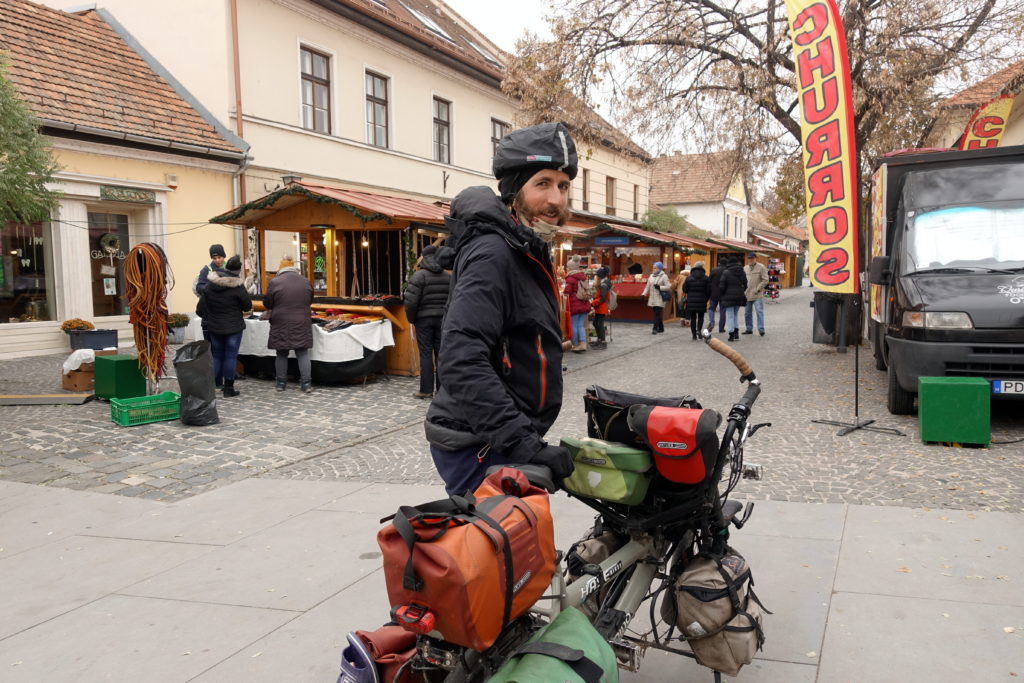
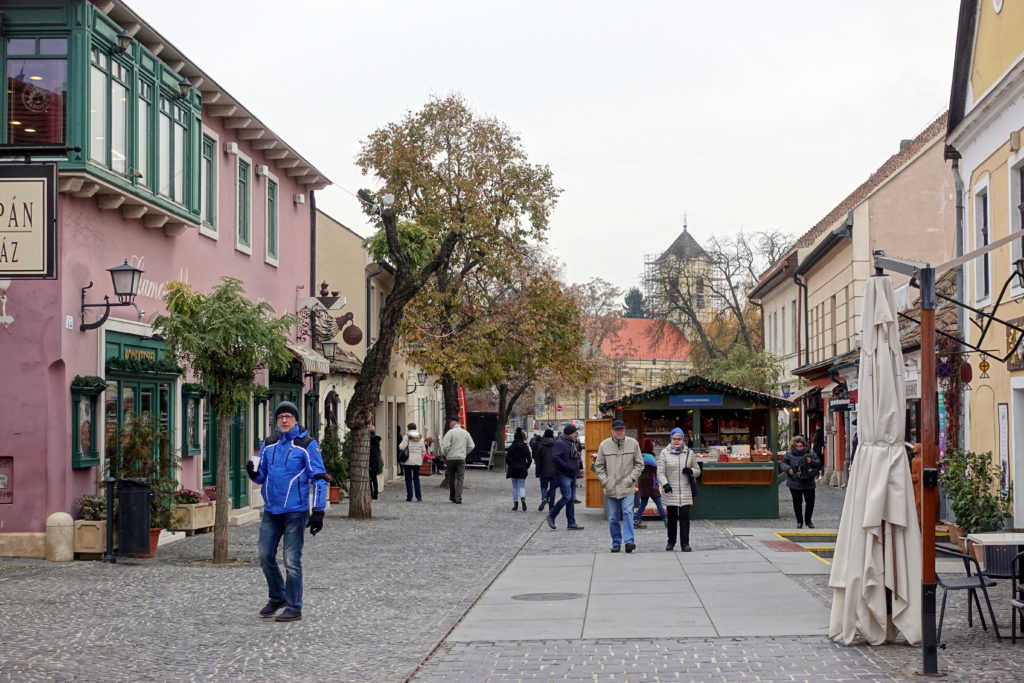
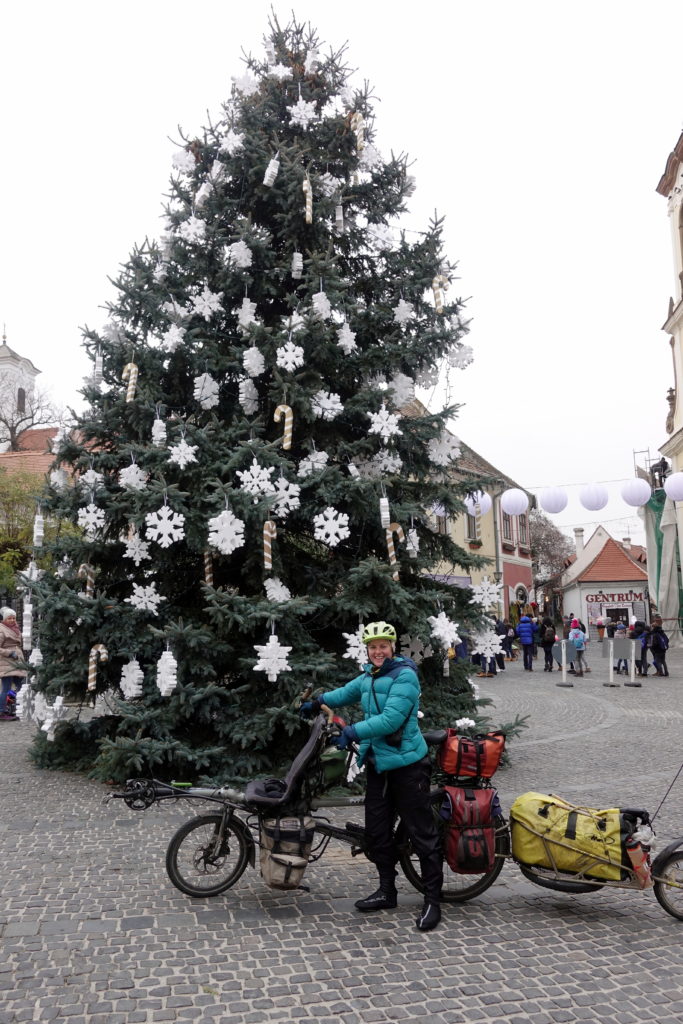
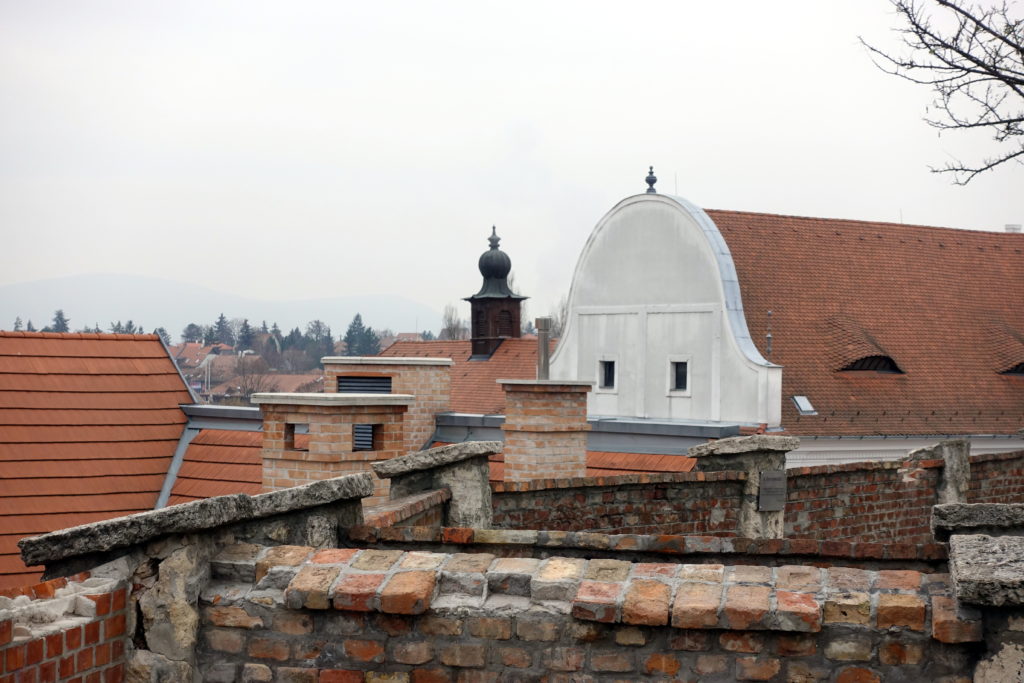
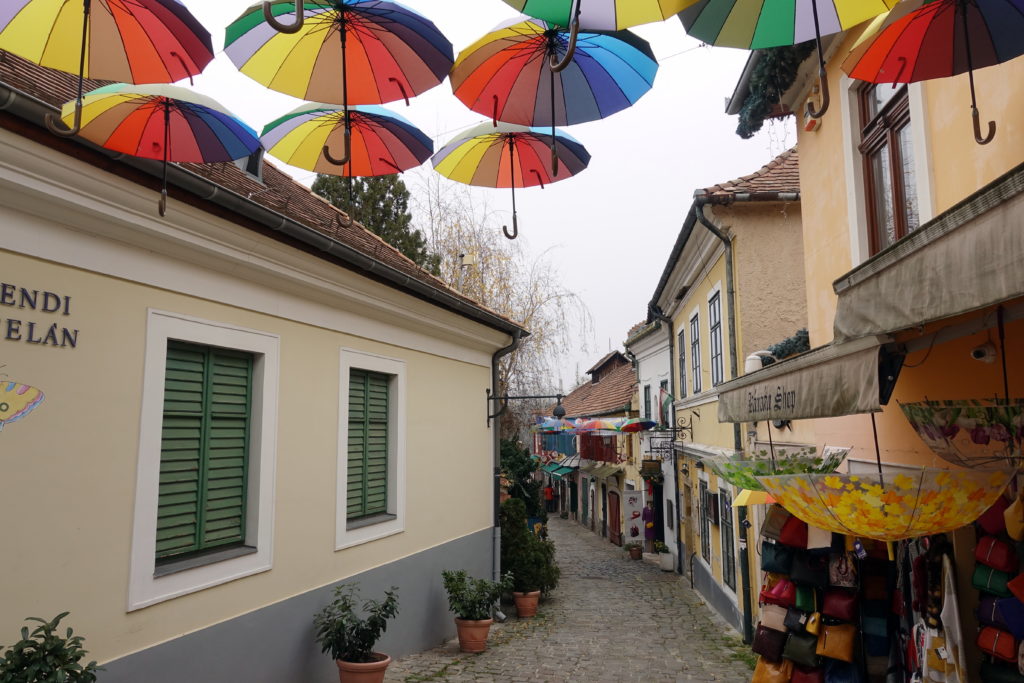
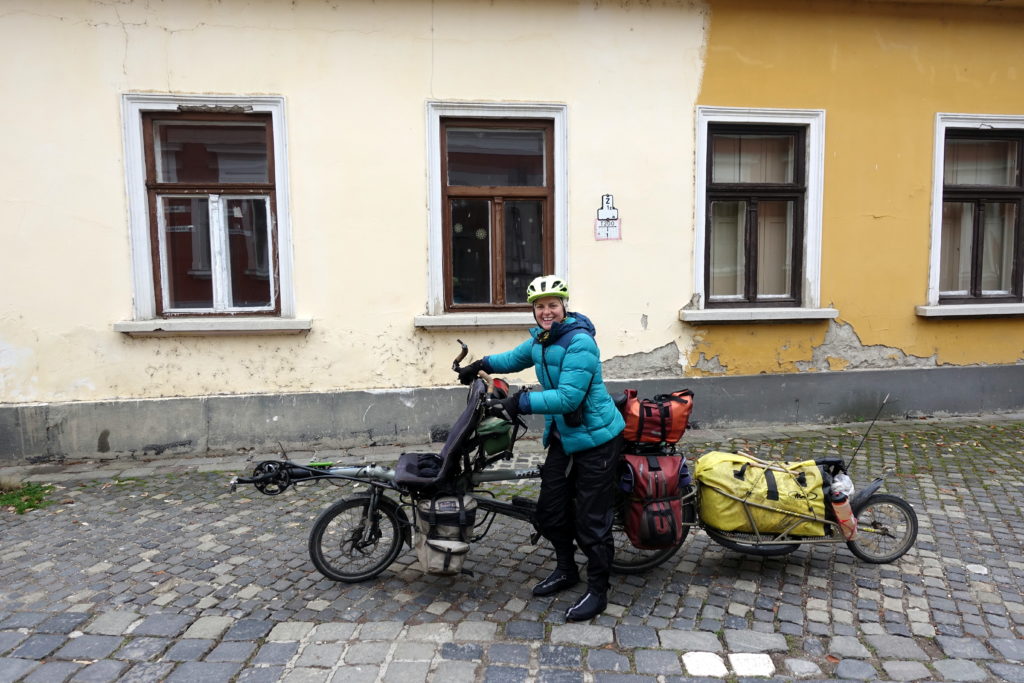
We took our first break in Szentendre, a cute little artsy town on the shore of the Danube, that we would have probably enjoyed a little more if our main focus was not to just get warmer which basically meant to quickly get back on the tandem to produce our own heat. Cedric had contacted the mayor of the next village – Dunabogdany – a few days before, because somehow, he had some memories of that village being the hometown of a part of his family (hence his Germanic family name). The mayor having the same family name, being not much older than us and speaking German, plus Dunabogdany being small enough, he figured that we could meet up – just because “why not”! A coffee turned into a generous lunch while we tried to compare some genealogy trees that proved to be either uncomplete or faulty as many names were matching but not quite the structures. We may need some additional genealogy data about all that – there are a surprising number of Josef’s but none of the dates match – yet we nevertheless had some interesting conversations.
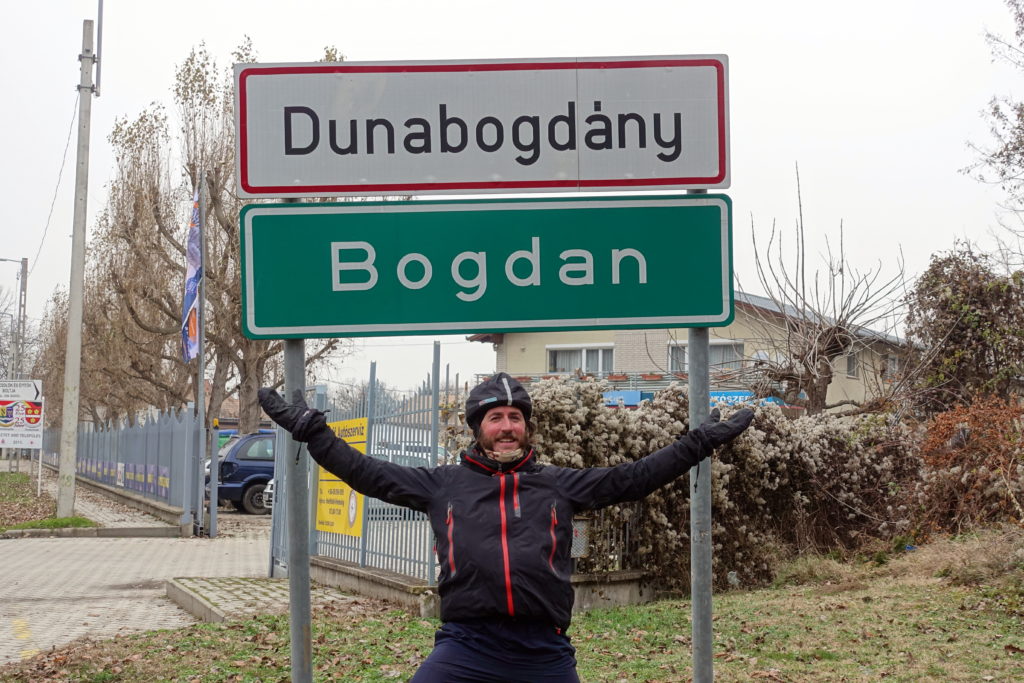
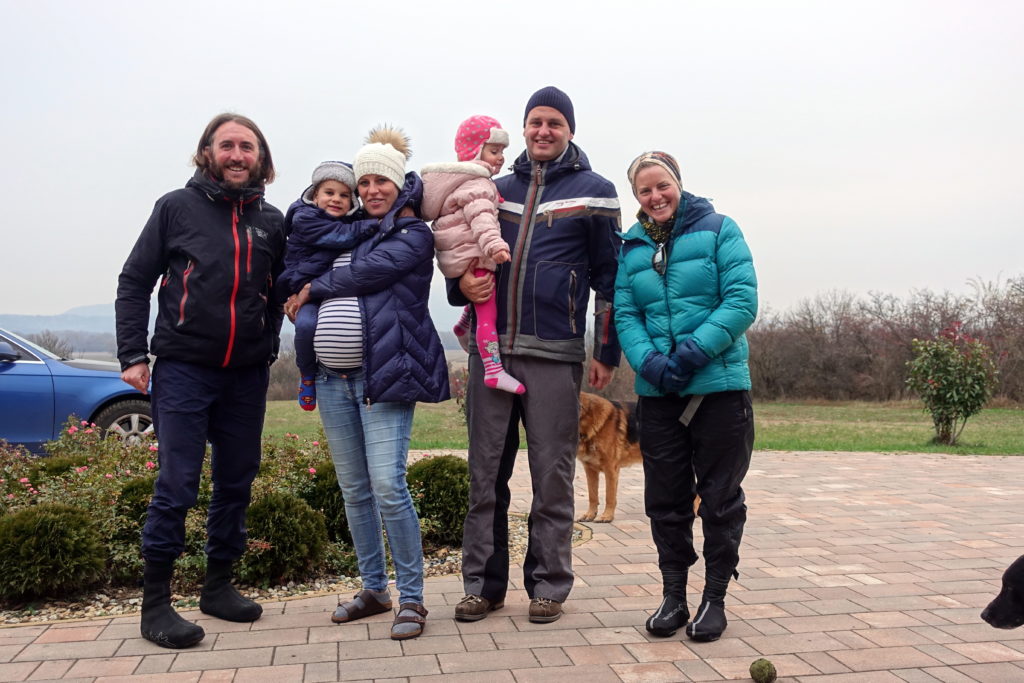
Given the short days of December, the temperatures well below freezing, our numb extremities and the different breaks during the day, our originally planned destination was far from being within reach and we decided to stop at the first guesthouse right after Visegrad, shortly before the sunset. Back in Western Europe, Sundays meant all shops closed so we spent the evening buying everything edible in sight at a small food stand (this meant burgers, chips, all the pastries… I think we were the best customers that day).
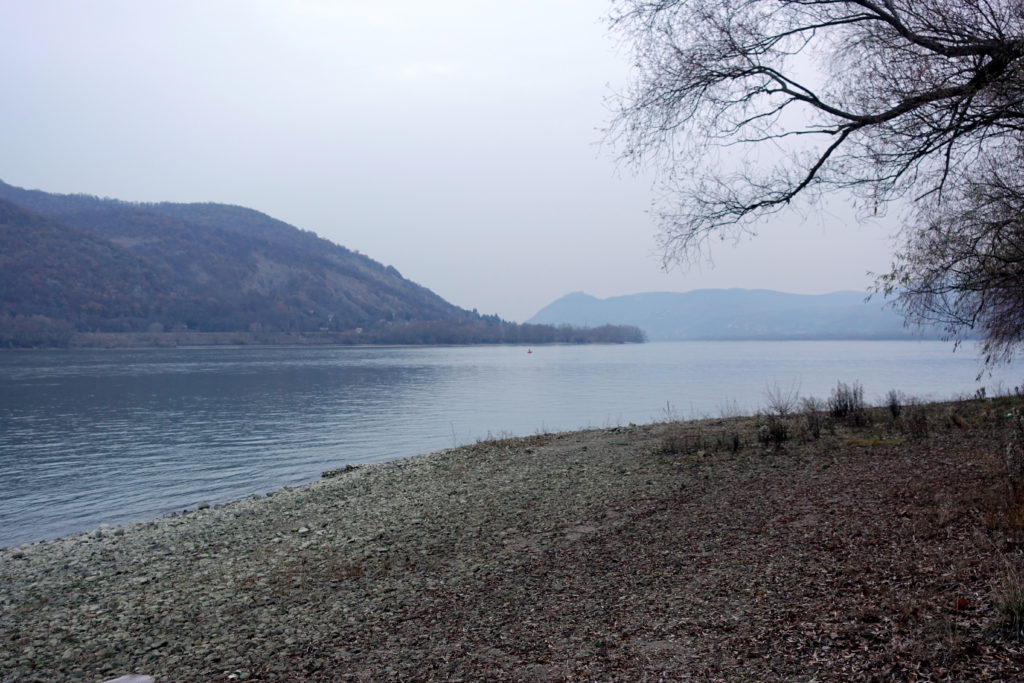
The next few days were a continuous amalgam of rain showers and following the spotty paths of the EuroVelo 6. We noticed traffic also started to increase along the Danube, so we were happy whenever we could follow a bike lane. Fortunately, the temperatures increased ever-so-slightly, and our digits weren’t as painfully cold as before Budapest. After leaving the guesthouse, we arrived in Esztergrad in the mid-morning and were surprised to find an enormous basilica looming over the city. It was a bit of a detour, but we cycled up the mount to the doors of the basilica and caught a glimpse inside Hungary’s tallest building (and head of the Hungarian Catholicism) before Sunday mass started. After cycling another 40 kilometers, we decided to spend that night in Komárno on the Slovakian side of the Danube – instead of Komarón on the Hungarian side. After doing a bit of research, the hotels appeared to be significantly cheaper in Slovakia and the town had its own small Christmas market where we could enjoy a bit of mulled wine. If you are wondering why the two cities have a surprisingly similar name, it is not a lack of imagination, but simply that the two sides of the city was one single Hungarian town until the reshuffling of borders after WW1 in central Europe, and even a century later the Slovak side still speaks mostly Hungarian.
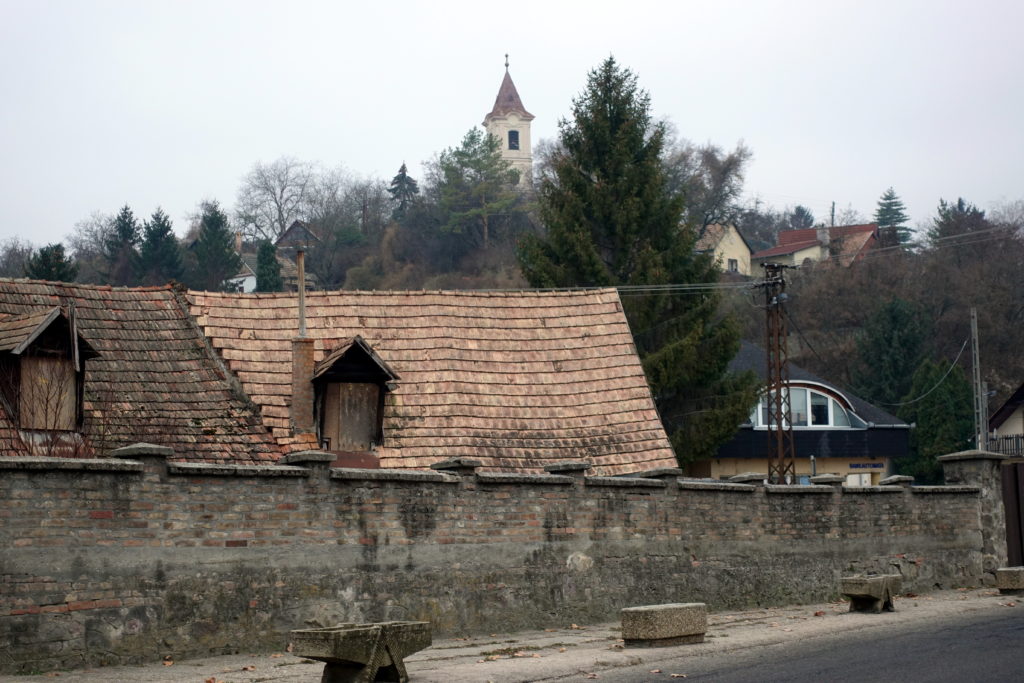
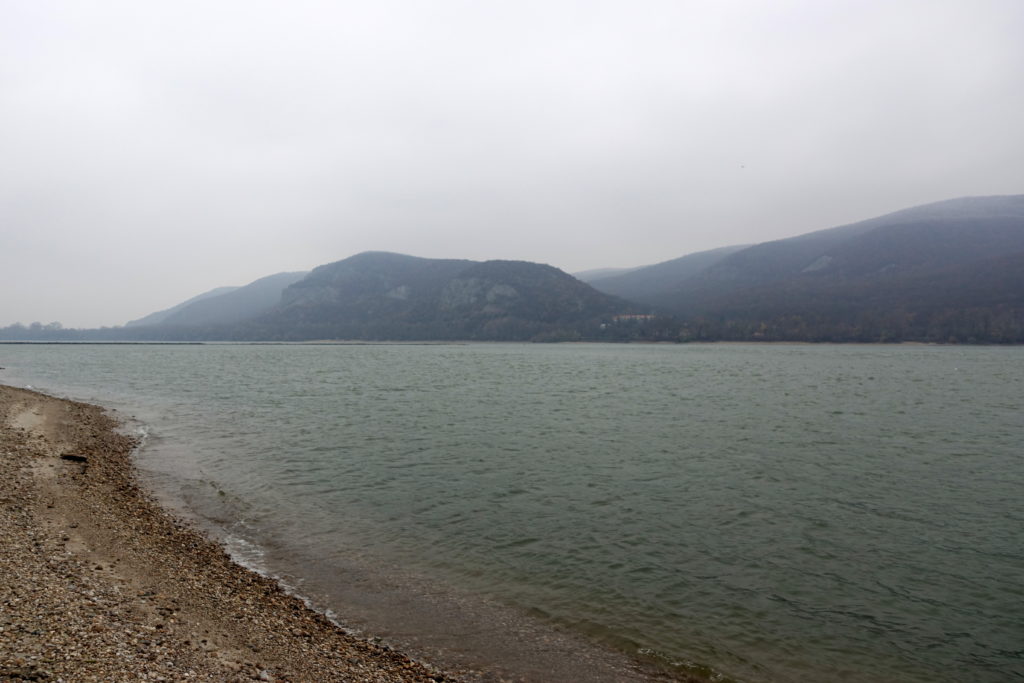
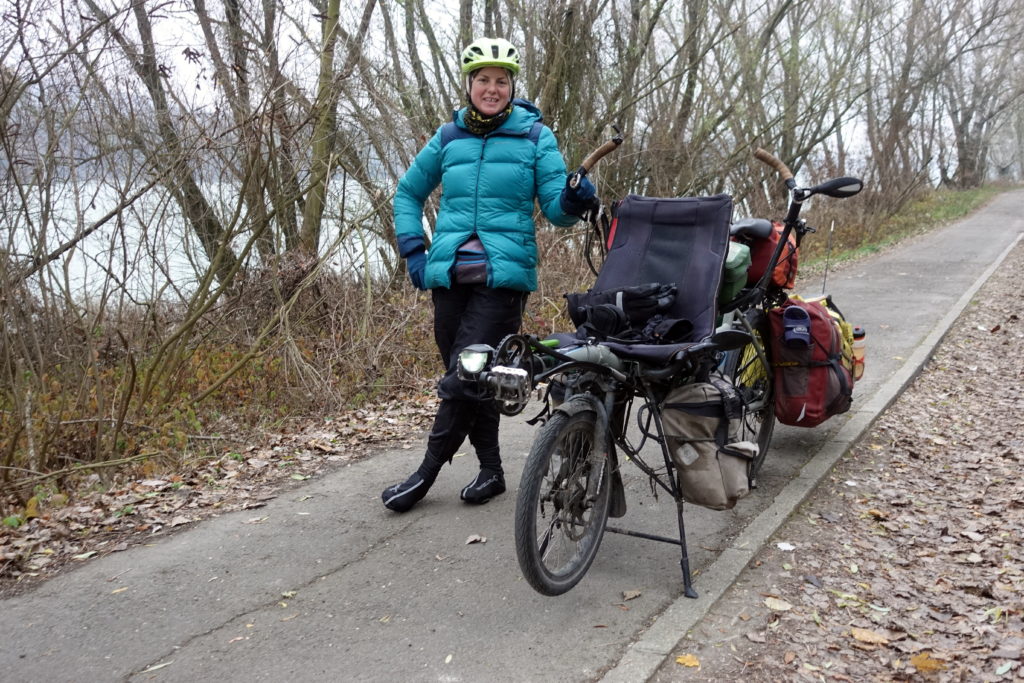
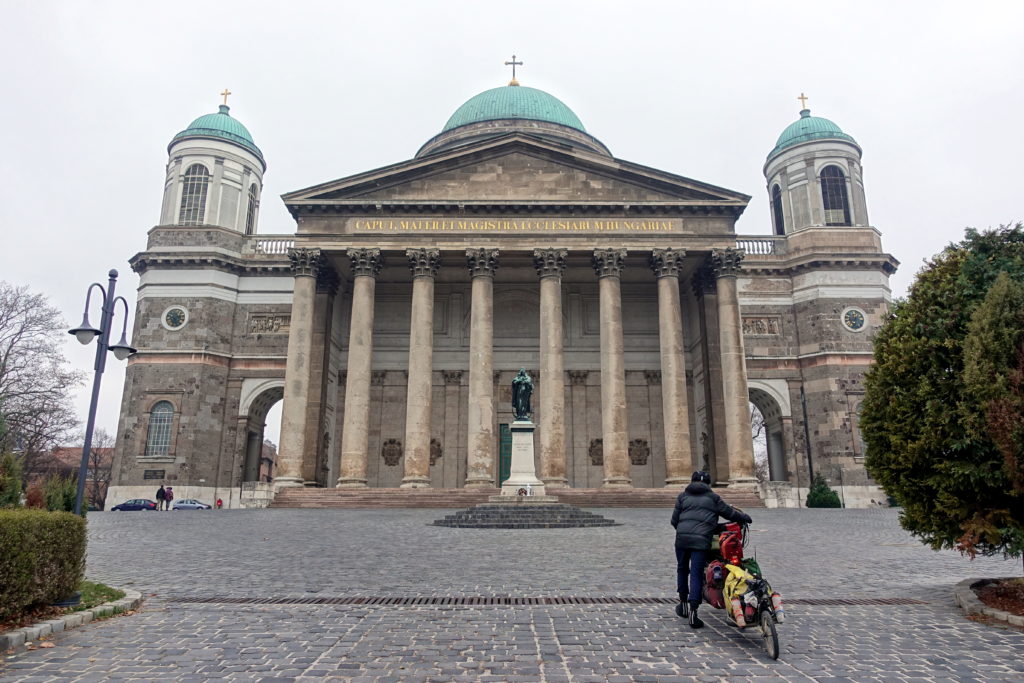
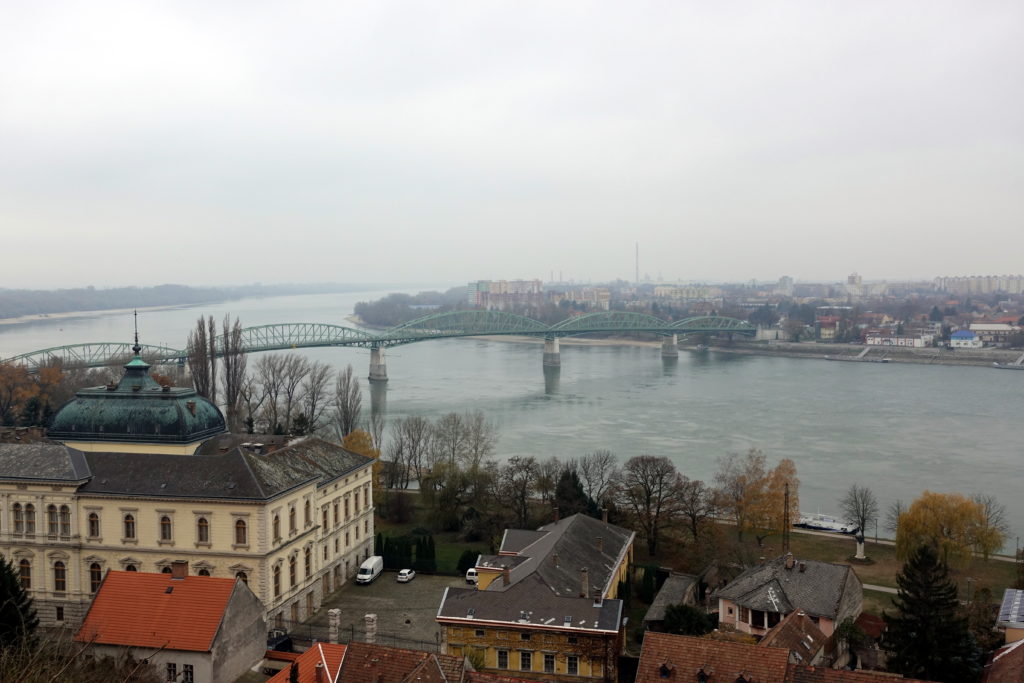
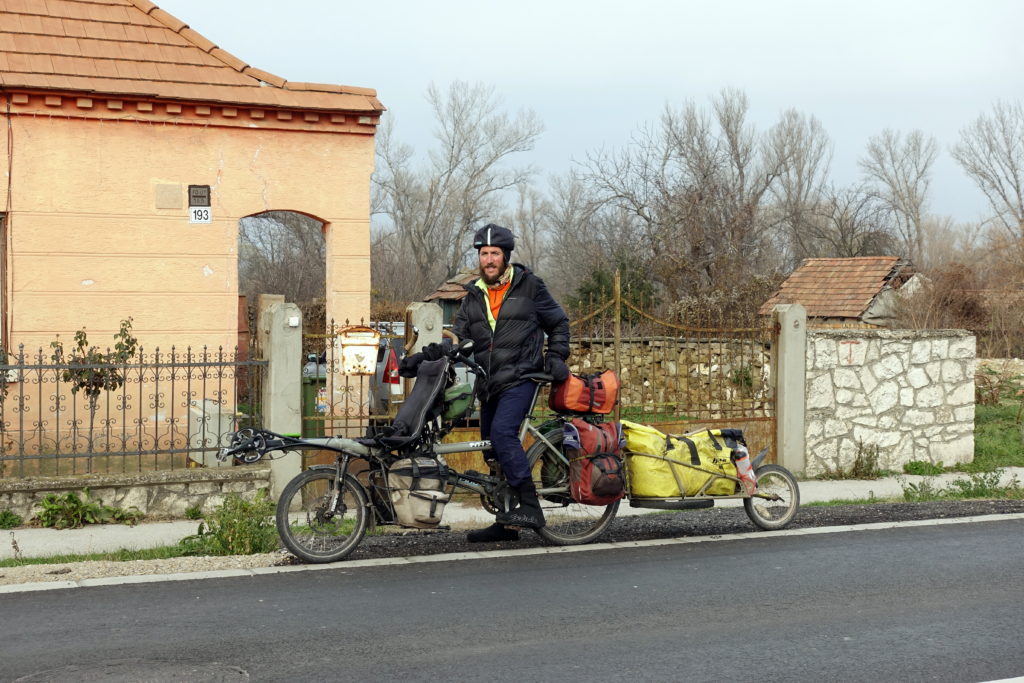
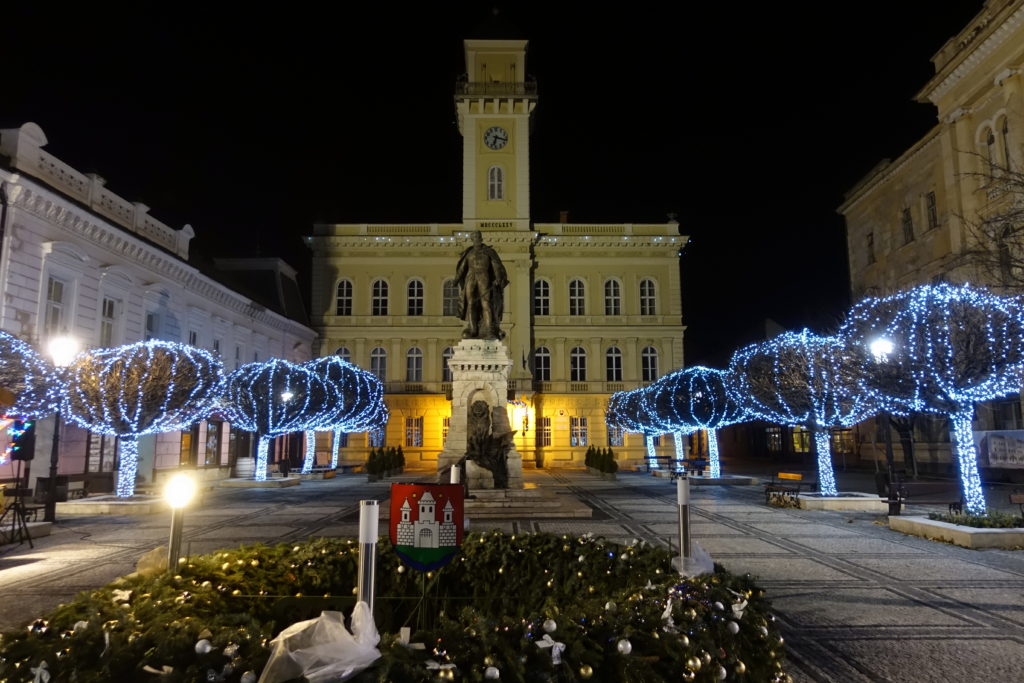
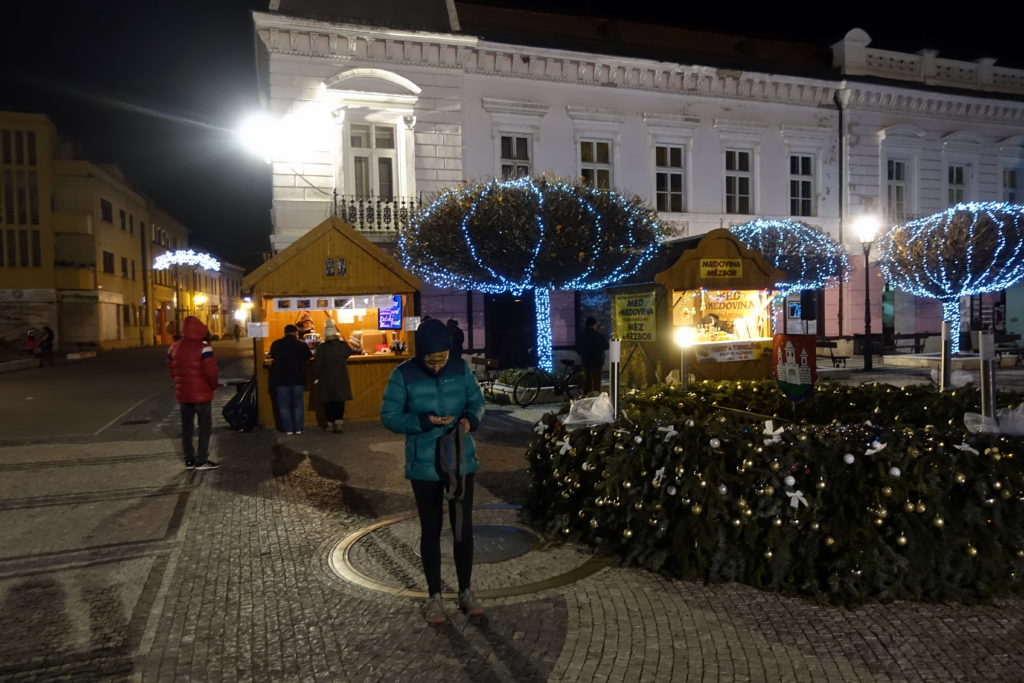
The next morning, we re-entered Hungary and were surprised by the number of trucks dominating the road. Now that the work week had begun, goods and products were being shipped and we were getting soaked from the traffic driving through the roadside puddles. Luckily, we only had to share the road for a few kilometers before we could turn off to a quieter road. The proximity with Austria and further to the west of Europe also seems to make that region an attractive location for the plants of various companies. A quieter road didn’t come without its disadvantages, however, and it progressively degraded into a muddy track. Without many options, we (meaning mostly Cédric while I filmed) pushed the bike three kilometers through slick mud to the nearest road. Once we got back on the road tried to clear all of the mud and sticks from the wheels (i.e. finding puddles on the asphalt and trying to dissolve the mud on the frame with the hands…), we hoped that this was the last mud track of our trip. Now significantly dirtier, we cycled into Györ and made an absolute mess as we brought our things into a fancier than usual hotel (with spa, breakfast included, etc. … luxury!). We spent the last remaining hours of sunlight walking through the historic downtown and drinking mulled wine at one of the stalls. Again, after Pècs and Szekszárd, Györ is a little known town, almost no tourists (especially compared to nearby Budapest and Vienna on both sides) but remarkable architecture.
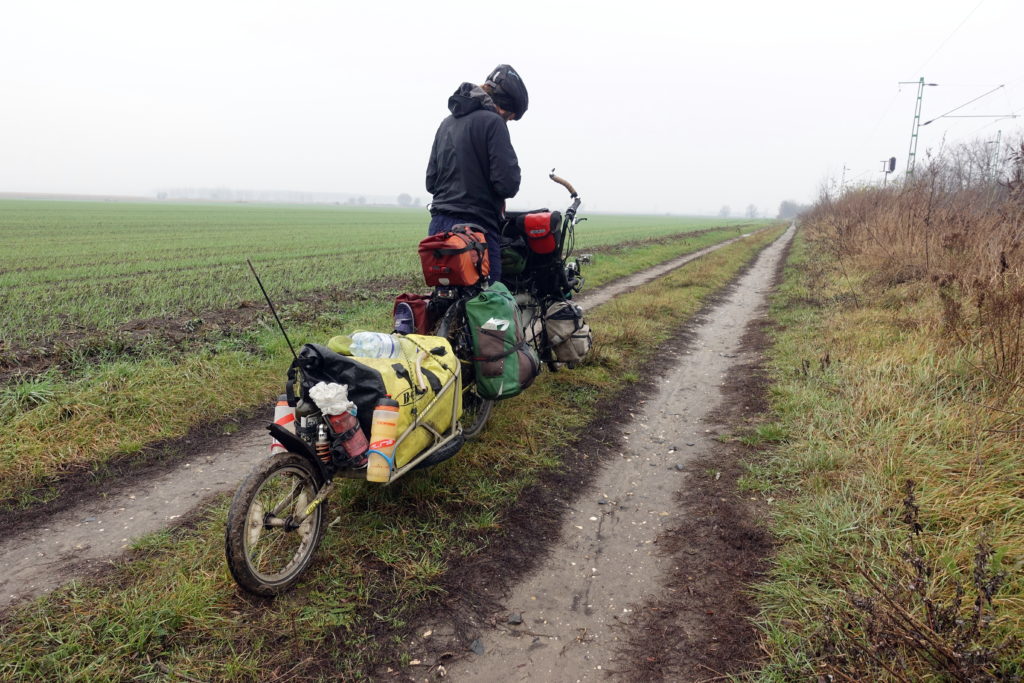
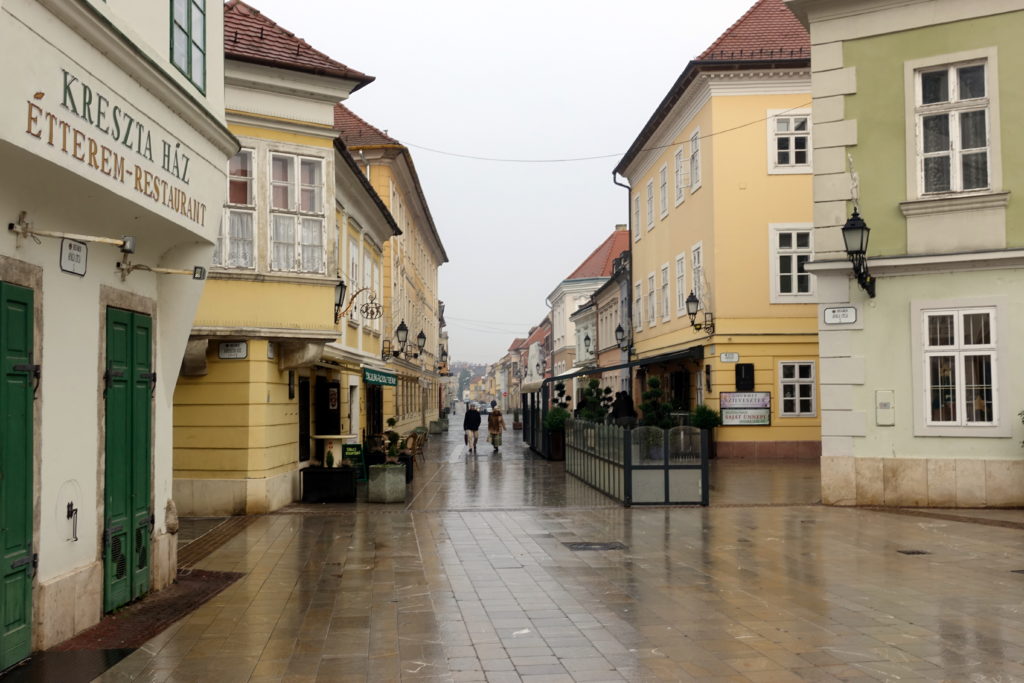
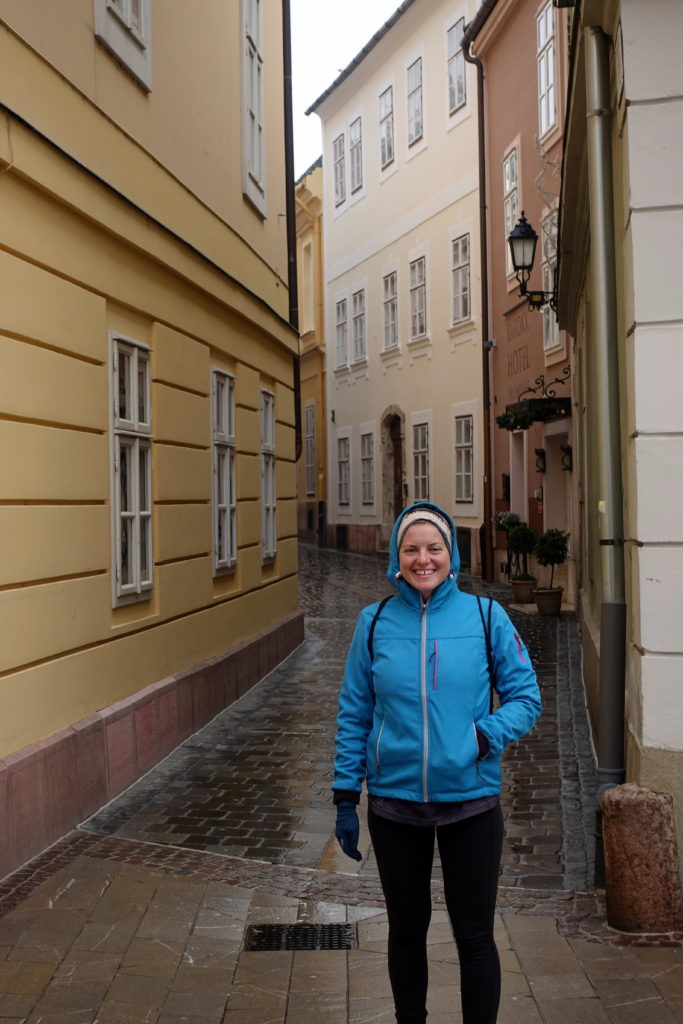
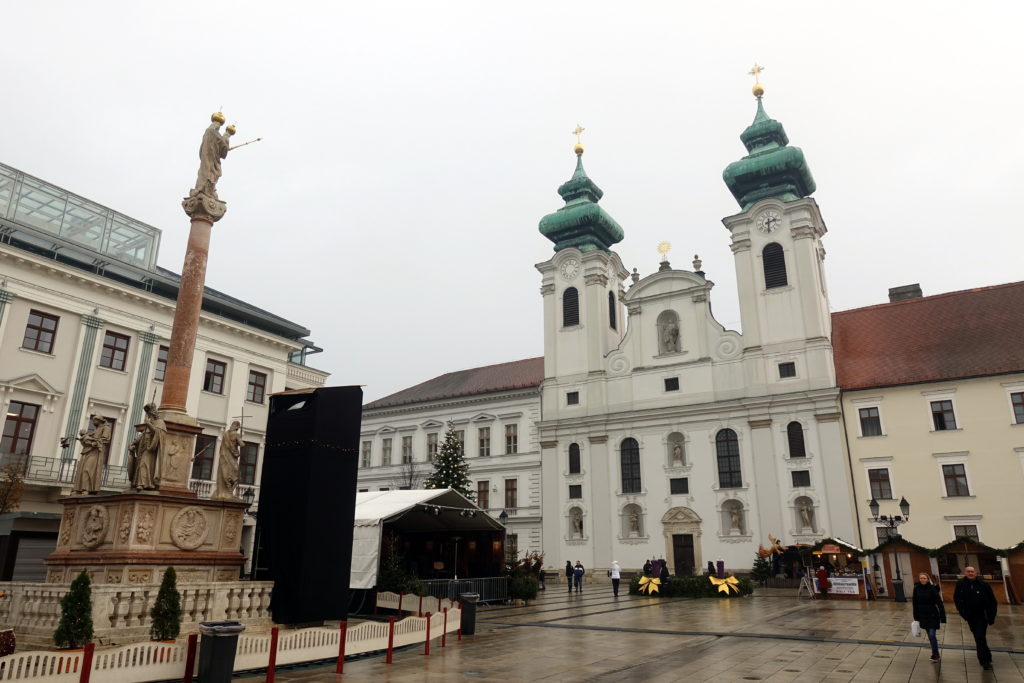
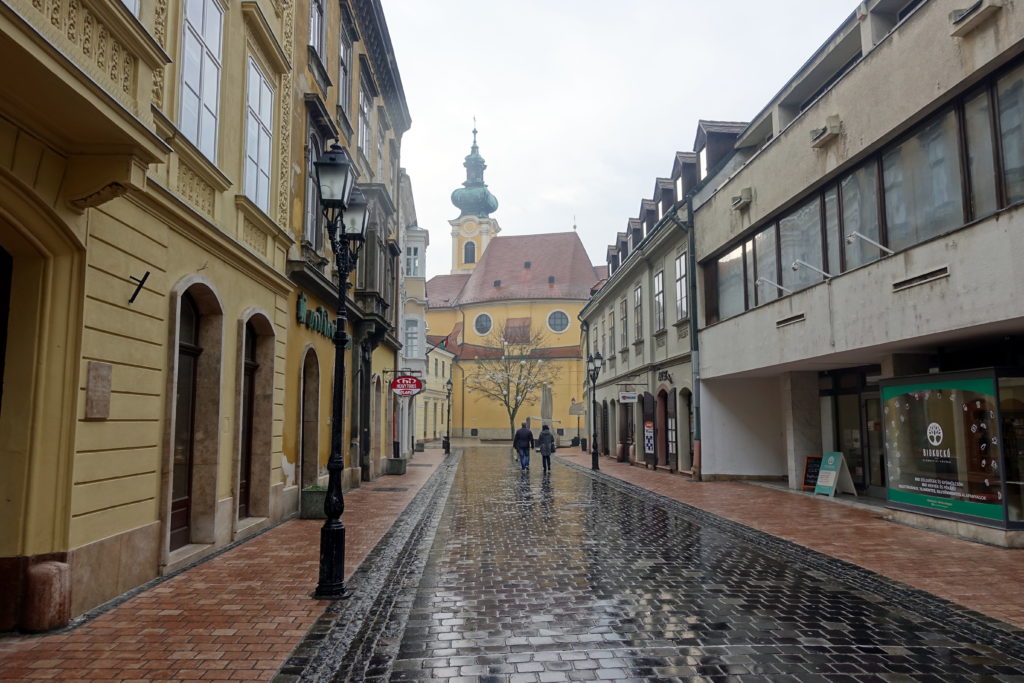
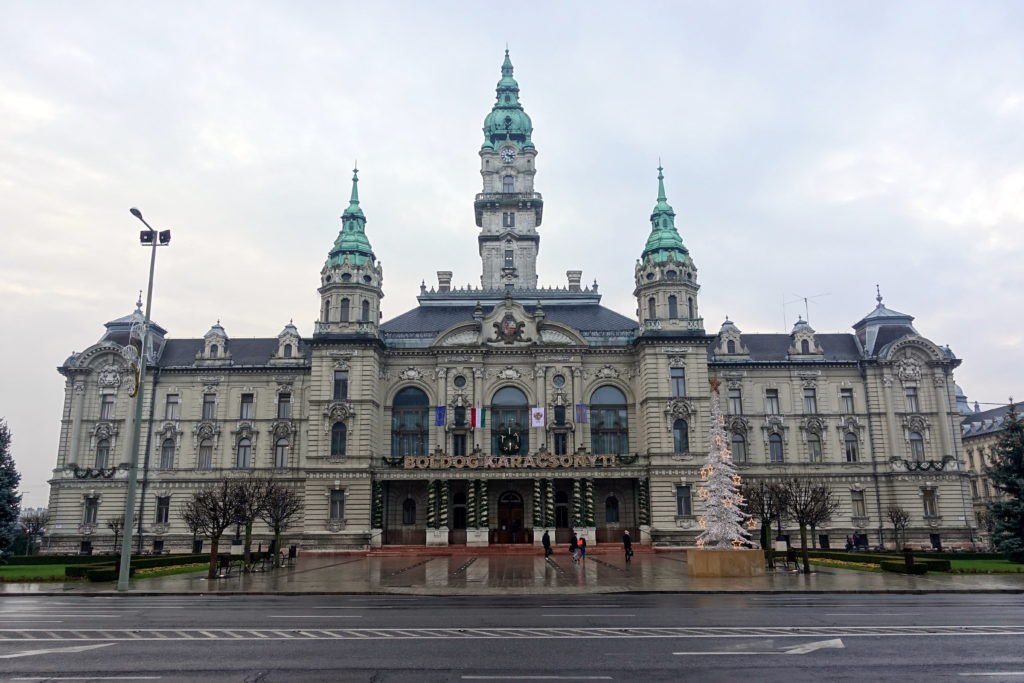
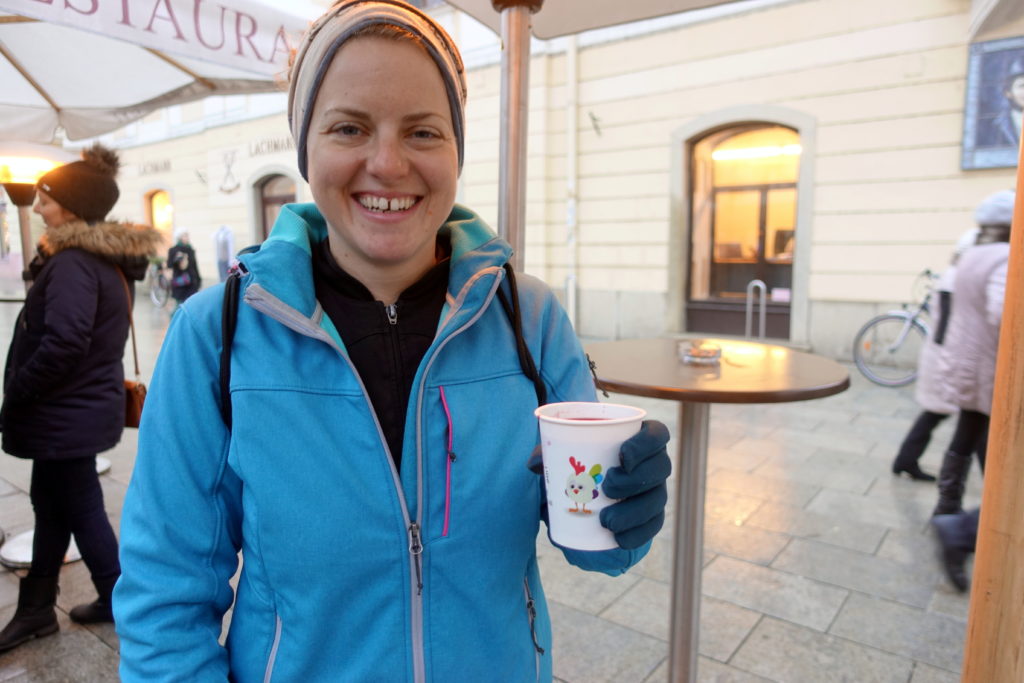
The next morning, we packed our things and prepared for our last day cycling through Hungary. It seemed like the weather was going to cooperate this day and we saw blue skies and sun for the first time in a few days. We enjoyed the large breakfast and realized we weren’t that far from Germany. Short anecdote: we saw our first non-tourist German, a worker on a business trip who had apparently just got up on the wrong side of bed and made a grumpy scene in a barbarian broken English because he the fresh fruits weren’t fresh enough for his needs! That entertained us later on the bike for a few days, and whenever something wasn’t working well we would yell, immitating the guy, “I need fresh fruits”.
Back on the road, more good news was that we were going to have paved bike lanes all the way to Bratislava – 75 out of 80km on a separate asphalted lane, the dream! Although the weather might have finally been on our side, the bike mechanics weren’t. Just a few kilometers after our start, we were struggling (again) with the front-chain sliding on the chain-ring, but the chain-ring had now reached a point that playing with zip-ties to push the chain on the sprocket was no longer an option. We had seen the problem coming for a few thousand kilometers and had hoped that we would make it back home without visiting another bike shop – at that point less than a thousand kilometers. Being in Europe made us less nervous than we would have been in Central Asia; we are never too far from a bike shop anymore. The situation yet was that Cassie was now pretty much wading through molasses. We thus decided to shorten the chain to have the tensioner pulling as much as possible – but the next problem became that chain was so extended that quick-links were not usable anymore, and managed finally to remove even more links to connect the two ends of the now very-shortened chain (and hoping that the connection or the chain would not break, although the area being completely flat we had the possibility of Cedric pushing the tandem alone to Bratislava…).
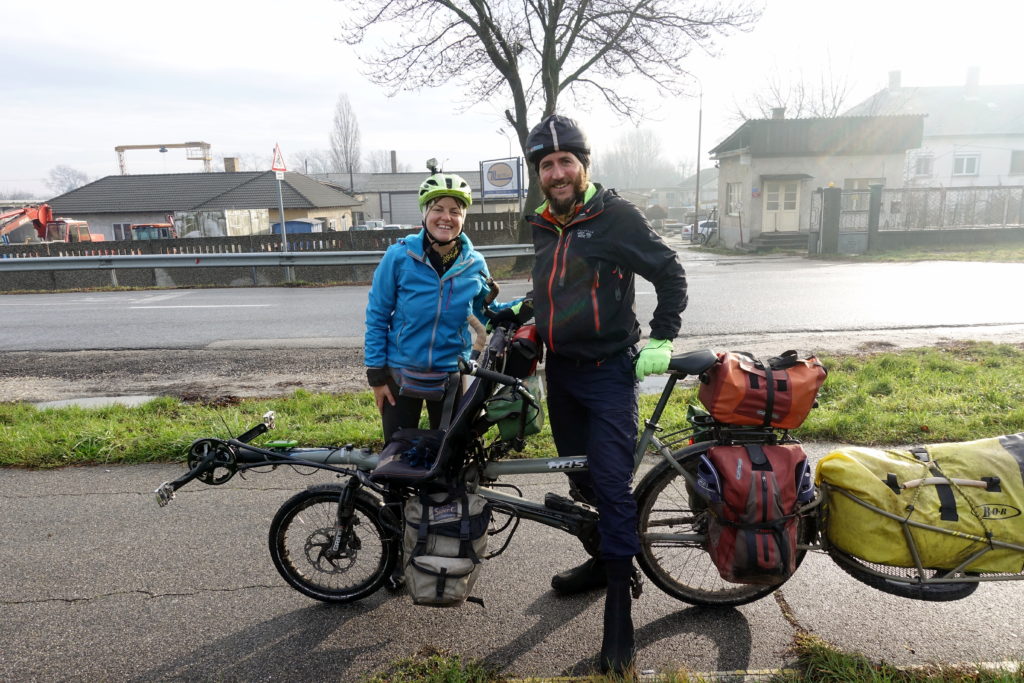
We entered Slovakia – almost without noticing it – along the Danube, apart from the sunny weather turning around and welcoming us with torrential showers and sudden strong headwinds. We just tried to pay no mind to that and pushed the last hour soaking wet before reaching our accommodation for the next two nights. The way getting into downtown Bratislava by bicycle is probably one of the best we have seen so far for a capital city; there are good bike lanes everywhere and bridges across the Danube for bikes and pedestrians only. We went from farmland to our accommodation in the city center almost without having to stop, dealing with traffic or struggling with car-only paths (Belgrade…). The good thing with traveling in central Europe during the low season is that you can get great bargains in the larger cities – and we enjoyed having a 6 people apartment to dry all our gears with the heaters full-on!
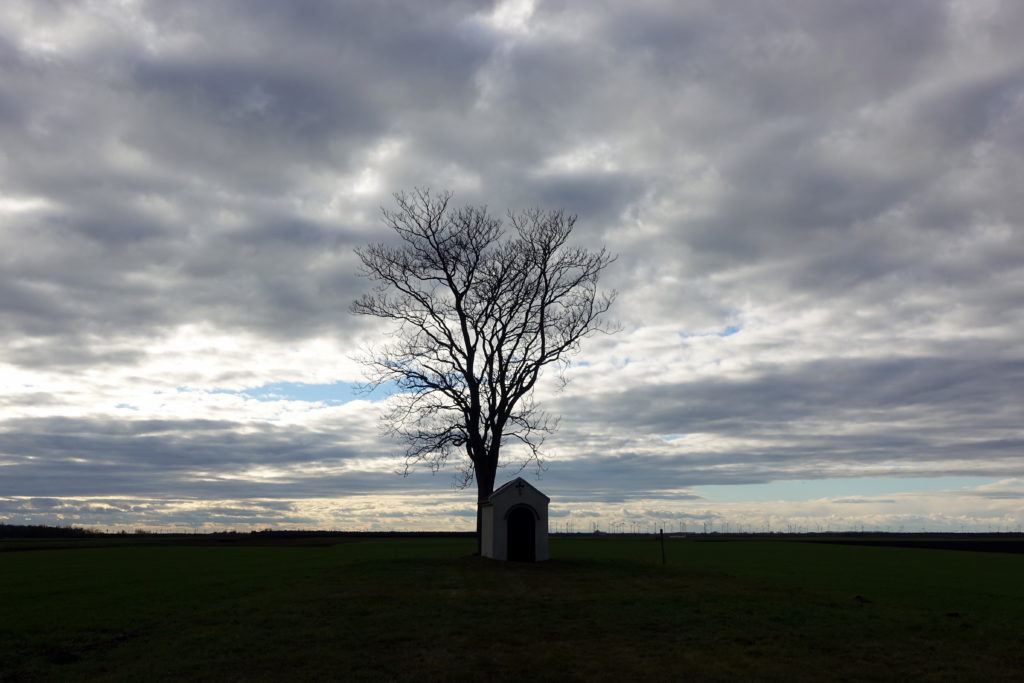
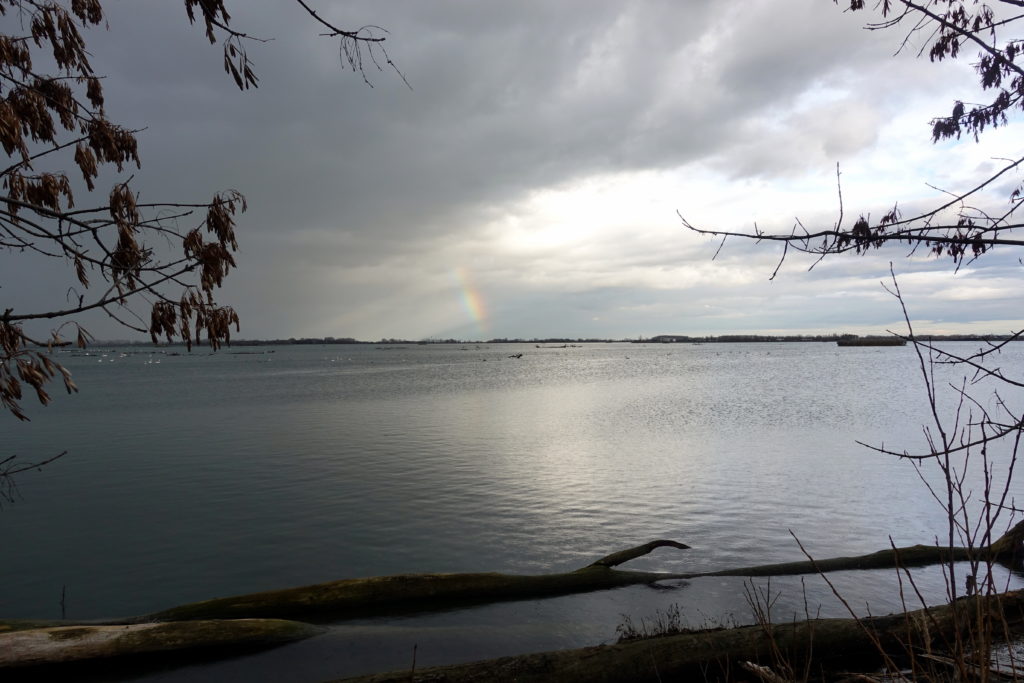
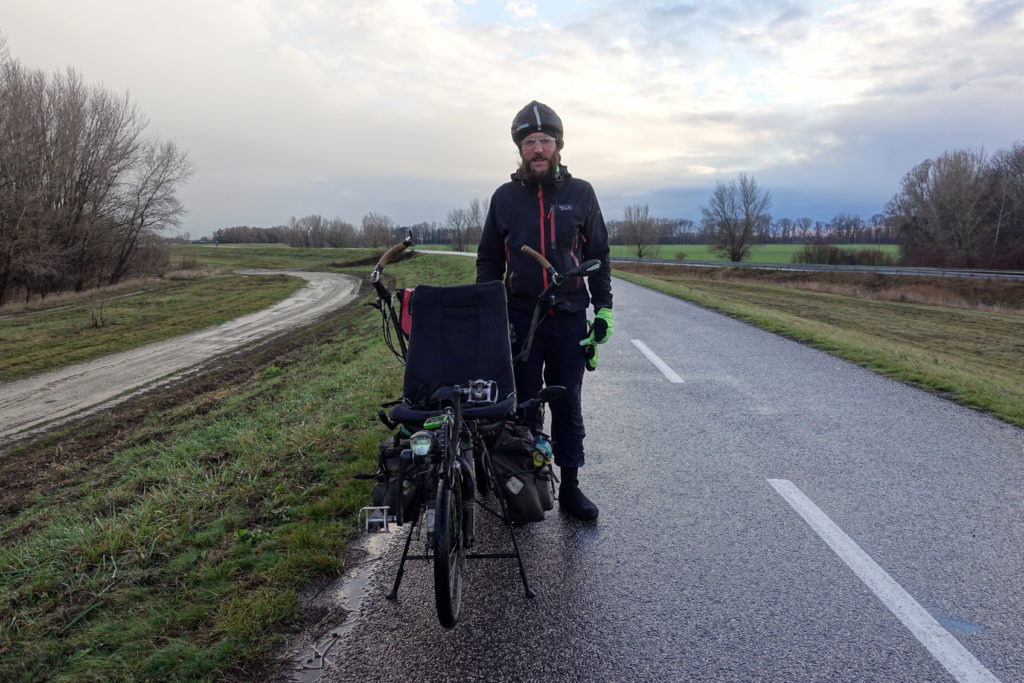
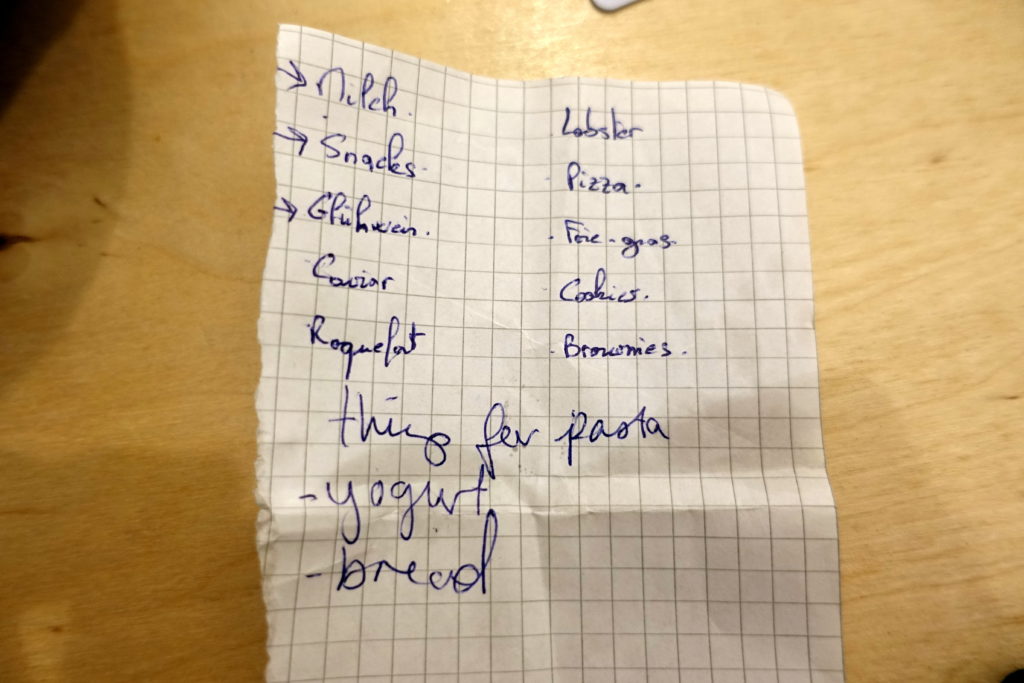
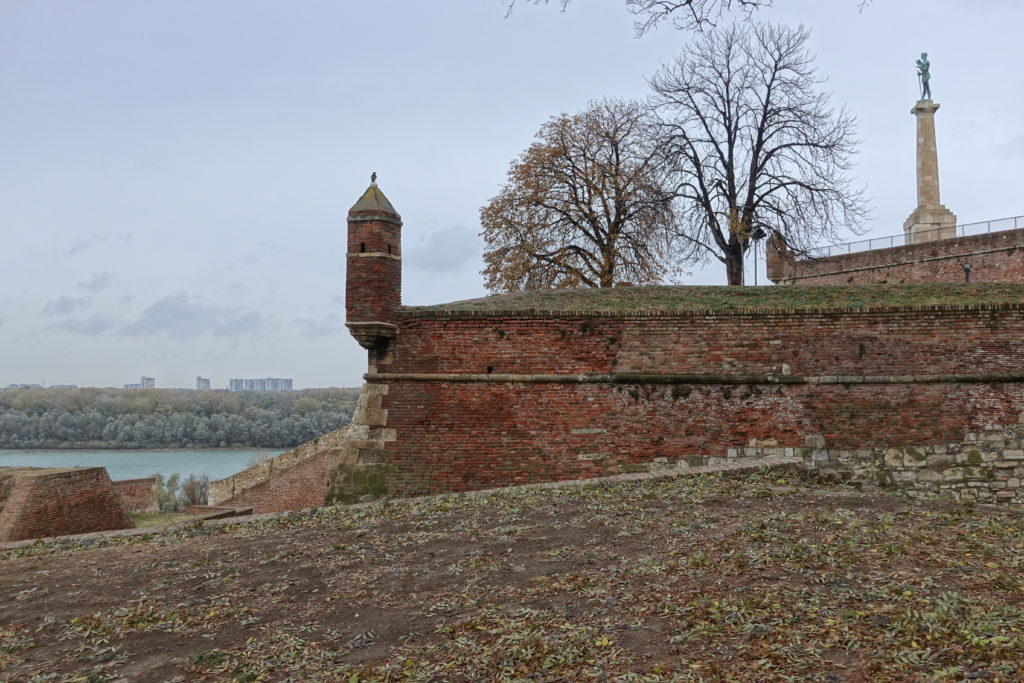
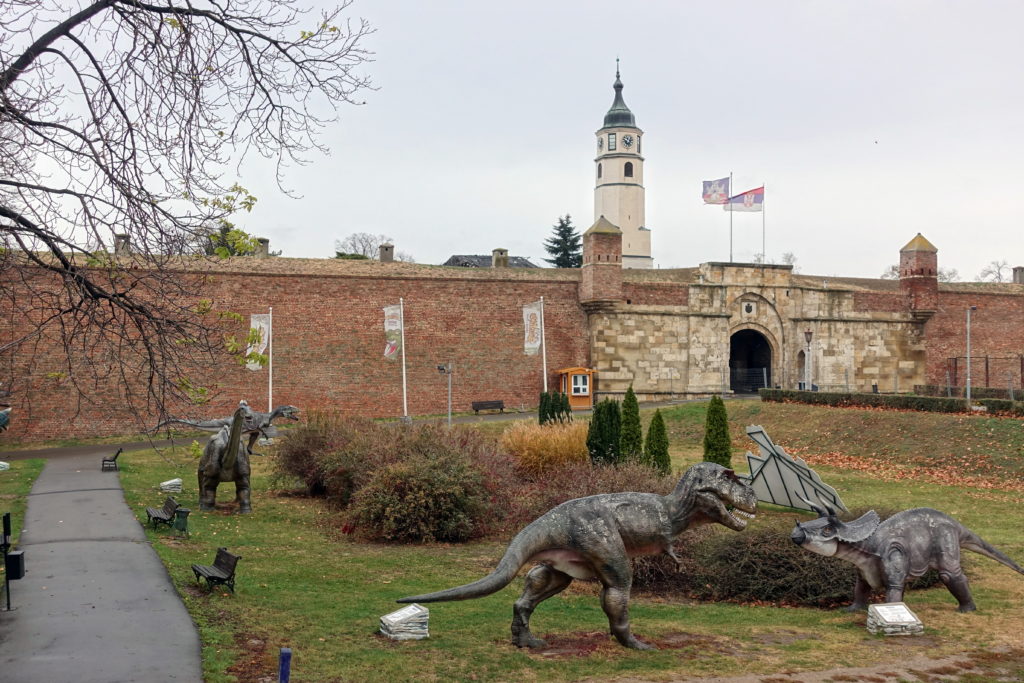
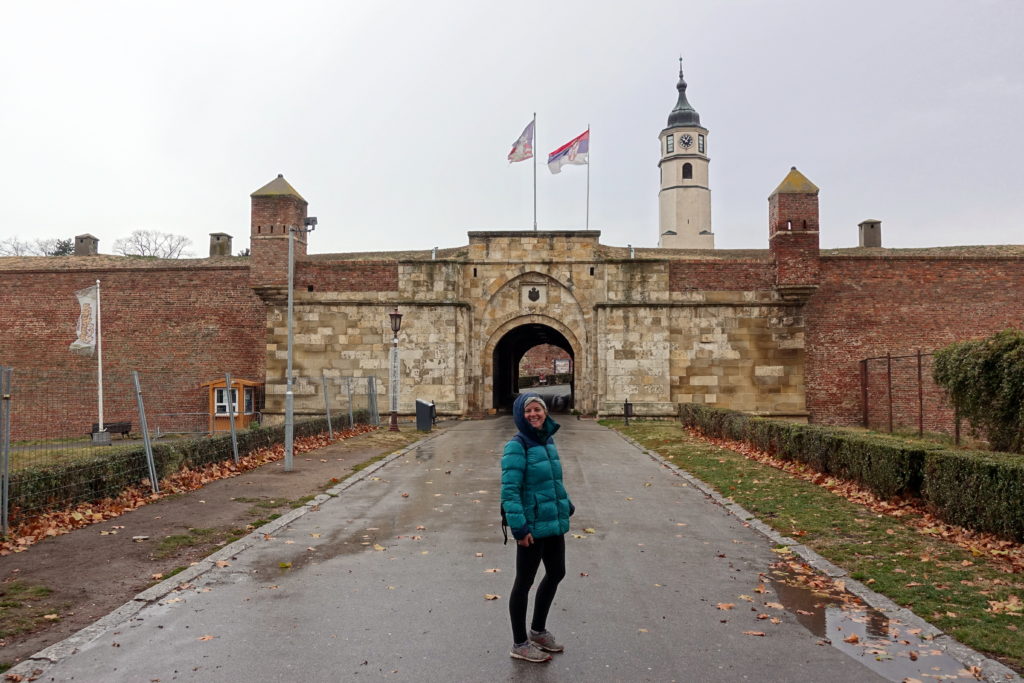
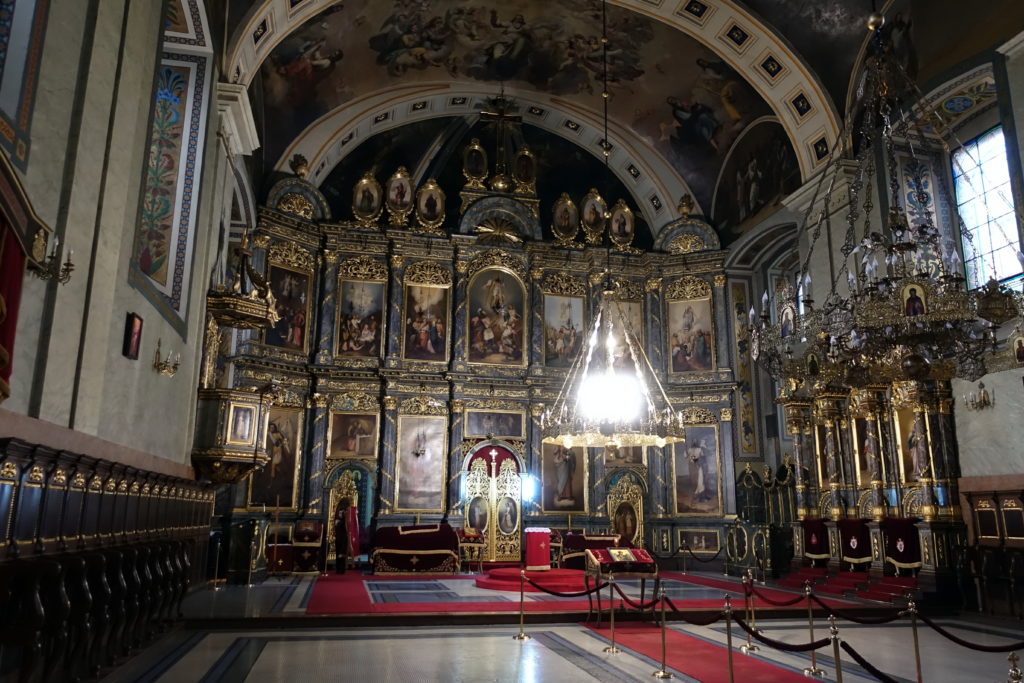
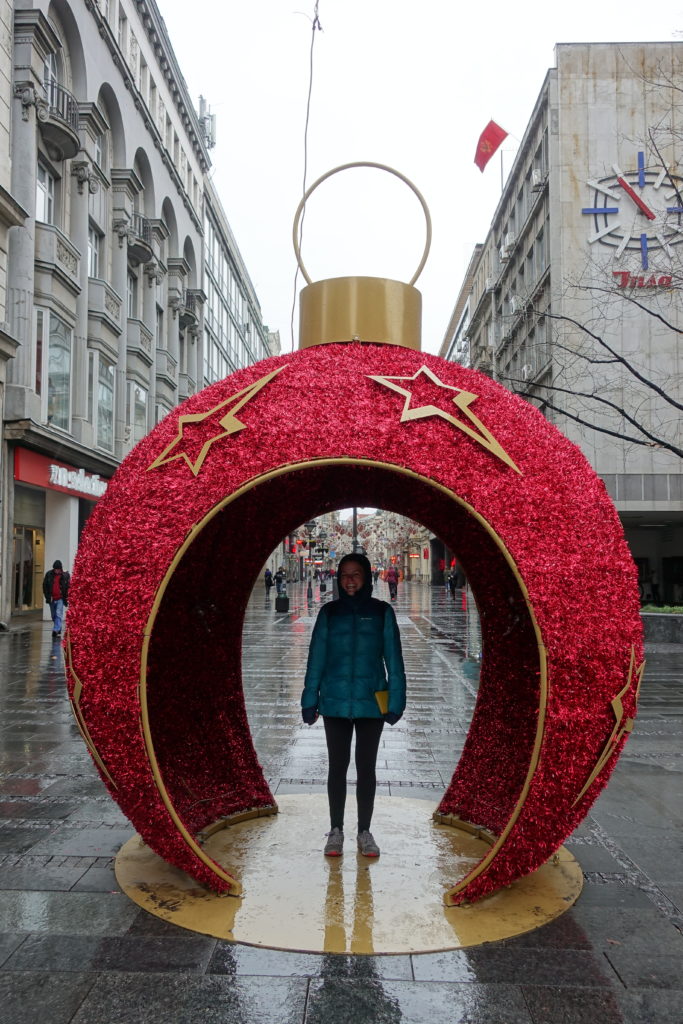
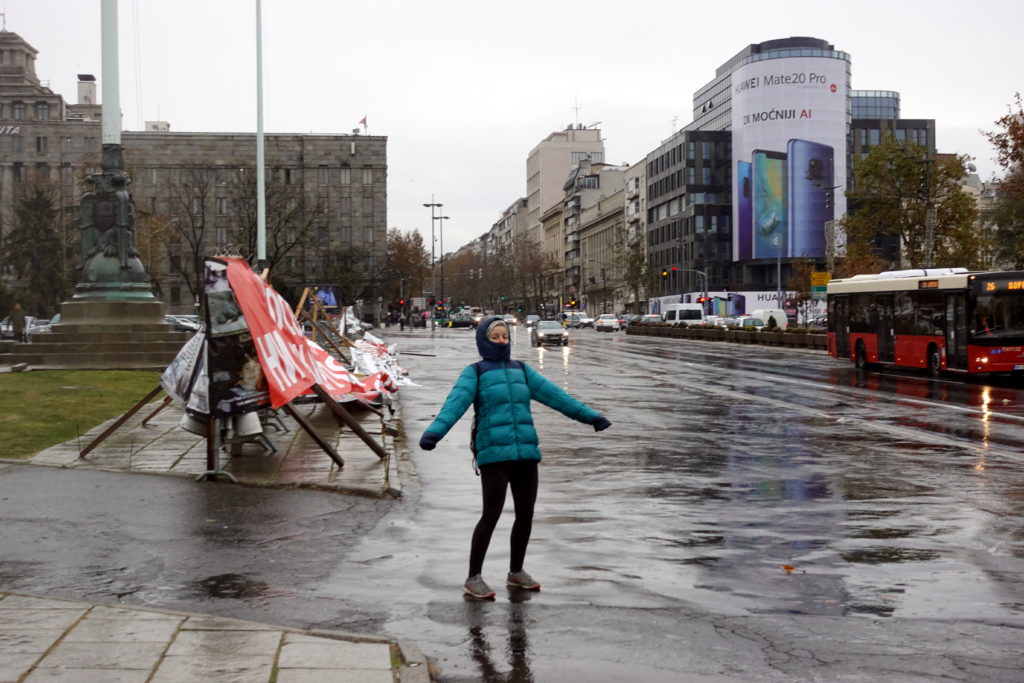
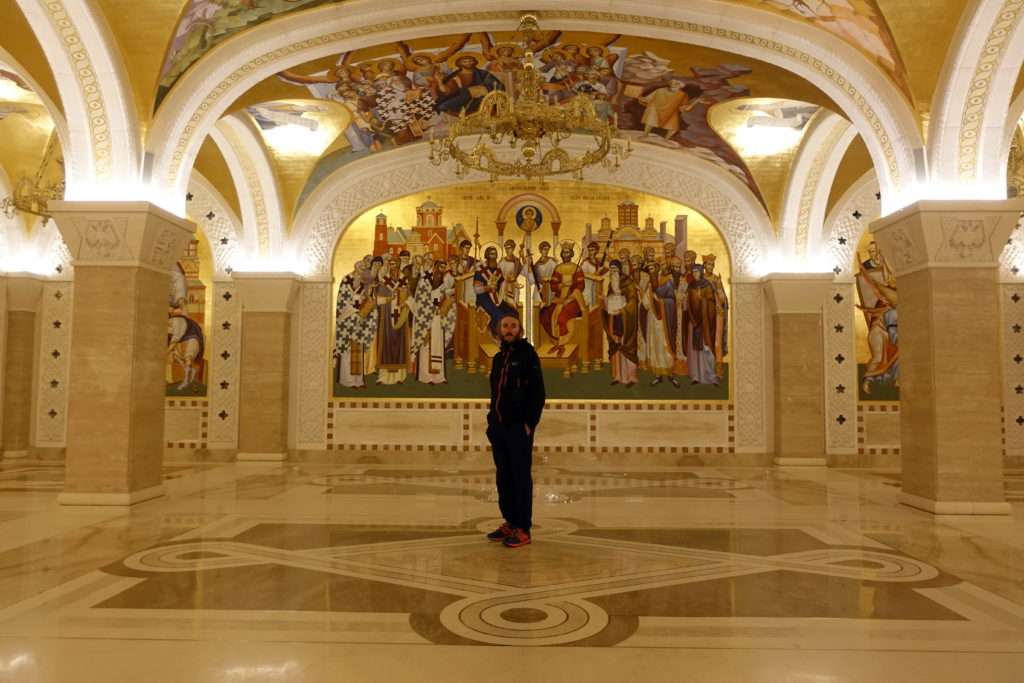
In the afternoon, we made our way back to the hotel and were surprised to find two other cyclists in our room: Corinne and Chris, who were also traveling on a Pino this year. As luck would have it, we have mutual friends in Augsburg and had been in contact with each other for the past few weeks, so we could finally meet. We were relatively close to each other in Kyrgyzstan, then we split – them going through Iran, we through the Caspian and the Caucasus, and even since Istanbul we had been playing cat and mouse throughout the Balkans – Cassie found her favorite French expression: chasse-patate! We finally found a way to join at the same place and same time in Belgrade, the (almost) final destination of their trip. The rest of the day, we exchanged stories of our travels over food and drink.
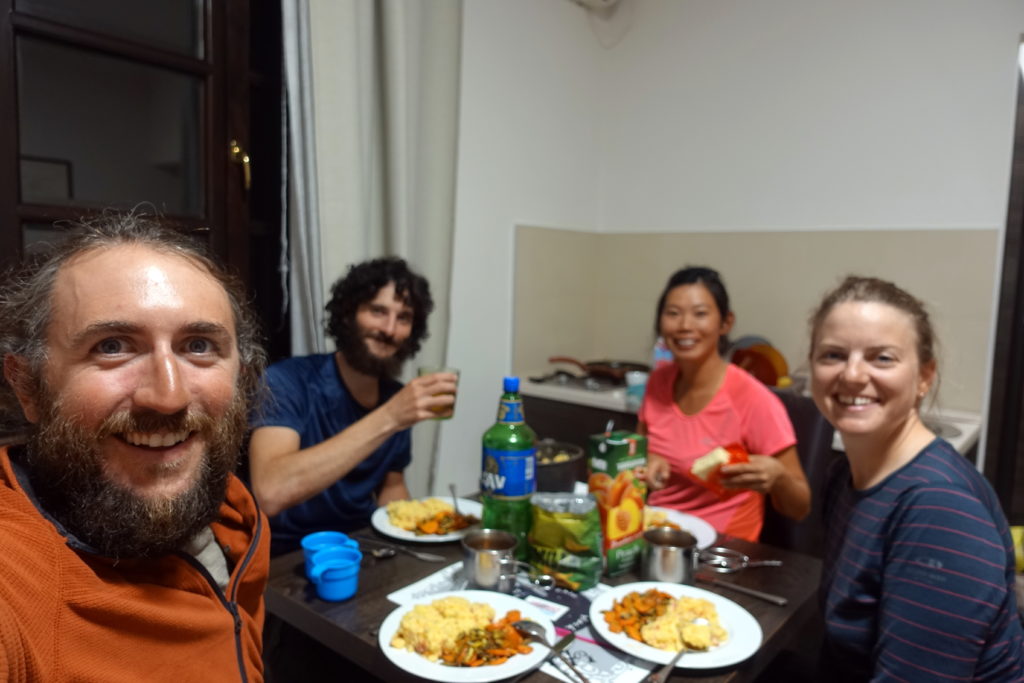
Everyone blurry but Cedric 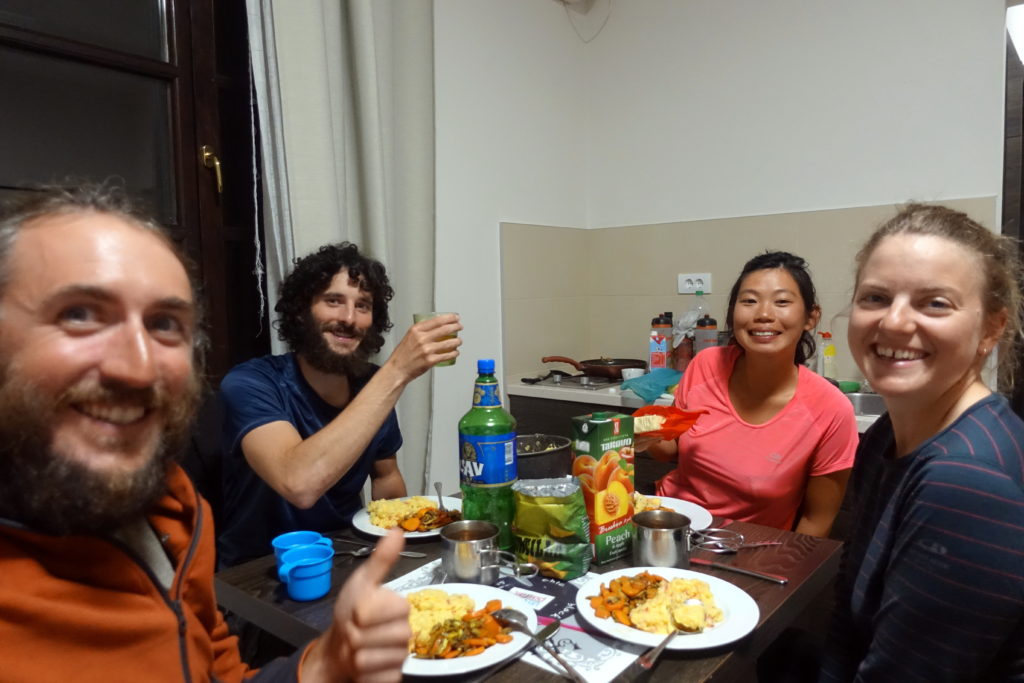
Everyone unblurred but Cedric
The next morning, Cédric and I said our goodbyes and headed north. Corinne and Chris, on the other hand, left to take a bus to Munich and were thus closer to ending their trip. Our day cycling on the road was a blur – with little opportunity for small roads, we joined the constant flow of traffic on a secondary road. The rolling showers and fog didn’t make the ride exciting either, so we cycled into Novi Sad with few breaks and arrived there early in the afternoon. After getting scammed finding an accommodation (a very poorly rated hotel presented themselves as being the owner of the highly rated place next door – and found out about it after paying the night – certain that given the reviews we would not need to check the room first like we used to do in Asia), we went around to discover this historical city and so for the remaining part of the day, we walked around the picturesque downtown. Unlike Belgrade with its plethora of communist-style architecture and busy industrial suburbs, the center of Novi Sad still has an abundance of regal 19th century and older buildings. Novi Sad being on the extreme north east of Serbia, it had been part of multiple other countries (Hungary until recently), and the influence of Austria and other central European powers is a lot more visible.
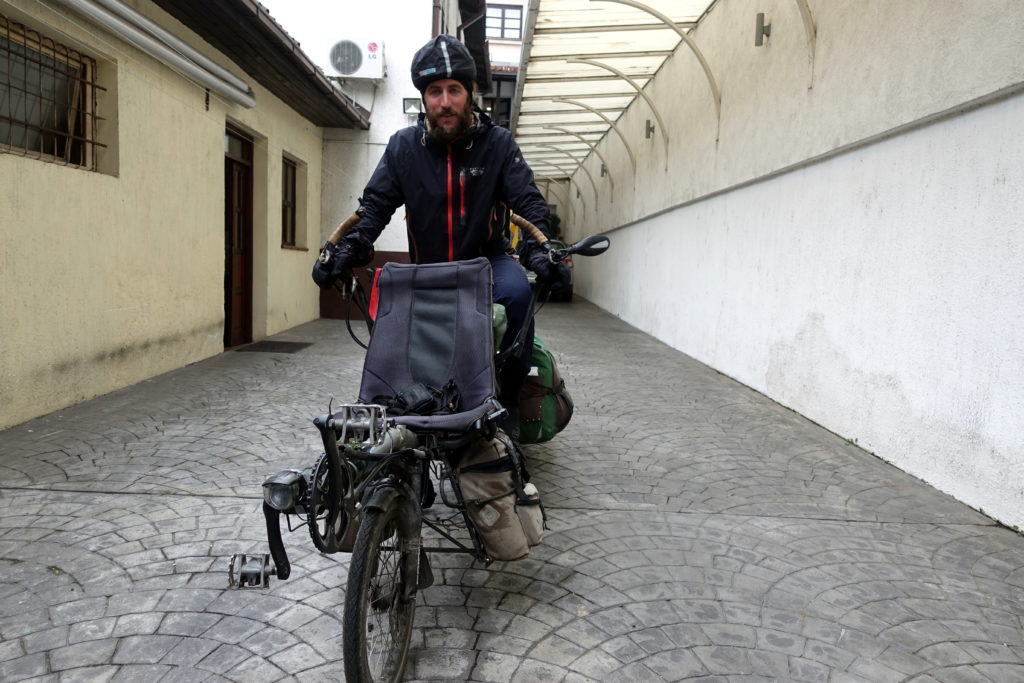
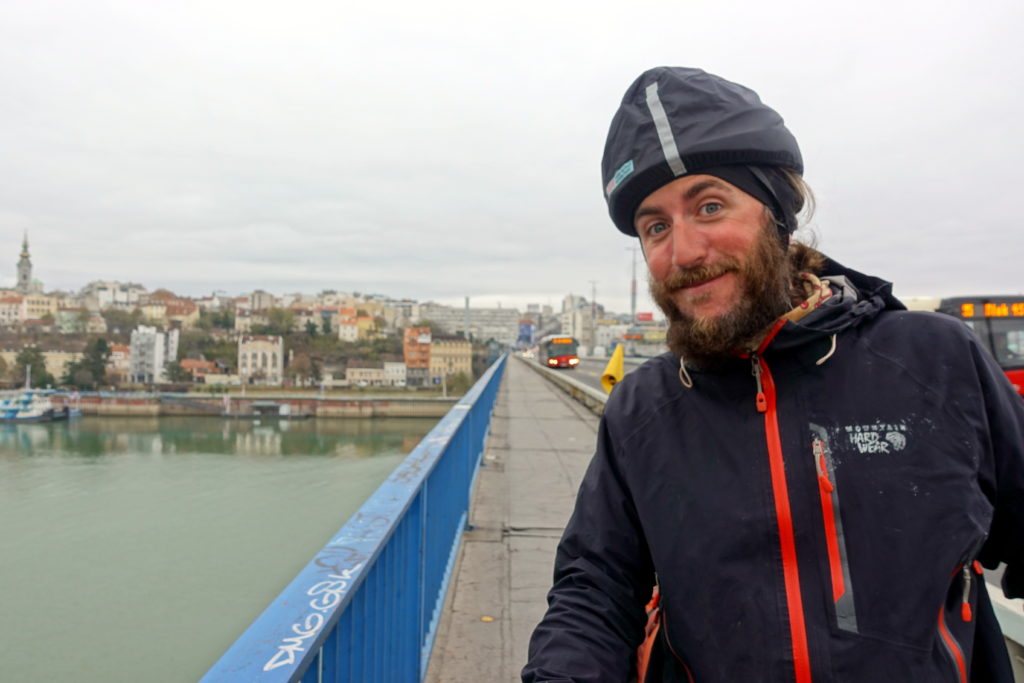
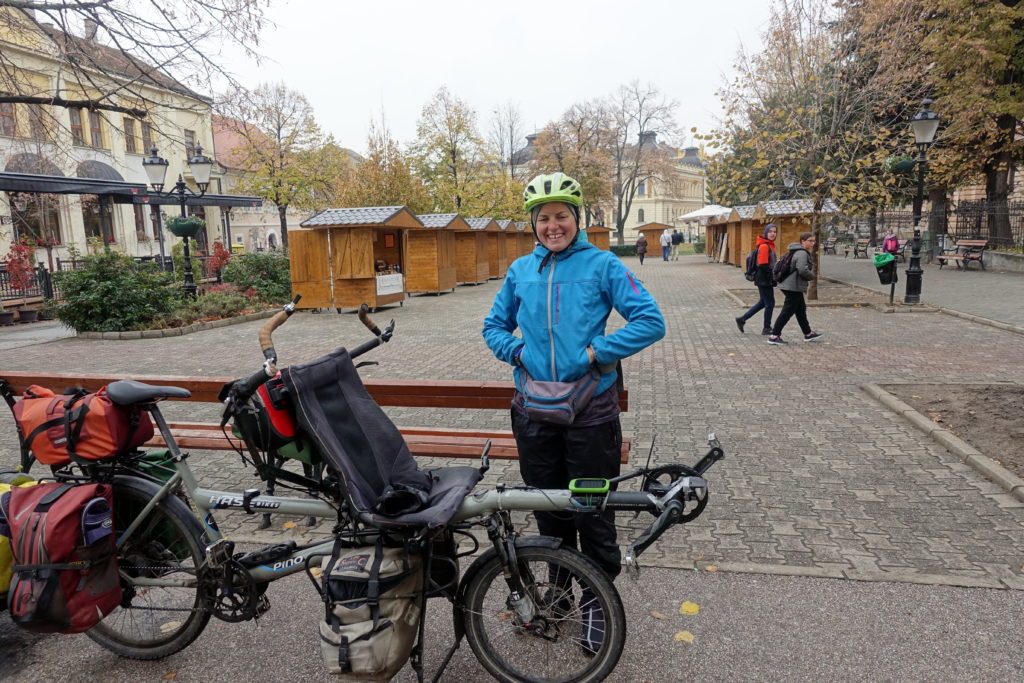
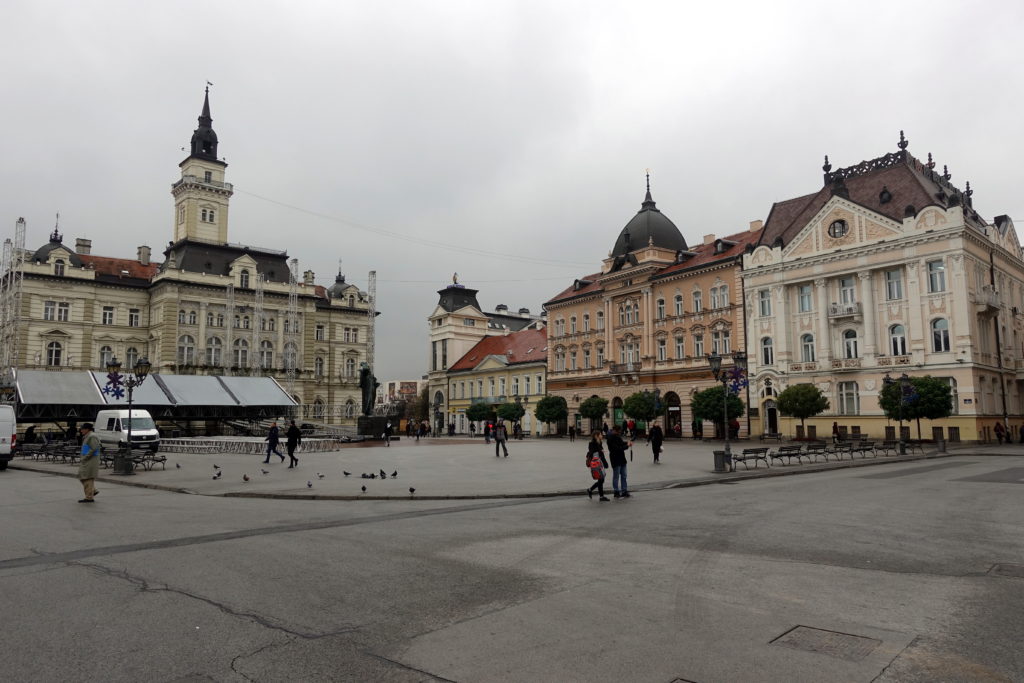
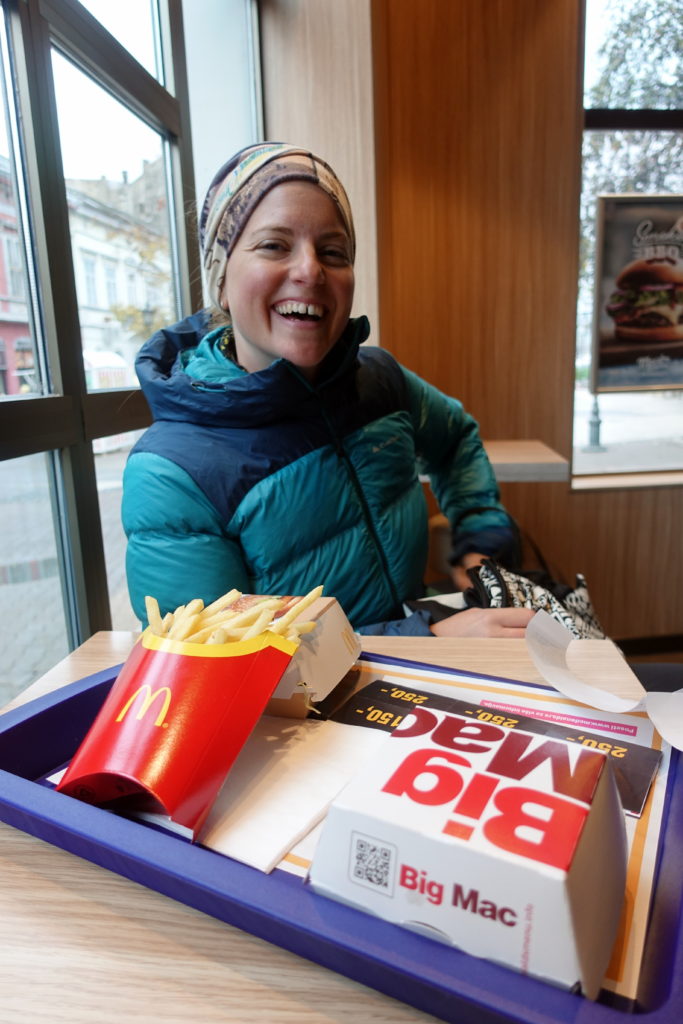

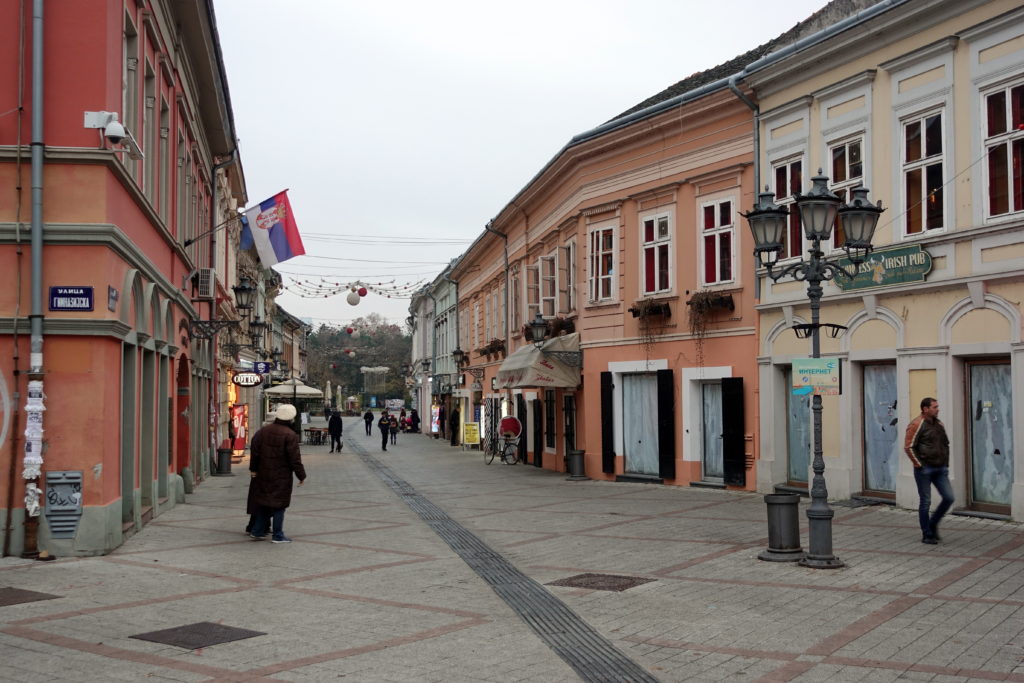
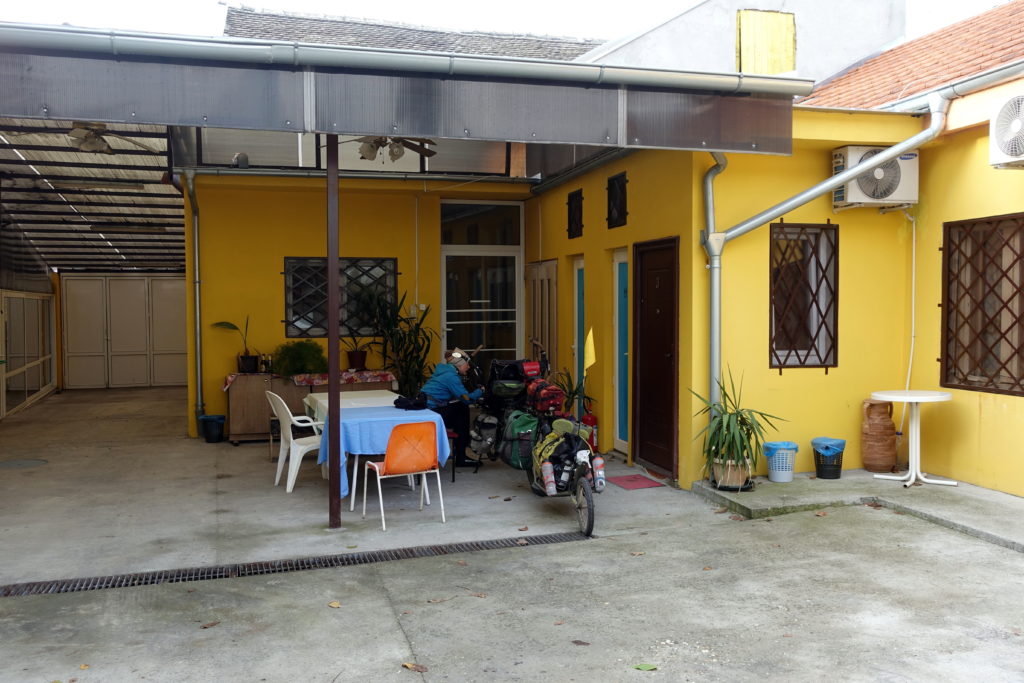
When we woke up the next day, it seemed like the bad weather was behind us (for now). We packed our things and decided to head for the Serbia-Croatia border. Cédric and I were getting tired of the traffic and the current hotel owners made us long for friendlier hosts – so we decided to give a different country a try. However, that first meant cycling with the traffic to Backa Palanka. For a kilometer or two outside of Novi Sad, we thought we found a newly paved bike path along the Danube (and the sight of a road cyclist made us hopeful), but the trail ended abruptly, so we pushed our bike back to the road. We got rid of our excess dinar (the Serbian currency) at the last supermarket and then crossed the Danube into Croatia. And just like that, the traffic disappeared. As we were riding through some small towns along river, we noticed that some houses were still riddled with bullet holes from the Croatian war of Independence. Many houses had a fresh coating of stucco, but some buildings bore scars as a testament to the war. Before finishing our day in Vukovar, we visited the military cemetery, which was another memorial to the war. Serbia is just across the river, and Serbians are not the souvenir of a good neighbor in here. The Balkans is now composed of many small countries that may look silly on a map, but the cultural difference is still significant – it is never sufficient for wars, but within a few kilometers we went from an industry-based Christian orthodox country to a Catholic wine growing touristic region.
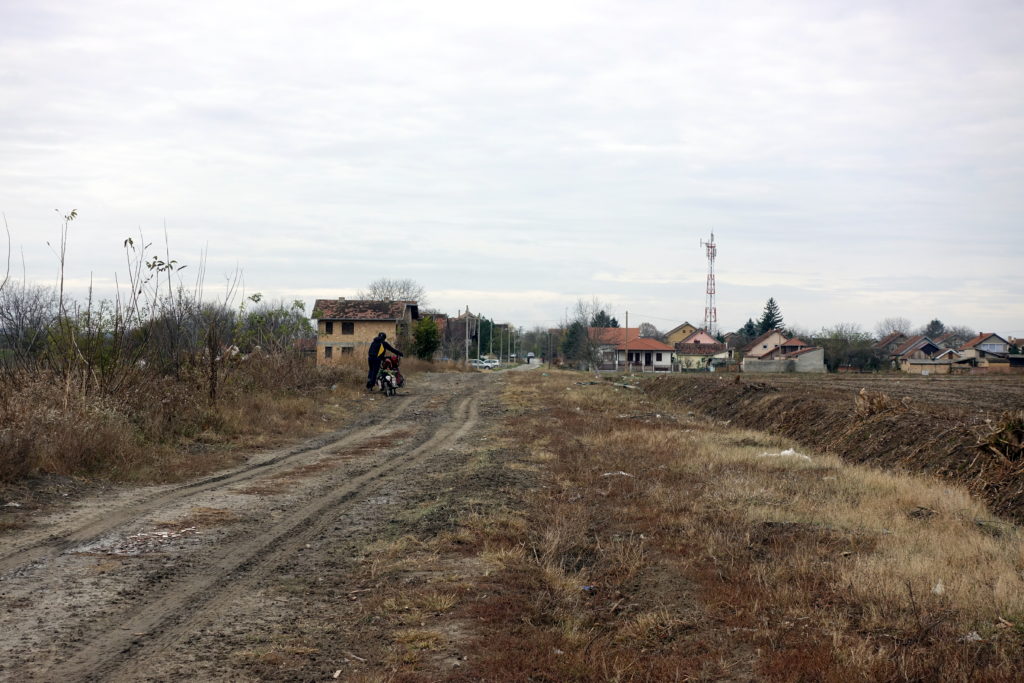
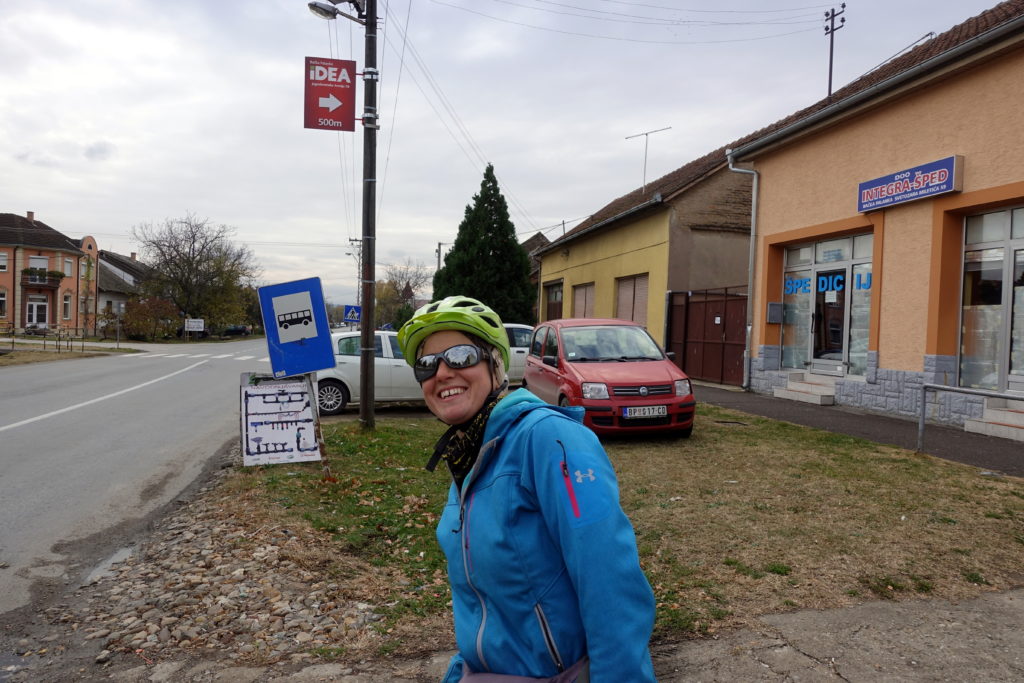
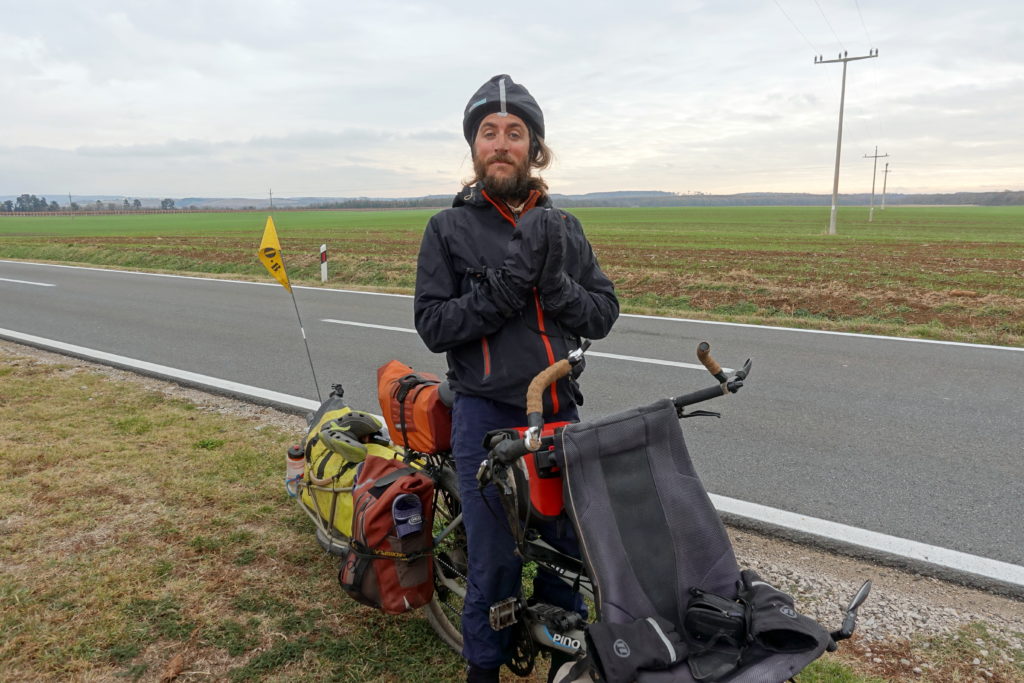
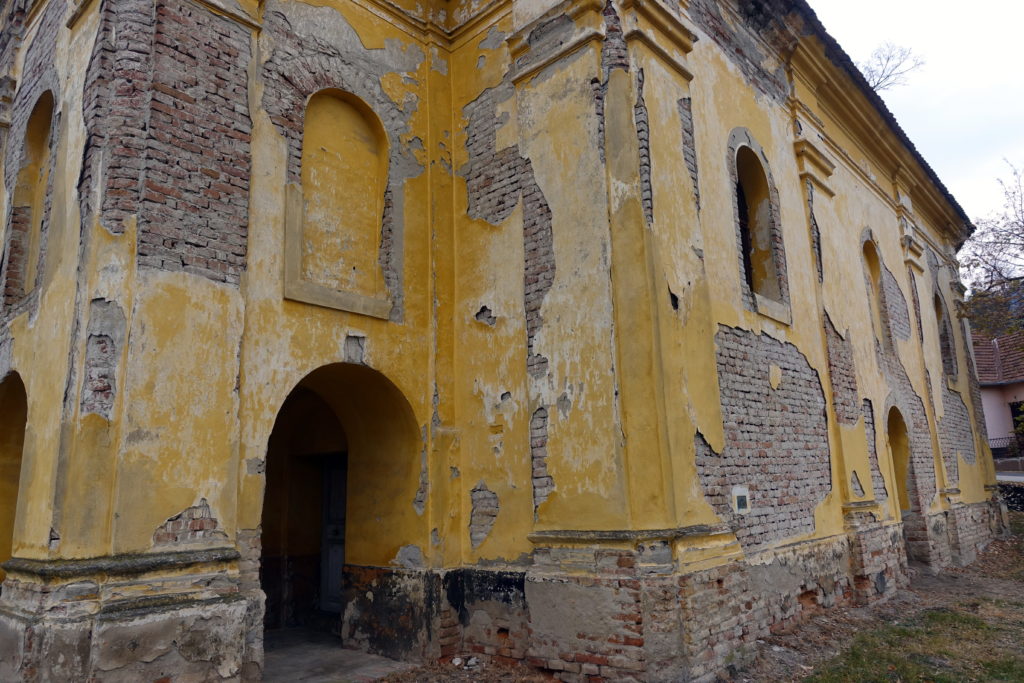
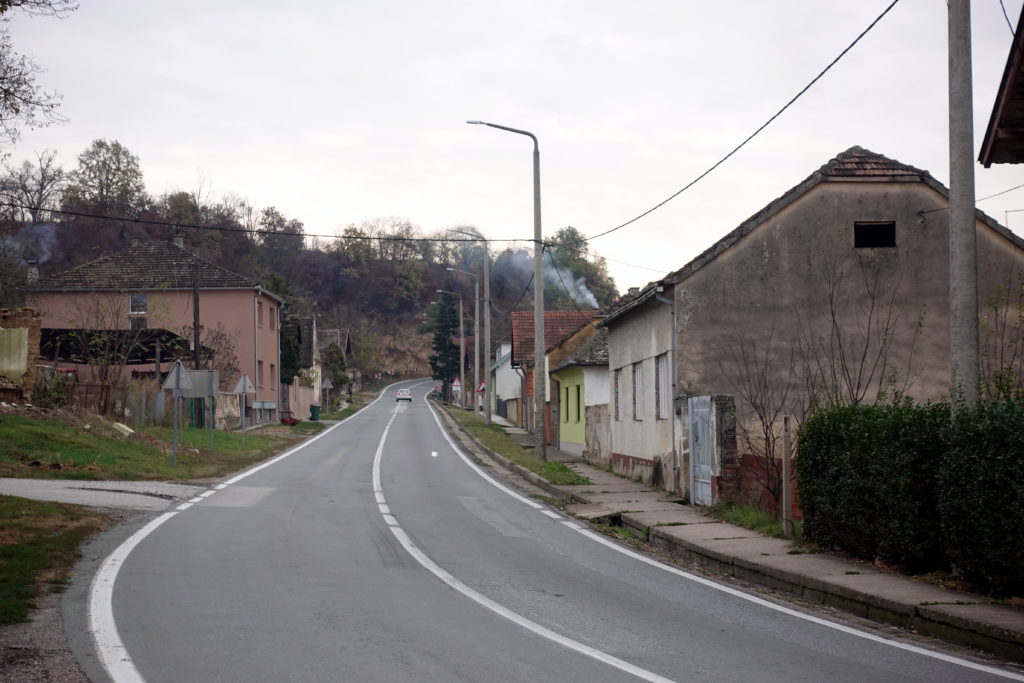
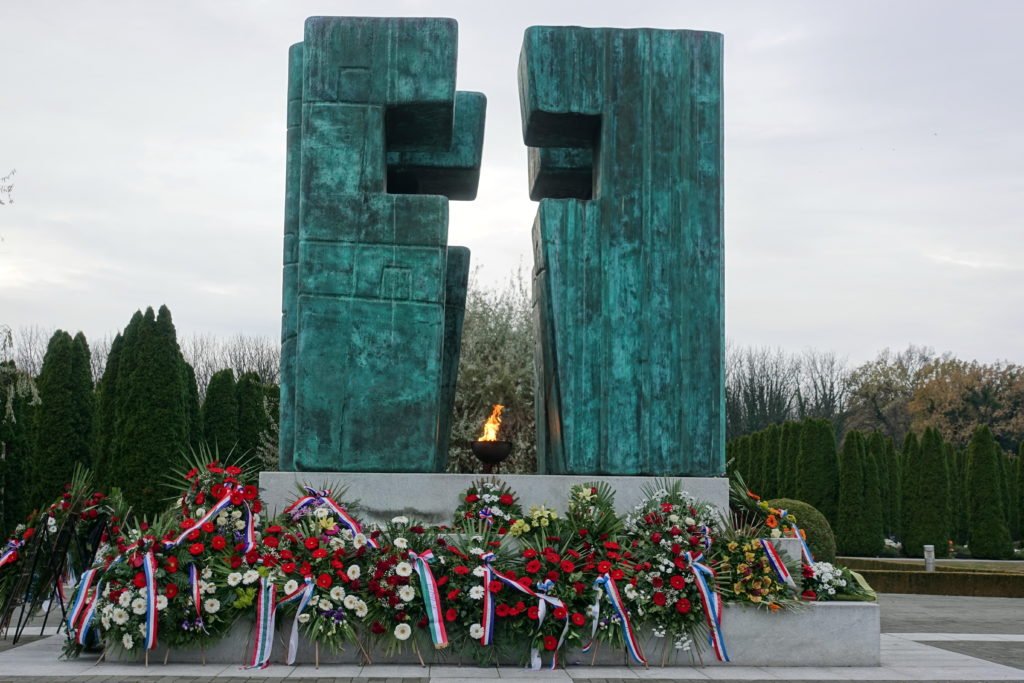
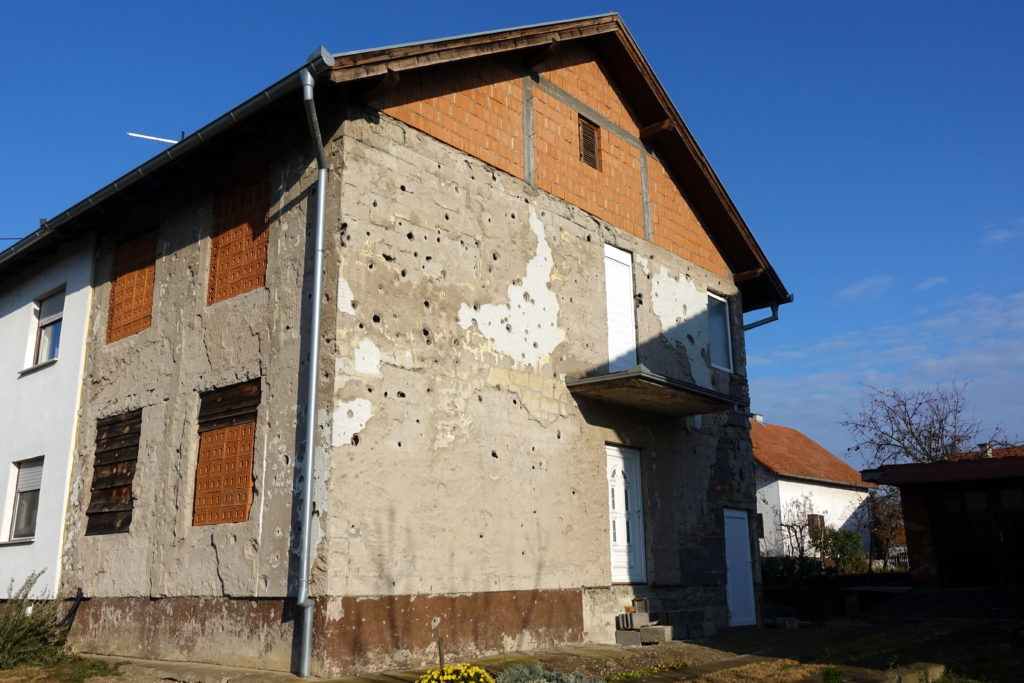
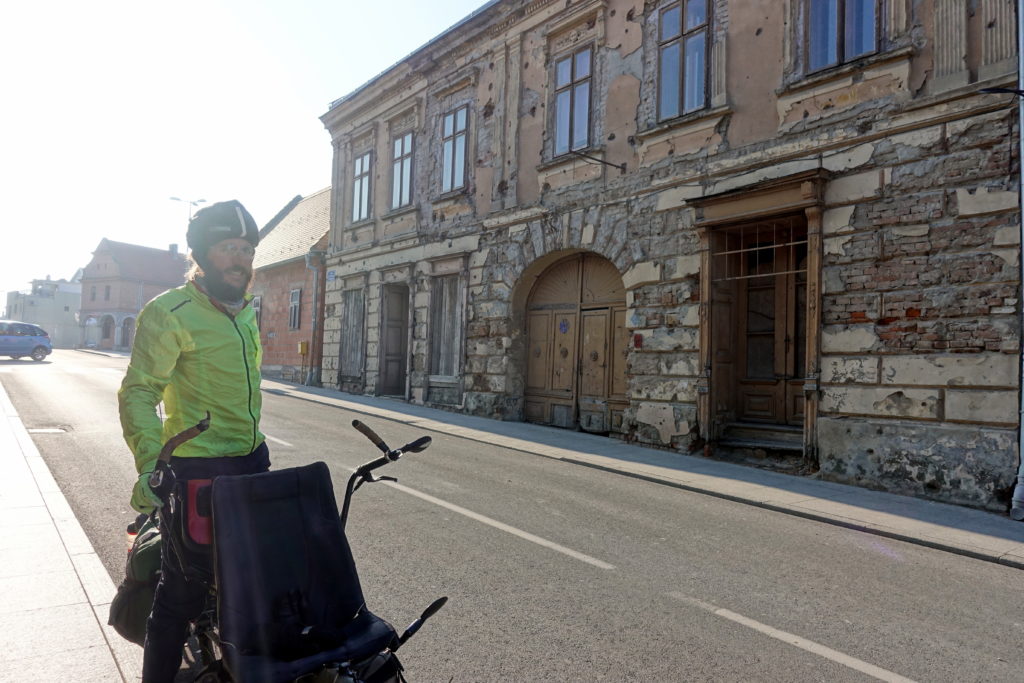
The next morning, we left Vukovar with brilliant blue skies and continued our journey north. Again, without many other options, we had to join a larger, more trafficked road on our way into Osijek. When we cycled into the city, we were greeted by bike lanes (they’re becoming more prevalent to more north we go) and stopped in the Tvrda, an old 18th century fortress built by the Hapsburg Empire. Heading west down the main street, we were surprised to see multiple Art Nouveau buildings lining the streets – coming from places with cheap, new construction projects, cinderblock houses, or soviet-style apartment buildings, this immediately gave us the feeling of being in Western Europe. We wandered around the downtown to look for a lunch spot, and finally found a boat restaurant on the shores of the Drava river. In the afternoon, we cycled through small villages and farmland to get to Valpovo, where we called it a day.
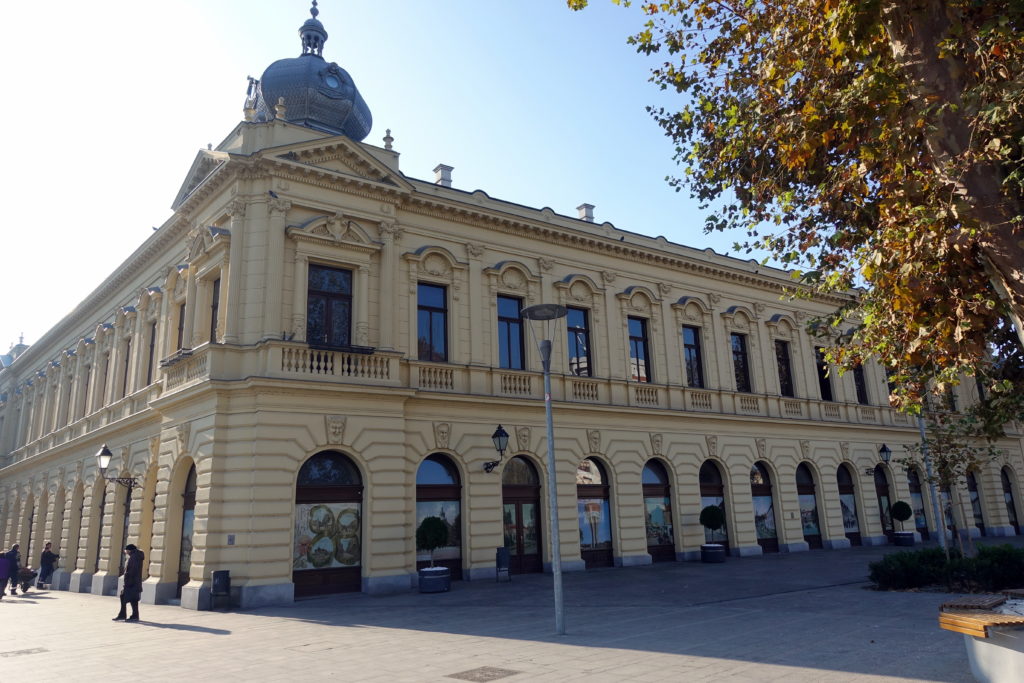
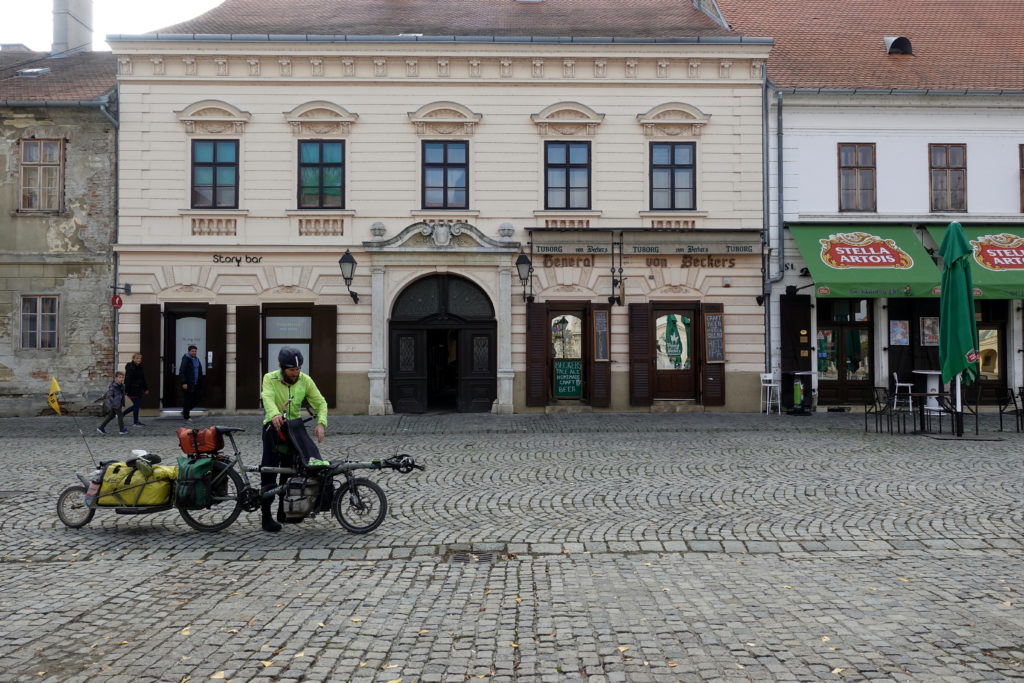
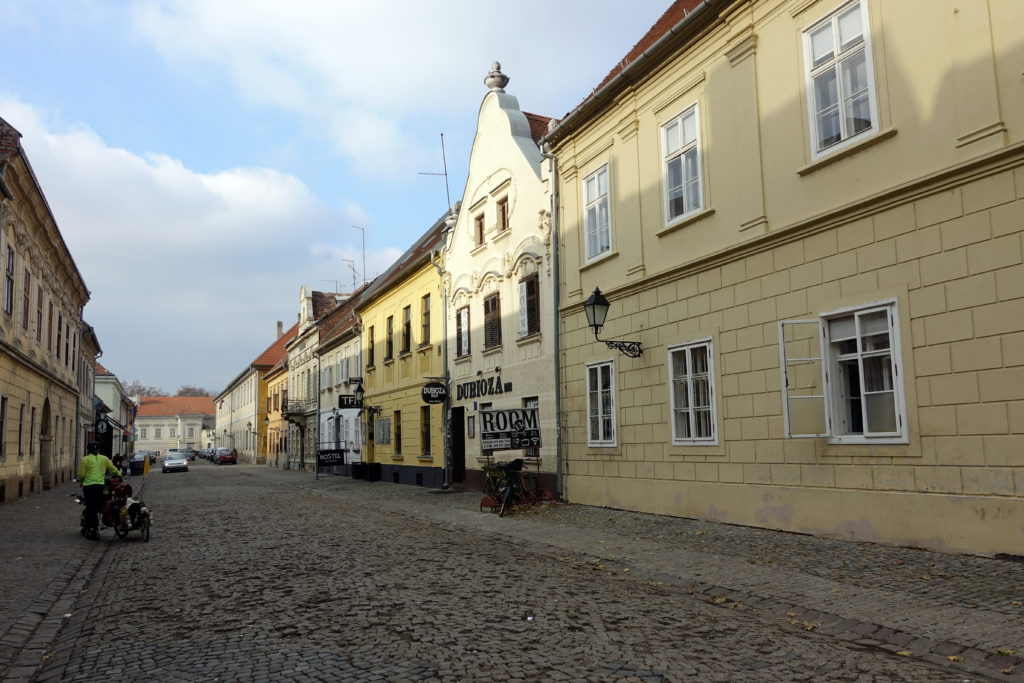
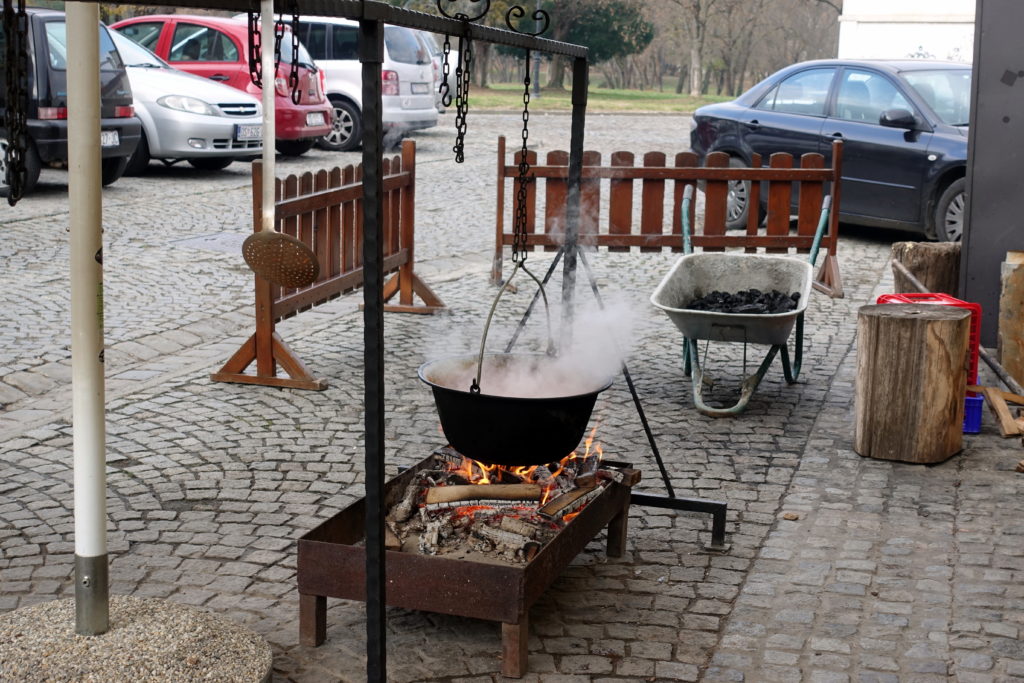
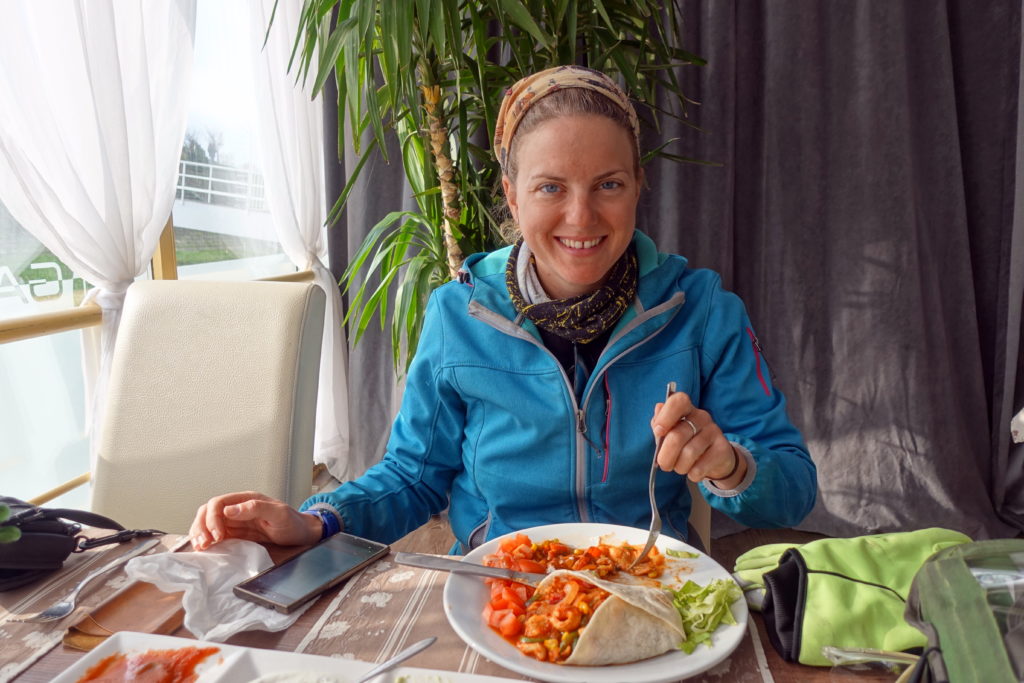
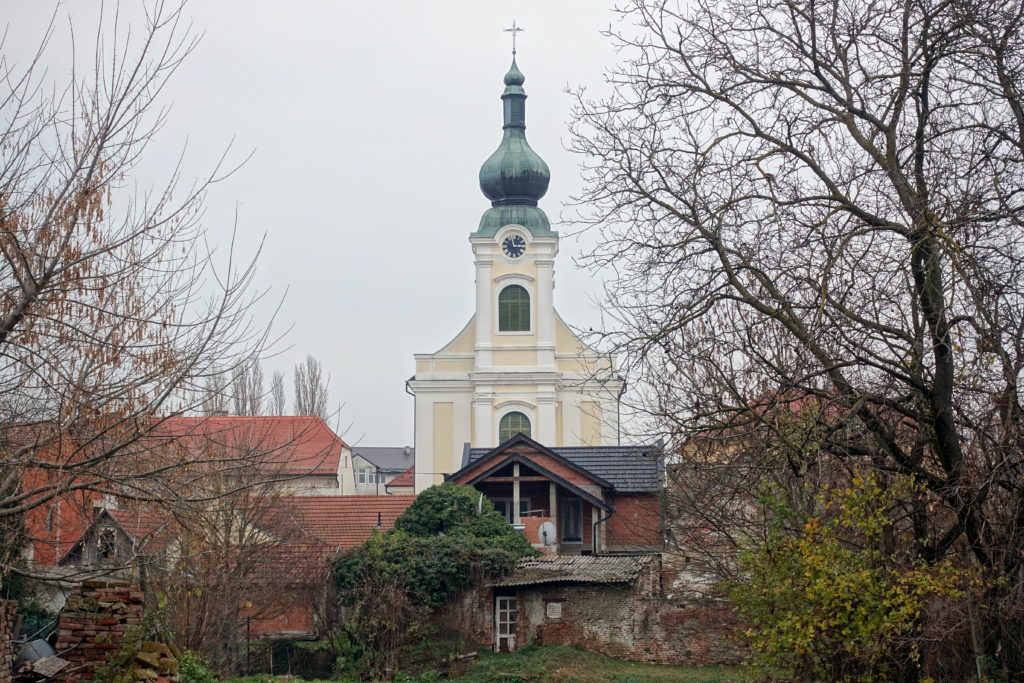
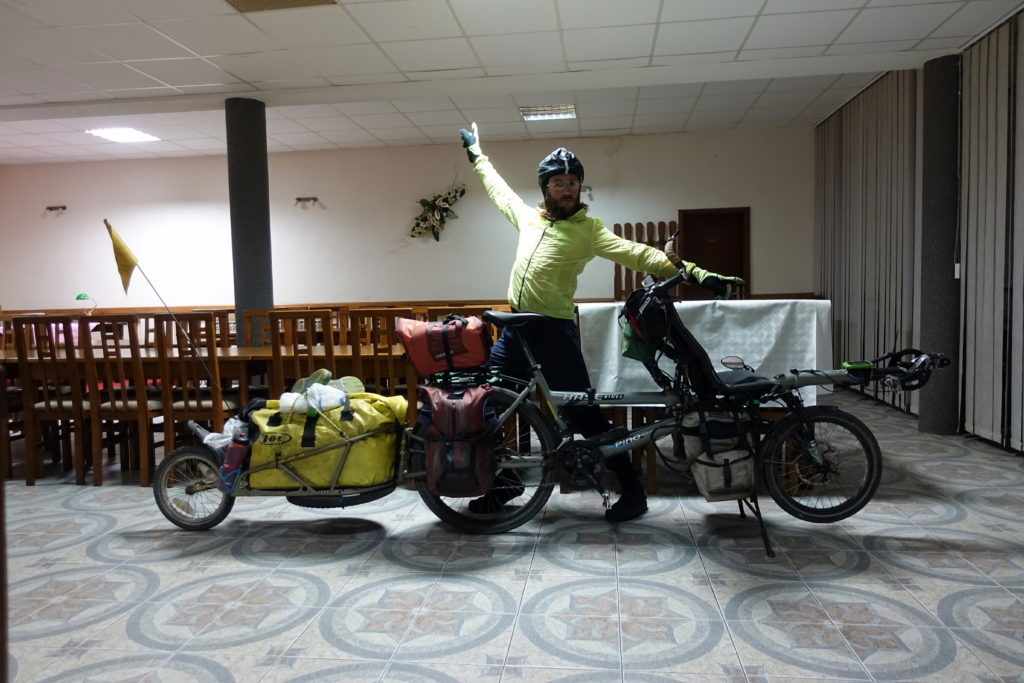
By the time we packed our bike the next morning, we noticed that the gray clouds were promising rain for our ride. Our plan for the day was to cross the Croatia-Hungary border and ride towards Pécs. Leaving Valpovo around 9am, we crossed the Drava River and continued north to the border town. The Hungarian border, with its new fencing and barbed wire, flanked us to the left and was a reminder of Hungary’s harsh stance against refugees and migrants. Shortly before the border, we met a few guys who where slaughtering and smoking a pig and offered us a few shots of their homemade schnapps, but we didn’t feel quite up for drinking at 10:30 in the morning. Just as we crossed the border into Hungary, it started to sprinkle and didn’t let up. We rode through small picturesque villages with their rows of wine houses and the wine bars in Villany. This would have been a perfect area to explore on a summer day, but we were determined to find a dry room in Pécs, so we continued cycling. When we arrived in the afternoon, Cédric and I dropped off our soaking wet bags and went out to explore the city while there was still some daylight. We had a bit of luck and the rain stopped just as we arrived in the city. Many downtown buildings were built at the turn of the 20th century and exhibit a neo-baroque style, but there are other vestiges of former periods and rule of other Empires, like a mosque-turned-church built during the Ottoman occupation and church foundations built during the Roman Empire. Our first reaction was that cities in Europe are definitely the most beautiful, sorry the rest of the world (okay, other countries or continents have other good things)!
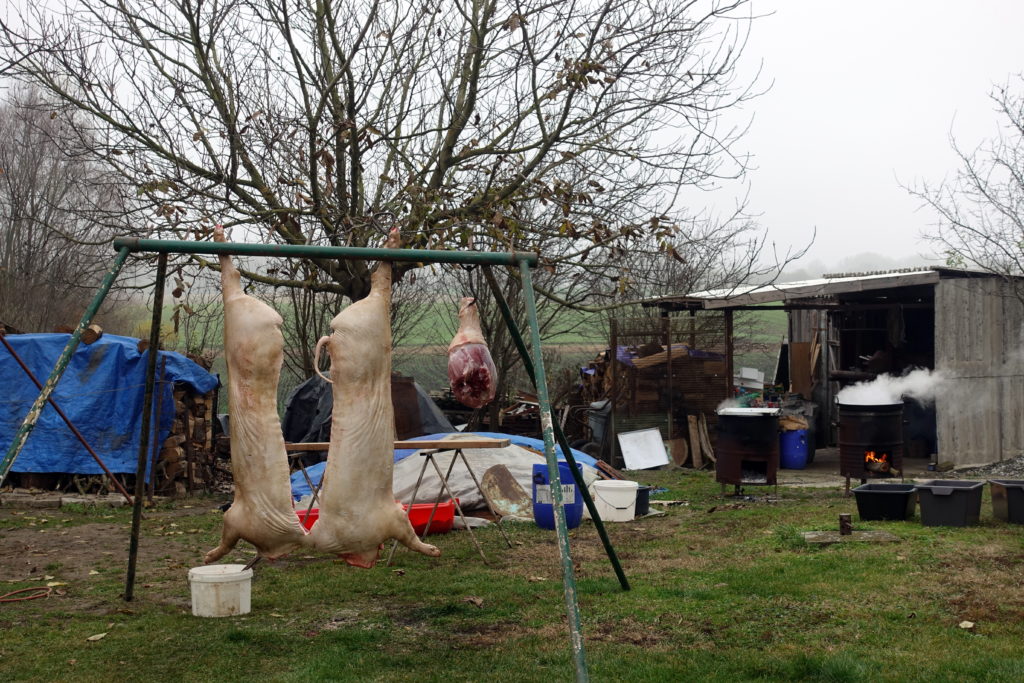
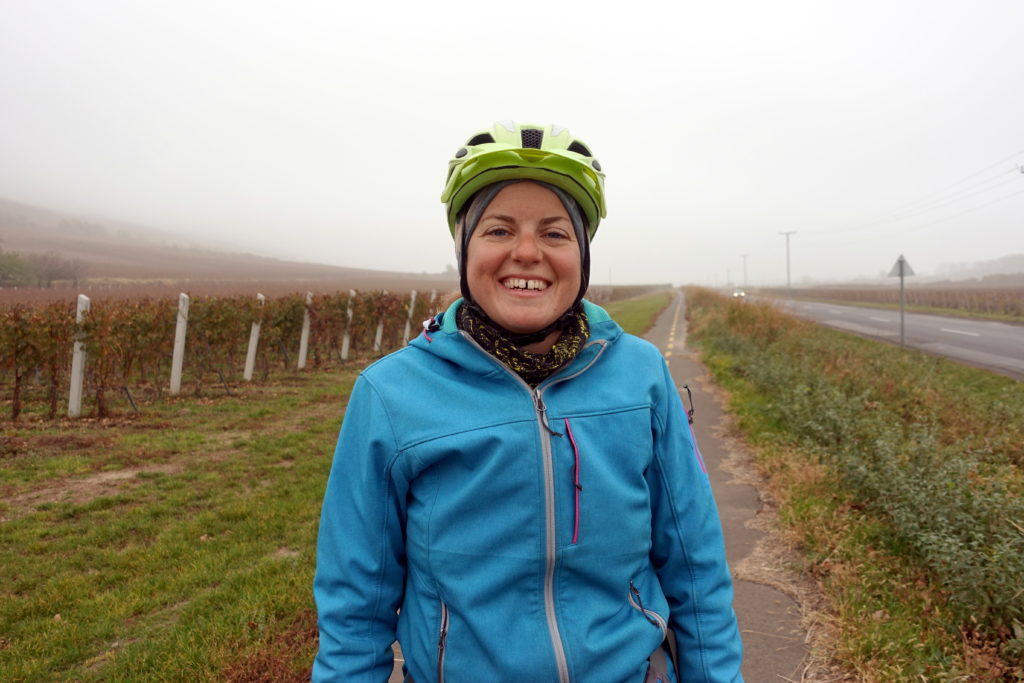
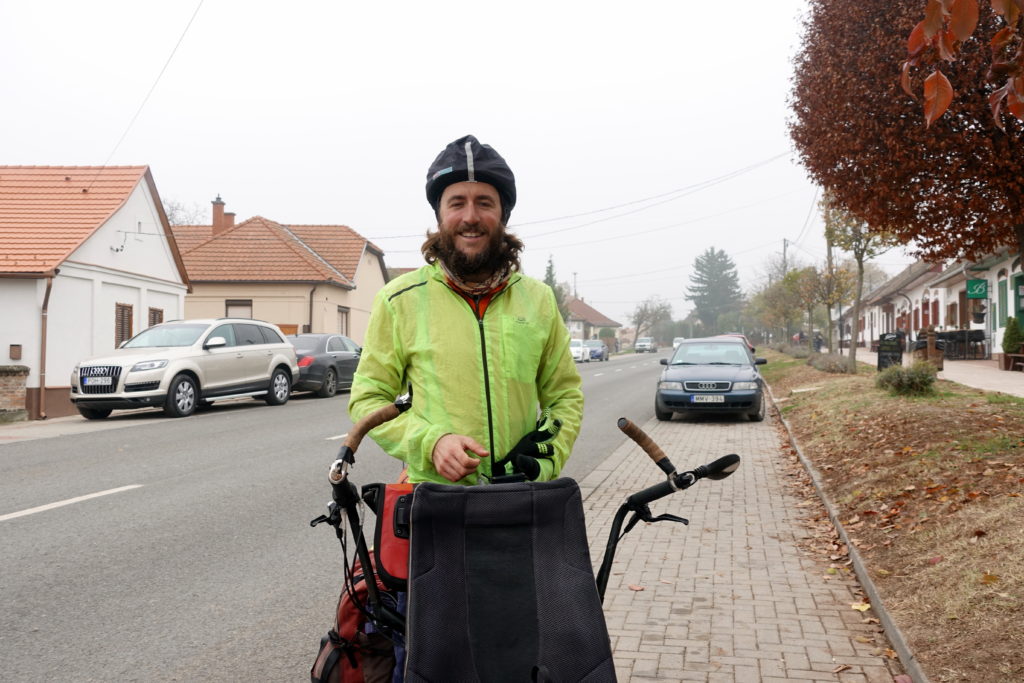
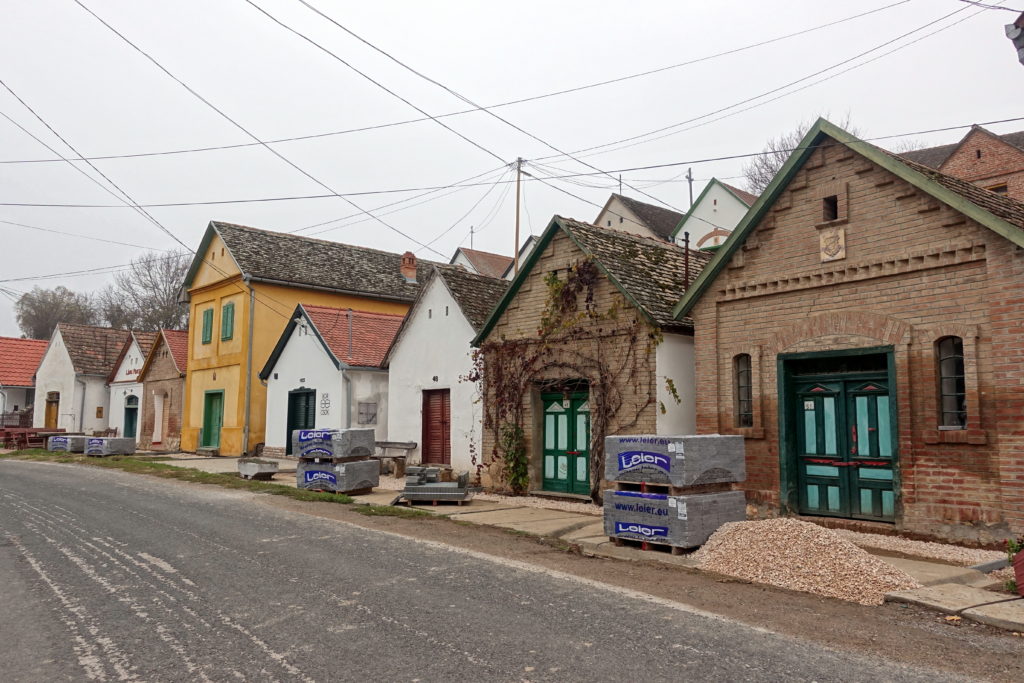
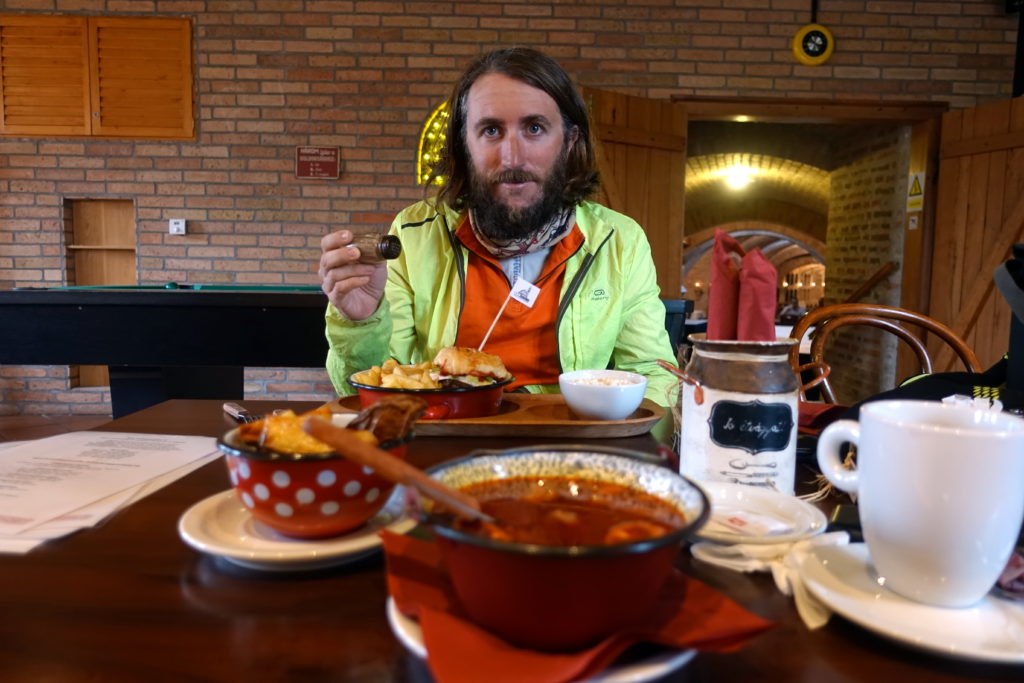
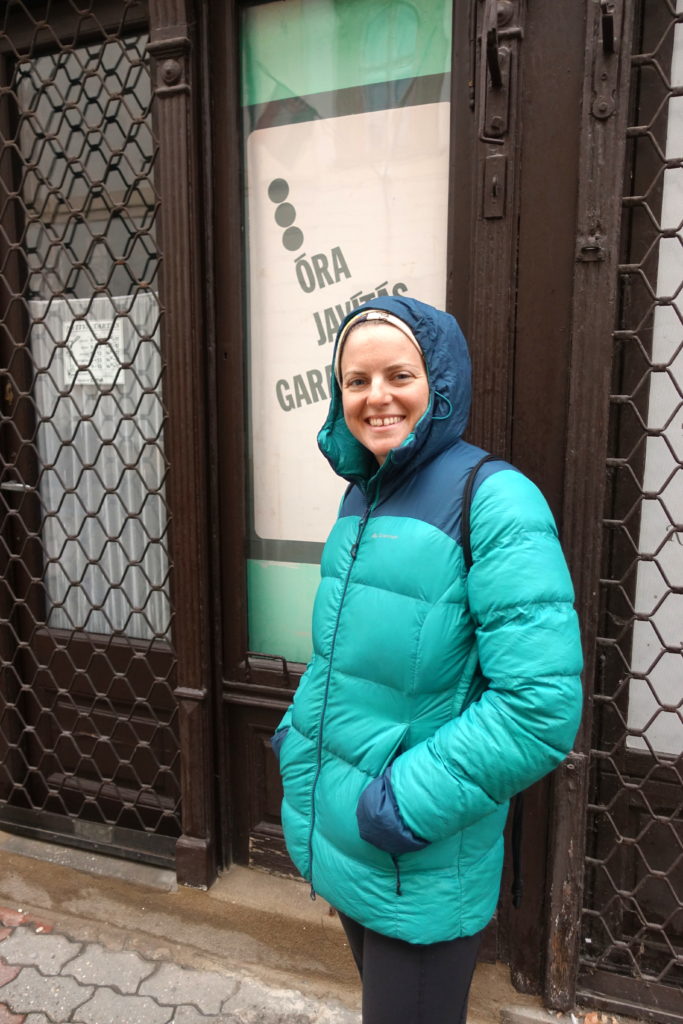
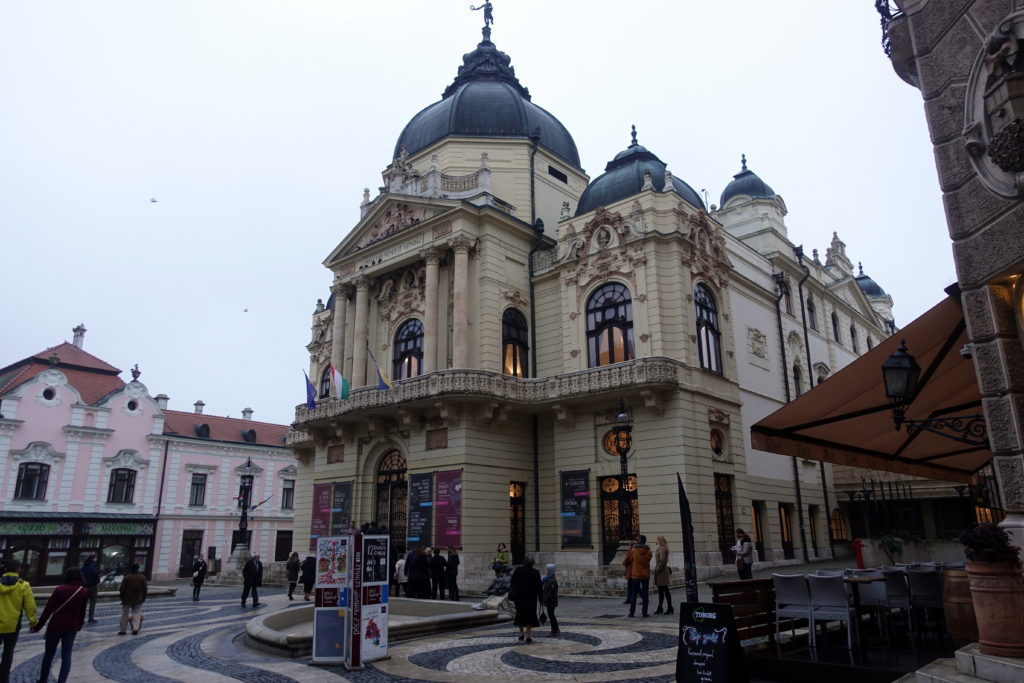
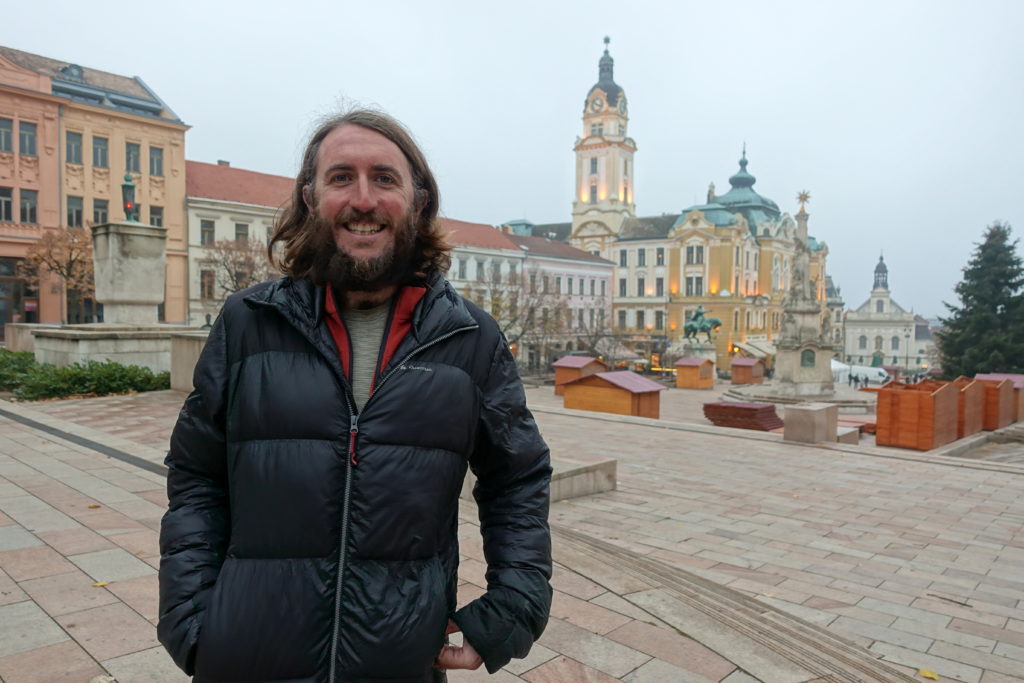
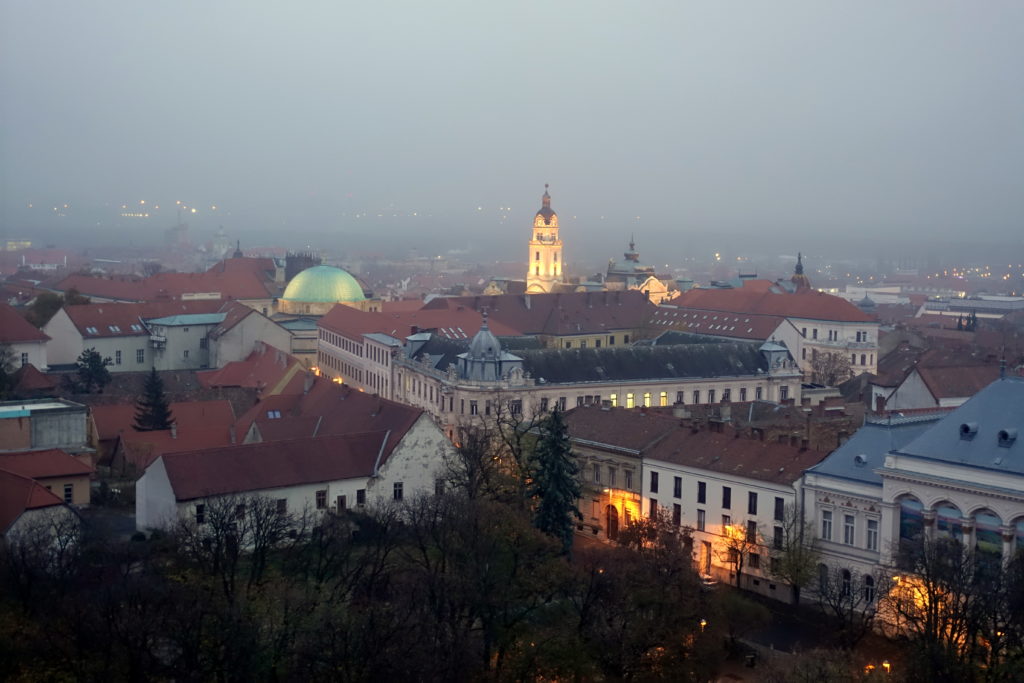
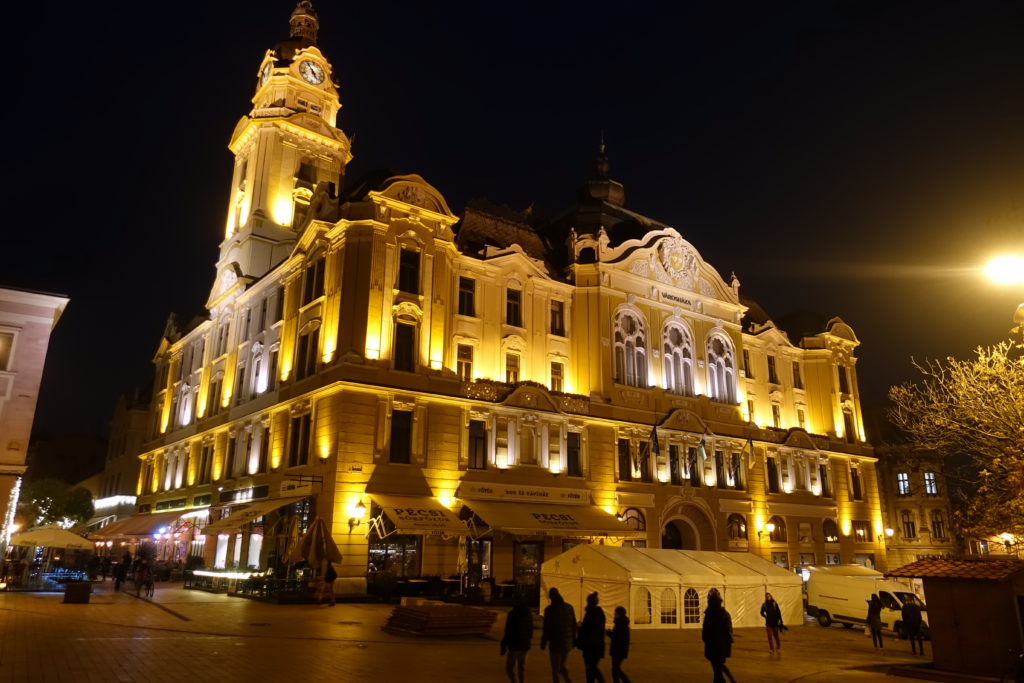
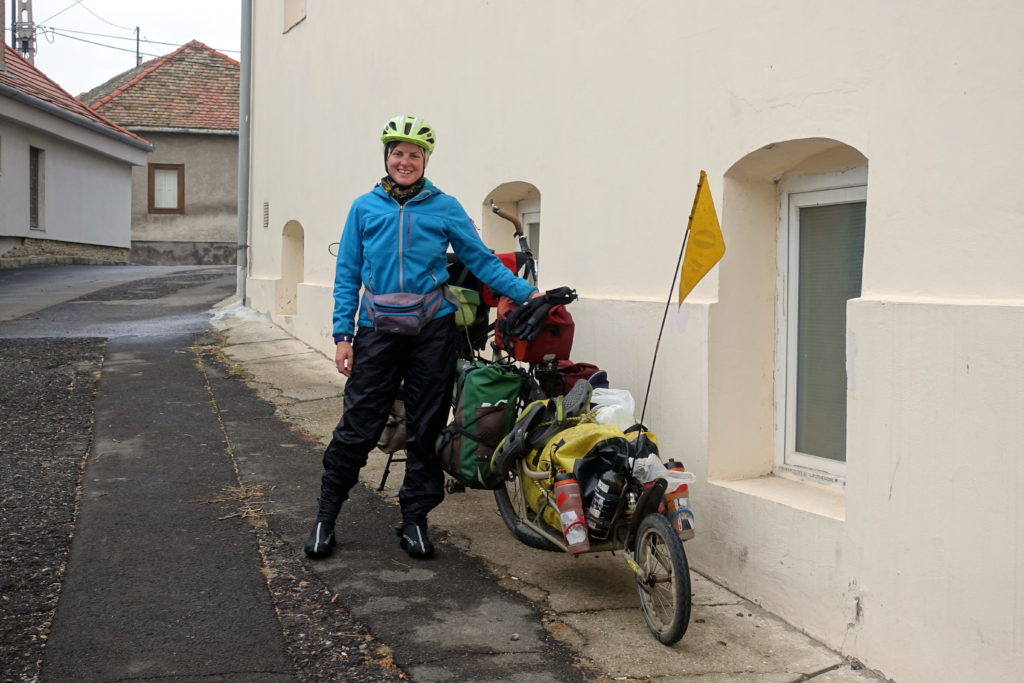
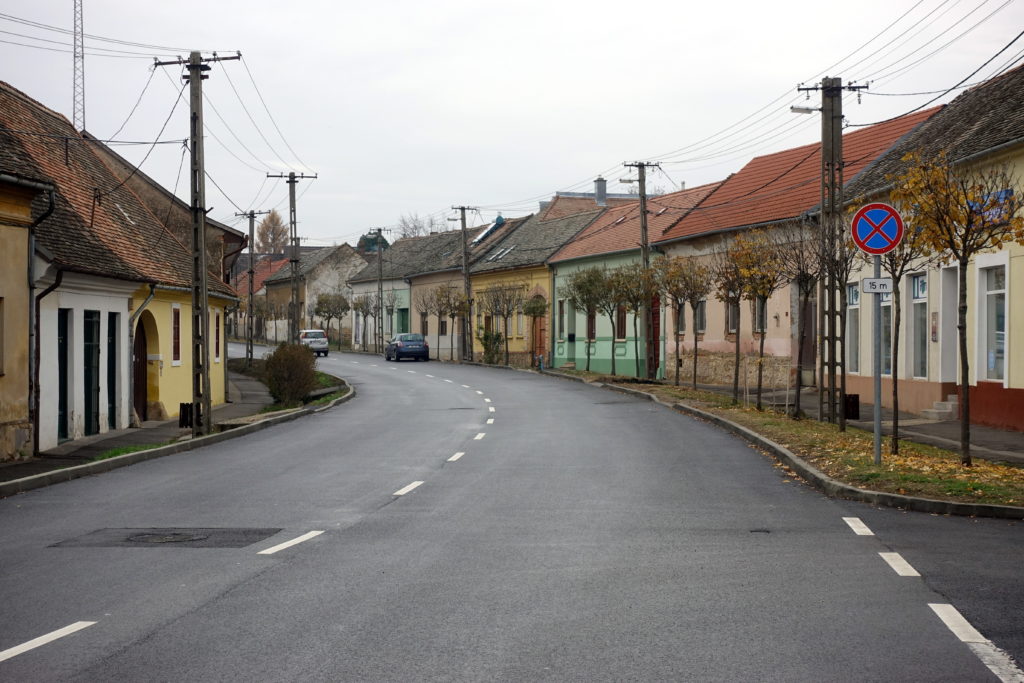
The next morning, the bits of the sun were poking through the clouds, and we were thinking that we’d have an enjoyable ride into Szekszárd. Due to the rain from the previous day, Cédric diligently oiled our gears and chain, but we discovered that the lubrication exacerbated a growing problem with our drivetrain: one of the chainrings was so worn down that the greasy chain would just slip over the teeth. This is a big problem because only one person is transmitting the force to move our iron horse. After 45 minutes of unsuccessful meddling, we managed to set things right with a well-placed zip-tie putting more tension on the chain and thus sticking it onto the chainring.
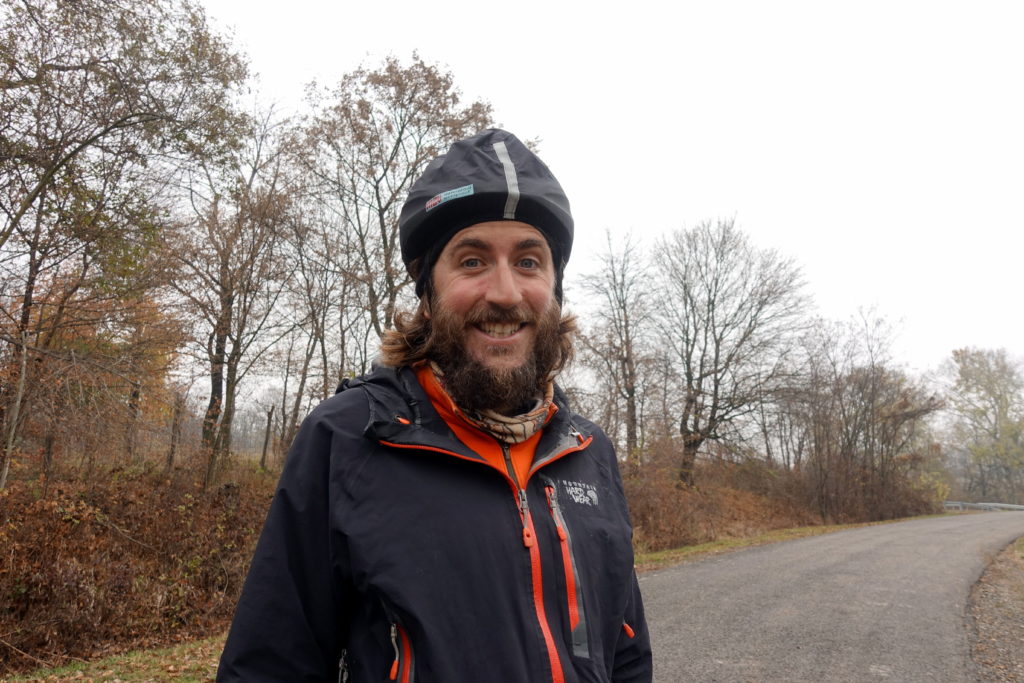
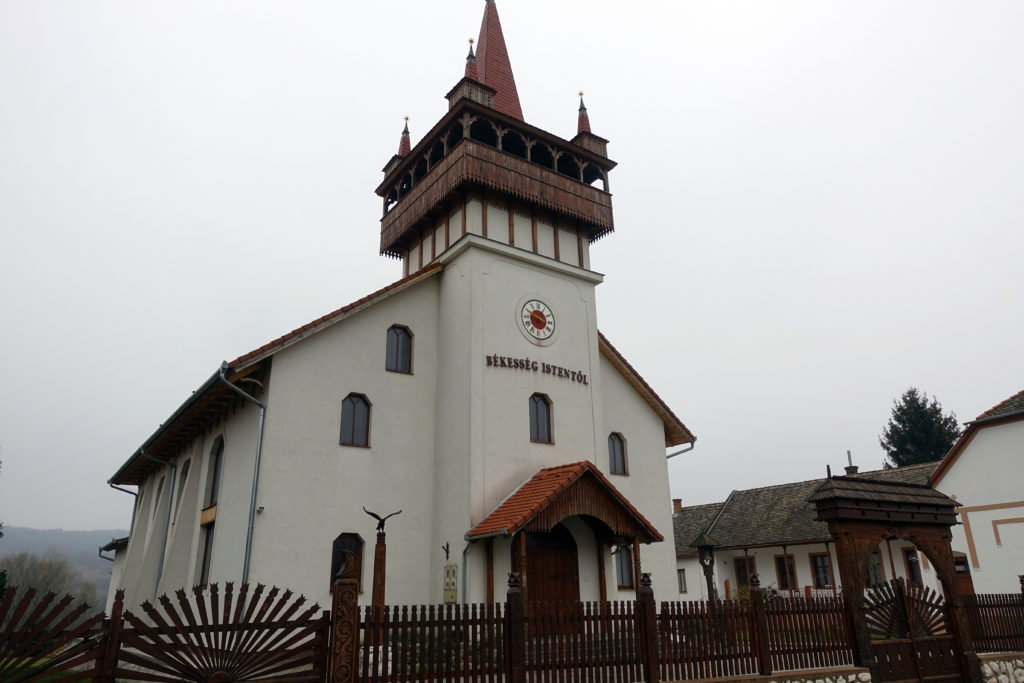
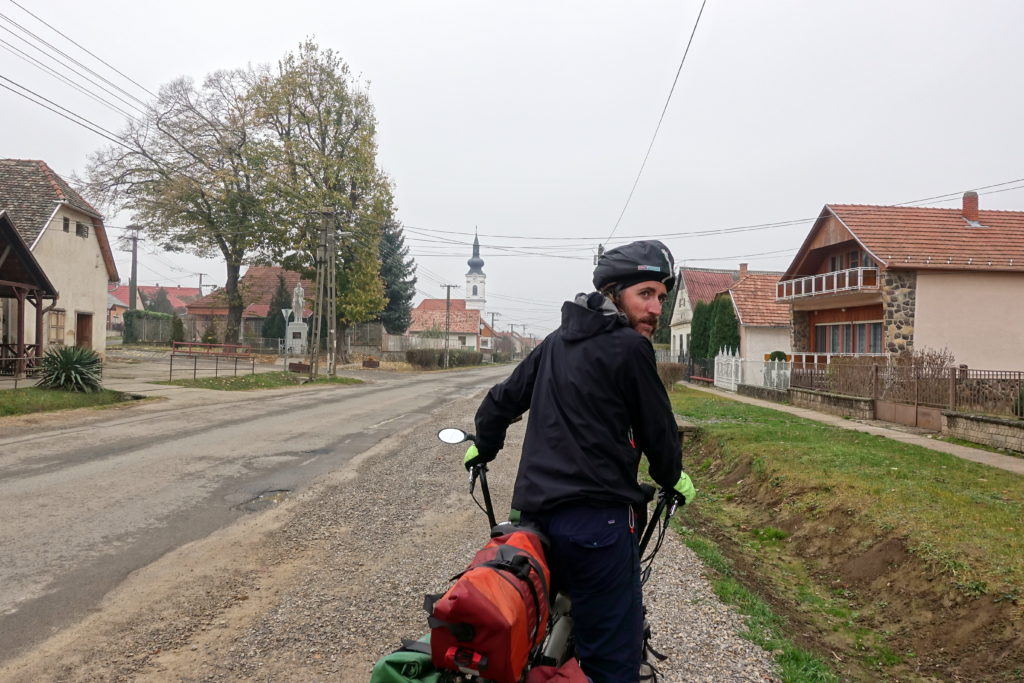
Upon leaving Pécs, we followed some hilly secondary roads north. Hungary is also the first country in Europe where we saw ‘No bicycle’ signs on the more-trafficked roads (which is probably a good thing, as those roads mean in Hungary that there is a quiet alternative nearby), but this meant that we spent the day swerving through the hills to stay on the correct roads. Hungary was also the first country where we met many people cycling as a hobby or sports – after all countries we visited, doing (and no watching!) sports is apparently mostly a western countries thing. Around lunch time, the heavens once again opened up and we were rained on the rest of the day. Towards the end of the day, we arrived in Szekszárd in a downpour and were happy to find our warm apartment for the night.
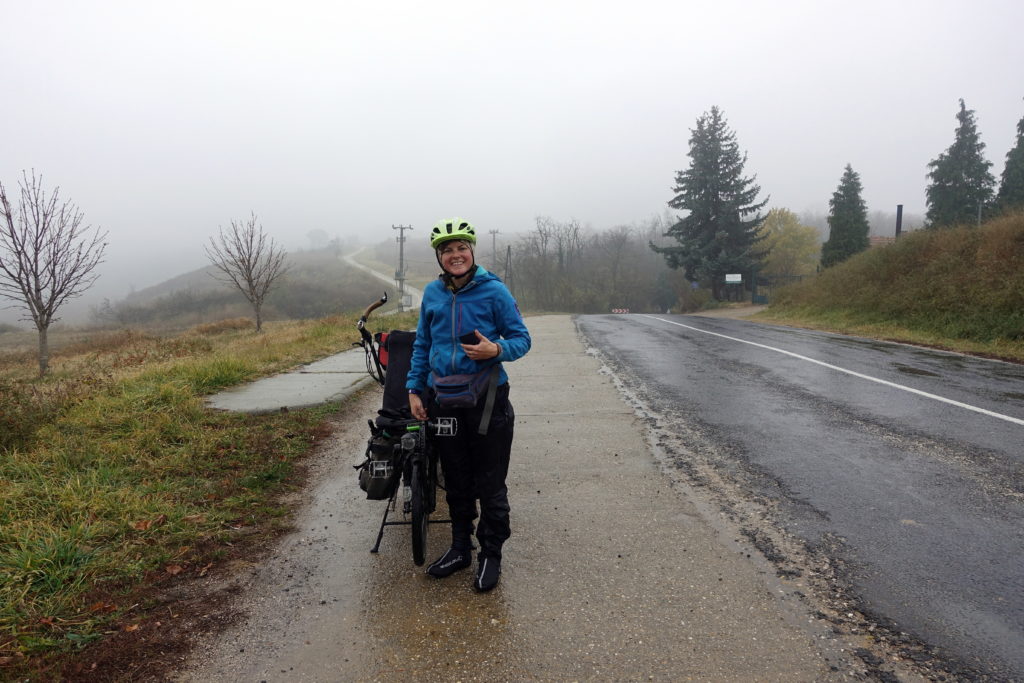
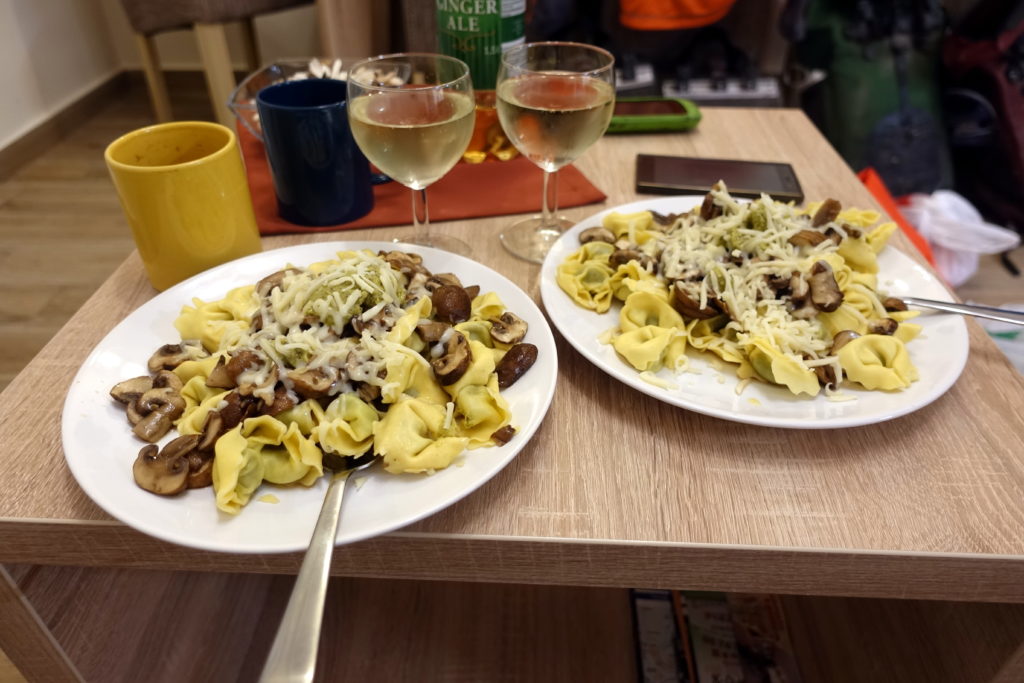
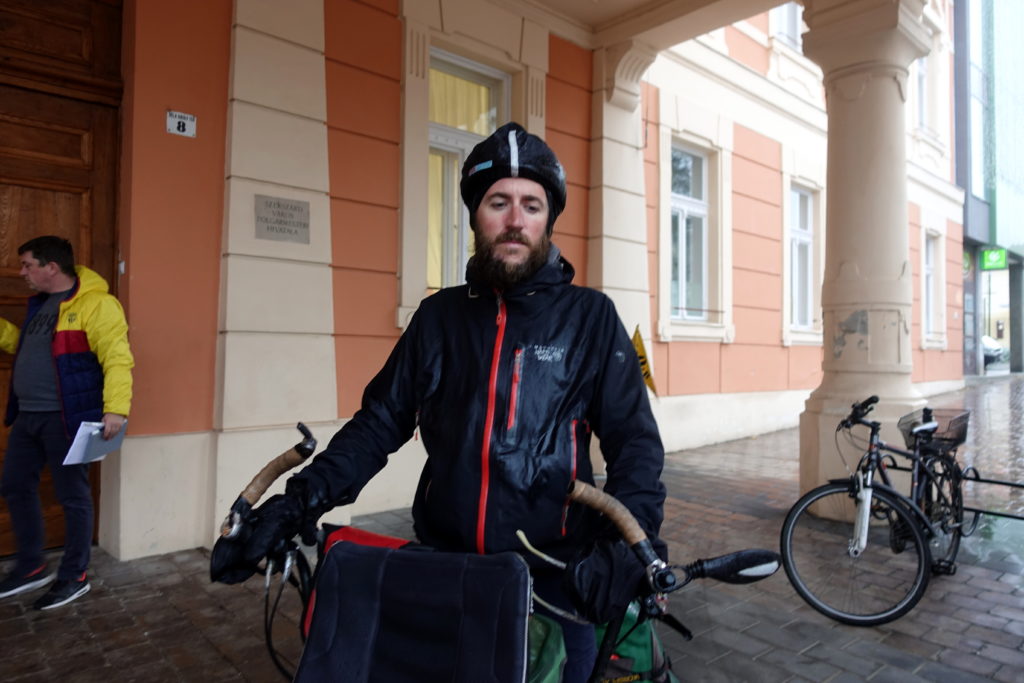
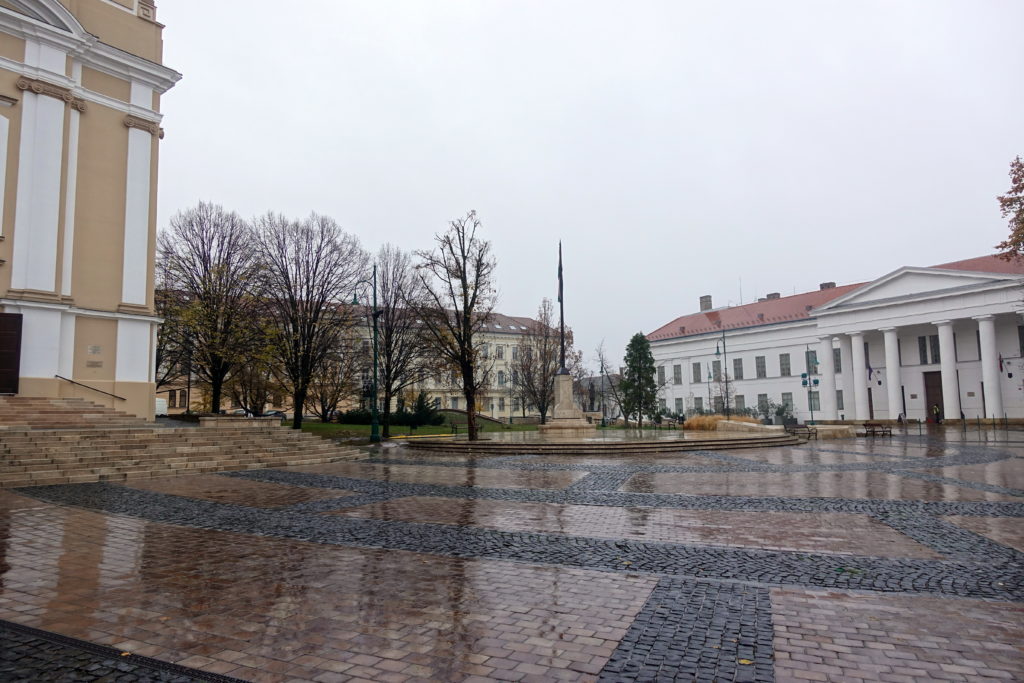
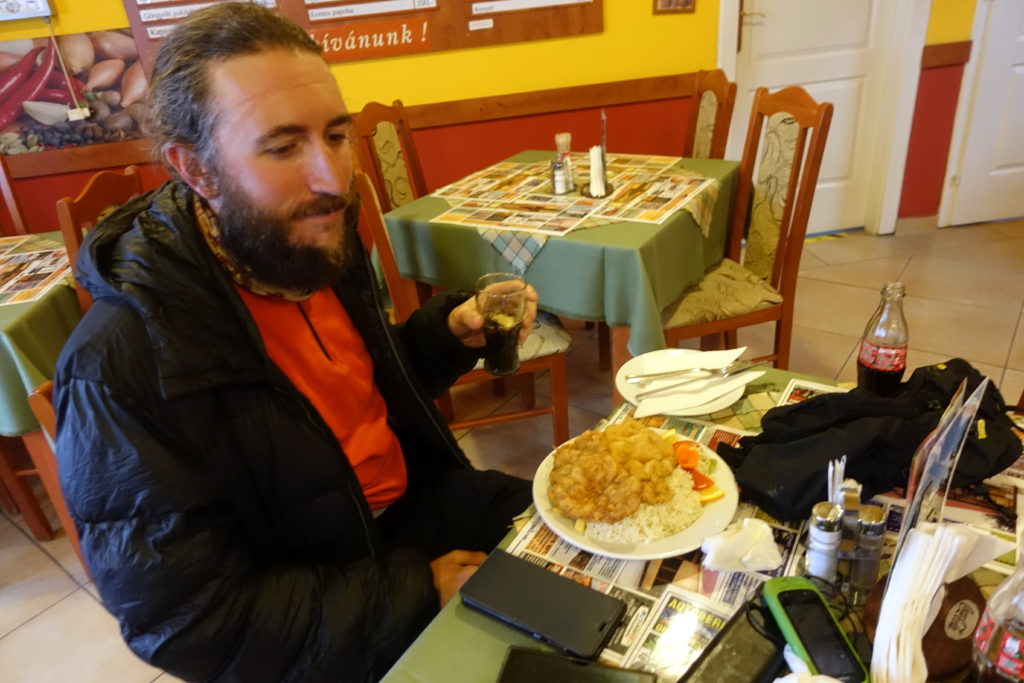
– leave at 9am
– shut-up and cycle non-stop until lunch
– when frozen enough, soaking wet and hungry stop in a local shack for lunch
– find a heater to try to dry gloves and jacket, possibly change the sweater, T-shirt or anything completely wet
– cycle non-stop with the sunset time in mind (i.e. avoid arriving after 3pm)
– spend the rest of the evening drying everything and huging the heaters at max level
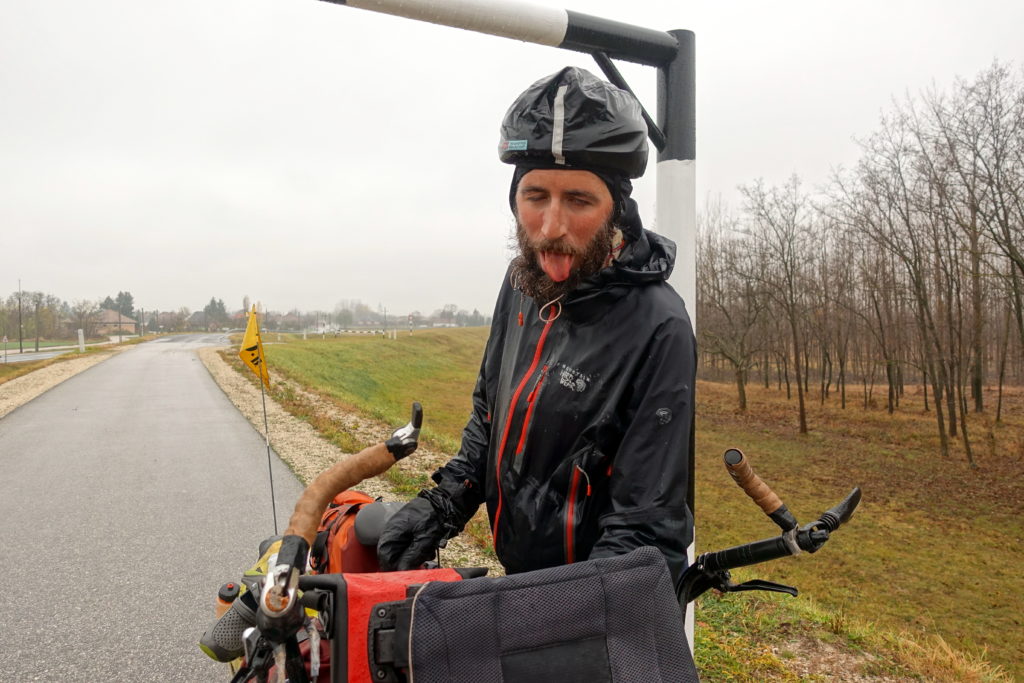
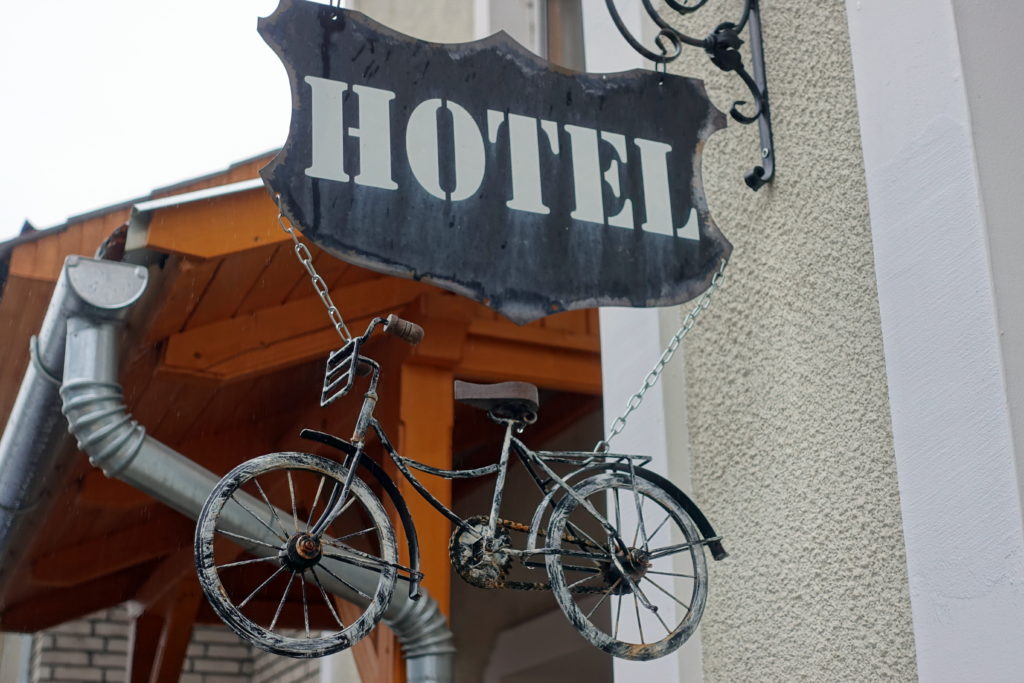
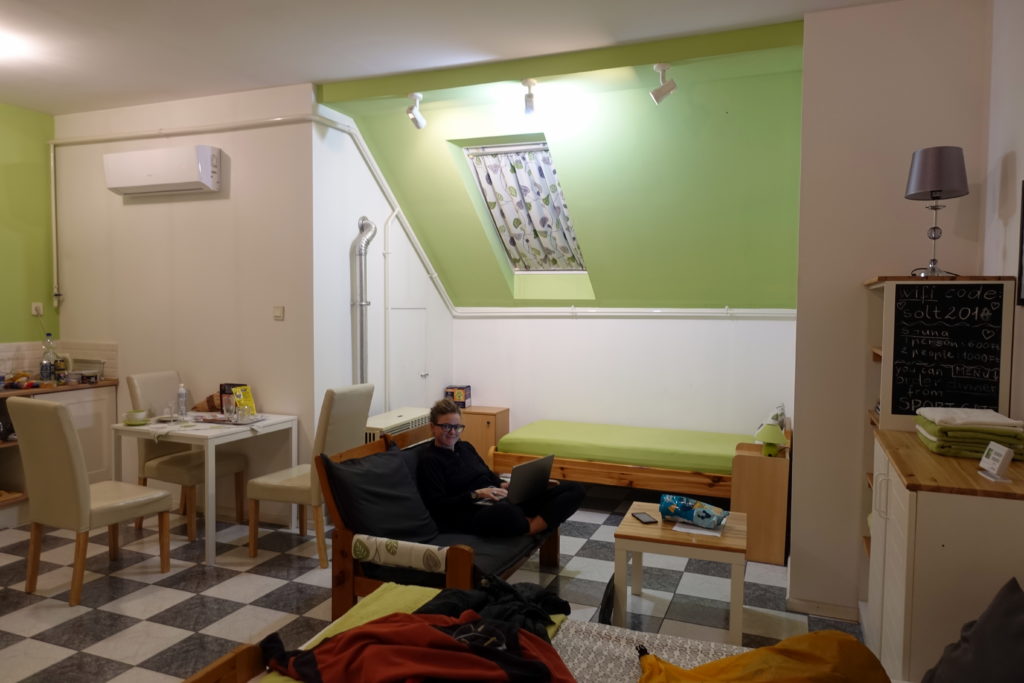
For the next two days as we rode towards Budapest, the weather didn’t improve – it remained cold, gray, and rainy. Out of Szekszárd, we rejoined the Danube and crossed onto the east side and followed the mix of bike lanes and roads into the capital Budapest. We attempted to stay out in the rain when biking wasn’t necessary, so we cycled non-stop to an indoor place for lunch, and then again to the apartment for the night. Nothing very exciting on those flatlands, more and more traffic getting closer to Budapest, and as usual the chaotic and totally uninteresting suburbs before finally reaching the much more bike friendly capital of Hungary. When we arrived at our place to stay, we somewhat felt bad for bringing soaking bags and clothes into the room, but… oh well, we needed a place to stay – and we tend to have less remorse in large hotels than guesthouses or B&Bs (and we are super cautious when invited or Warmshowers!). As we arrived into Budapest, we followed a bike lane along the Danube and into the heart of the city. It was nice to see grand buildings pop up out of the more modern suburban dwellings as we approached our hotel for the evening.
